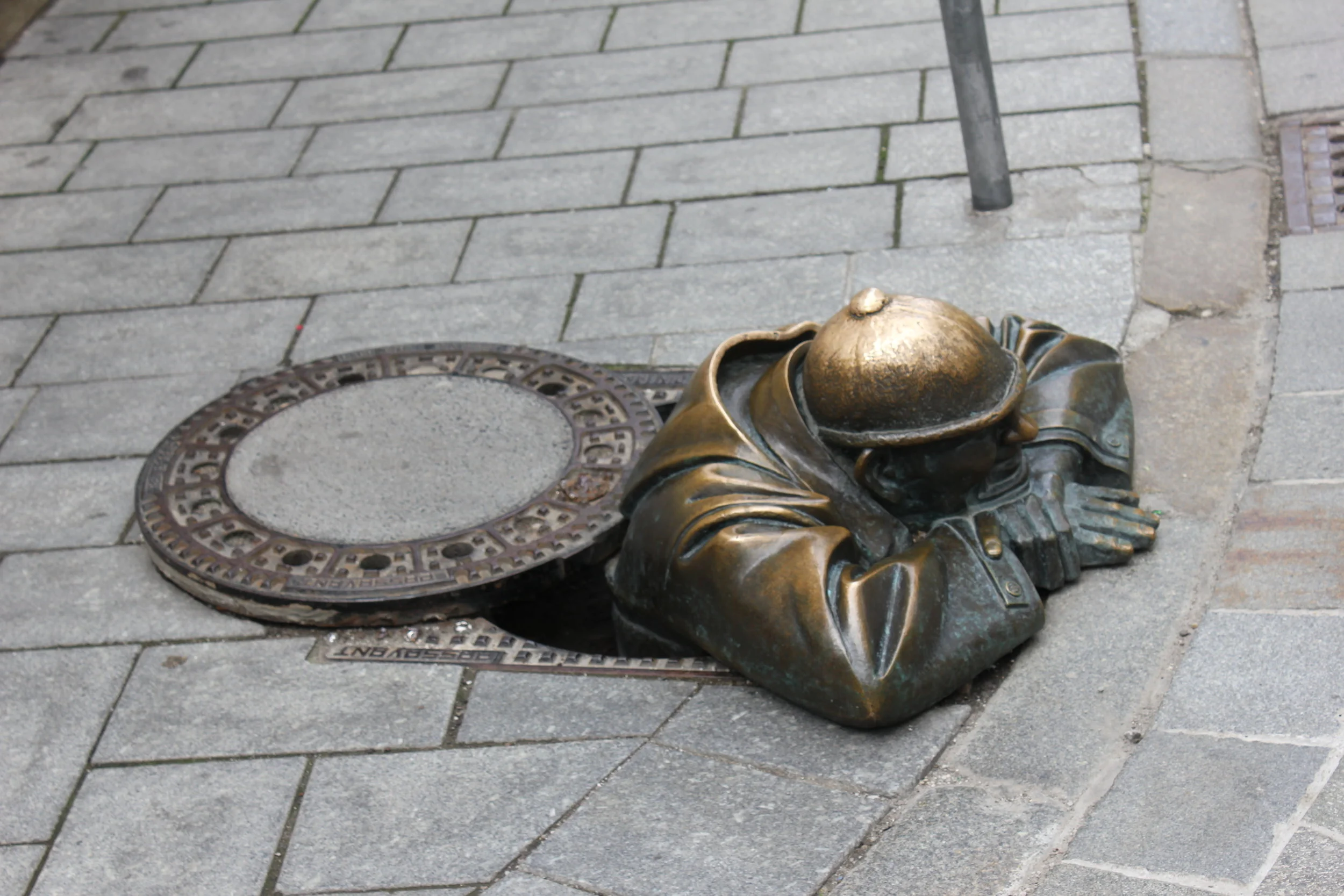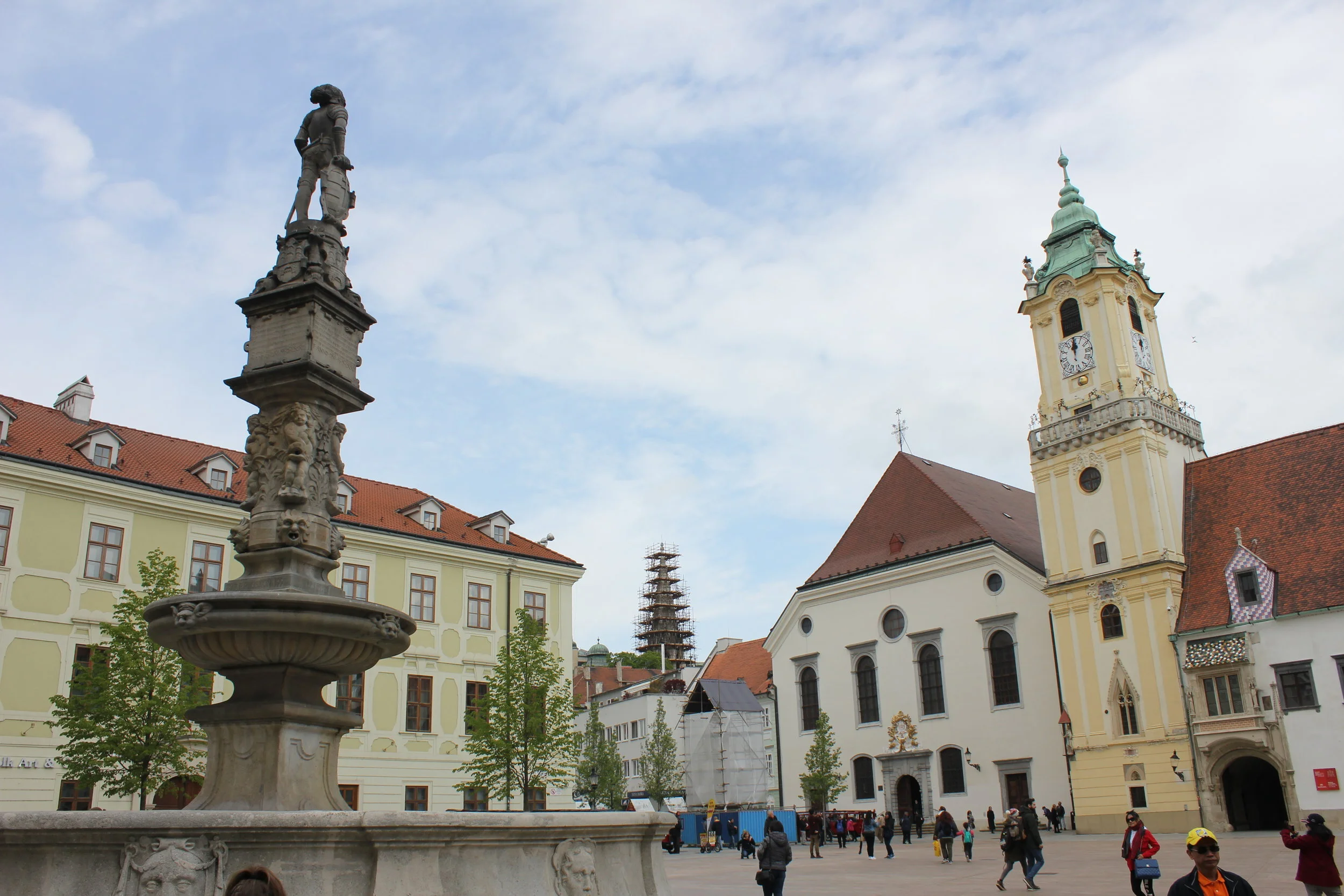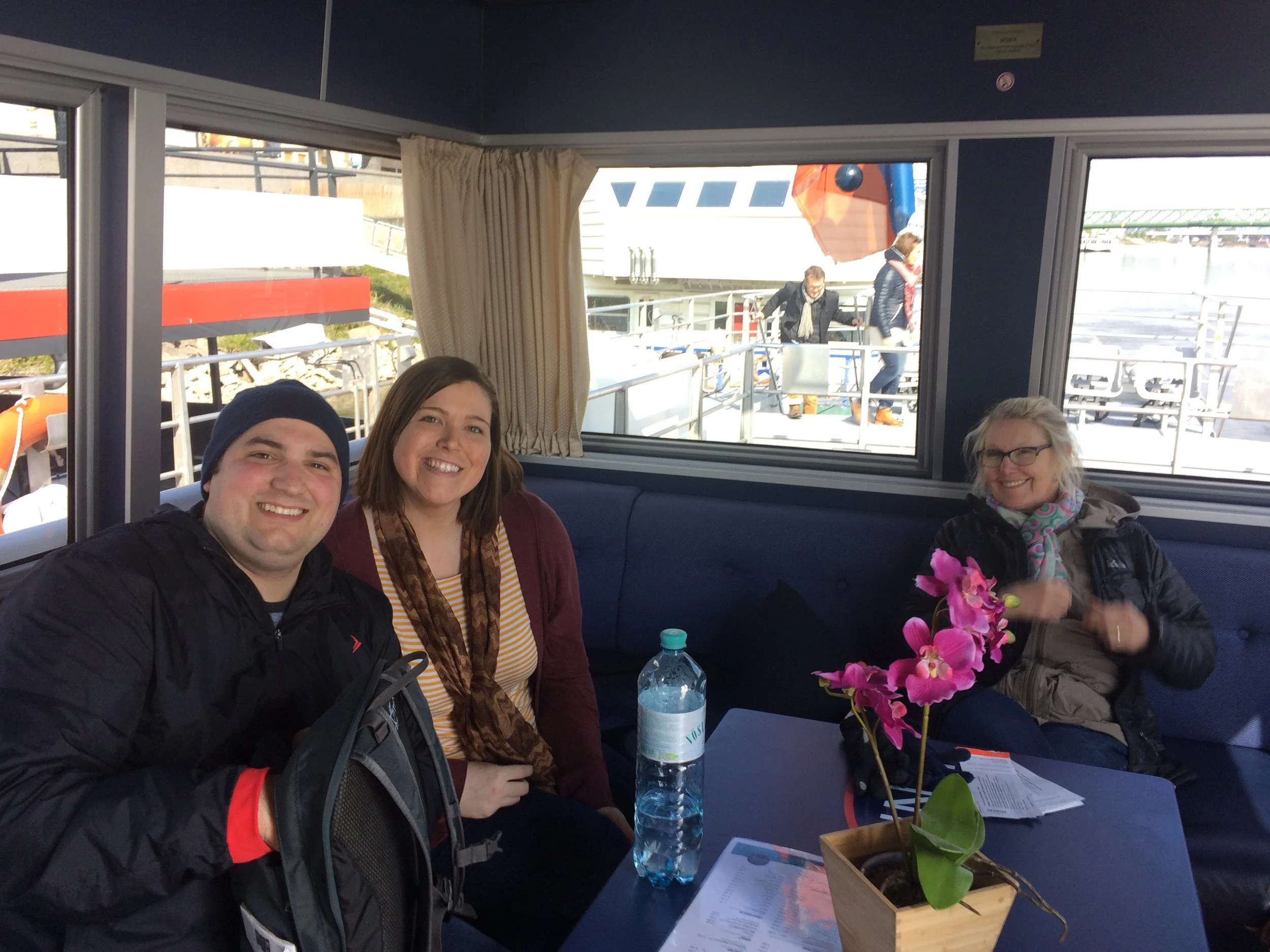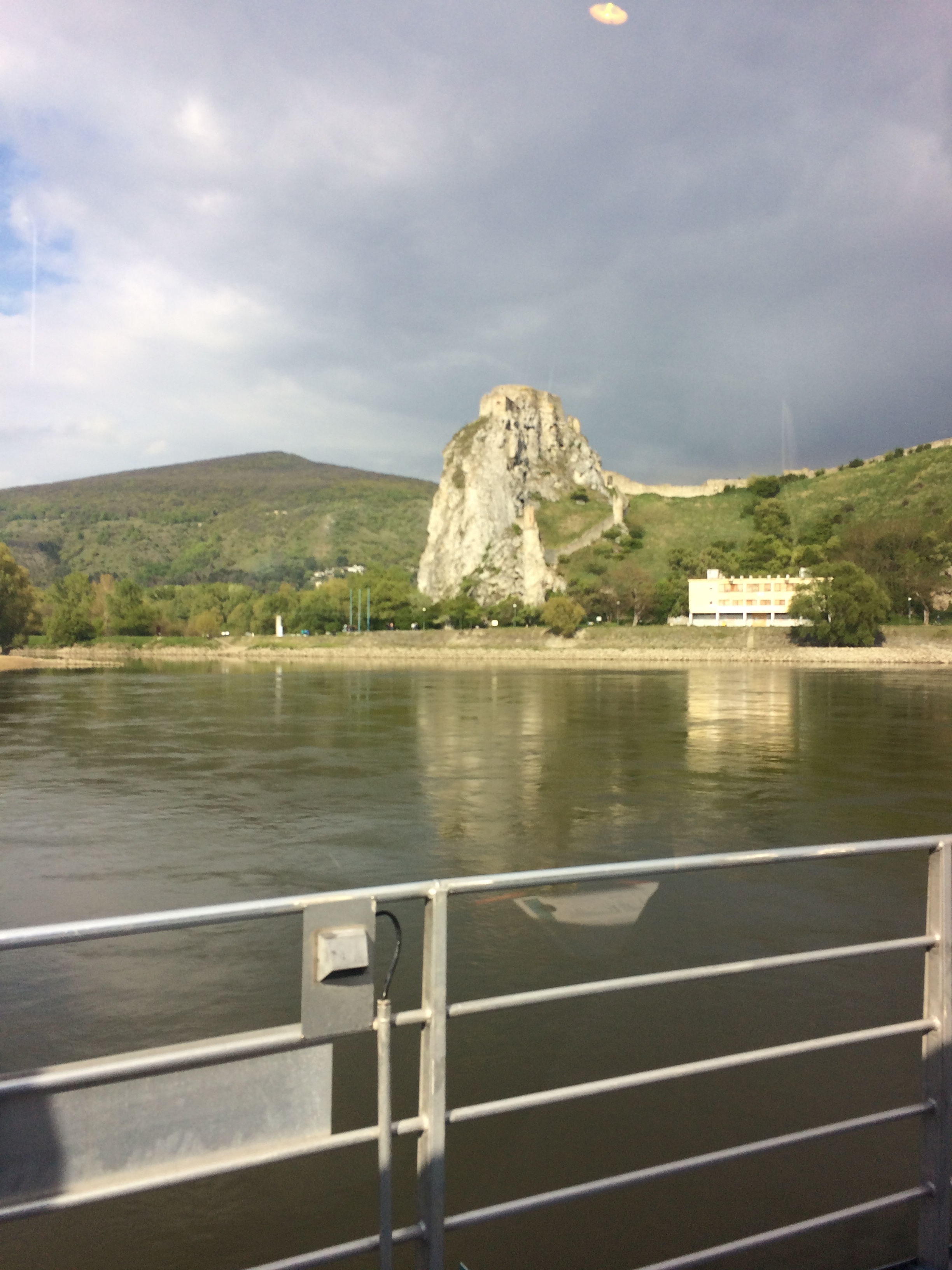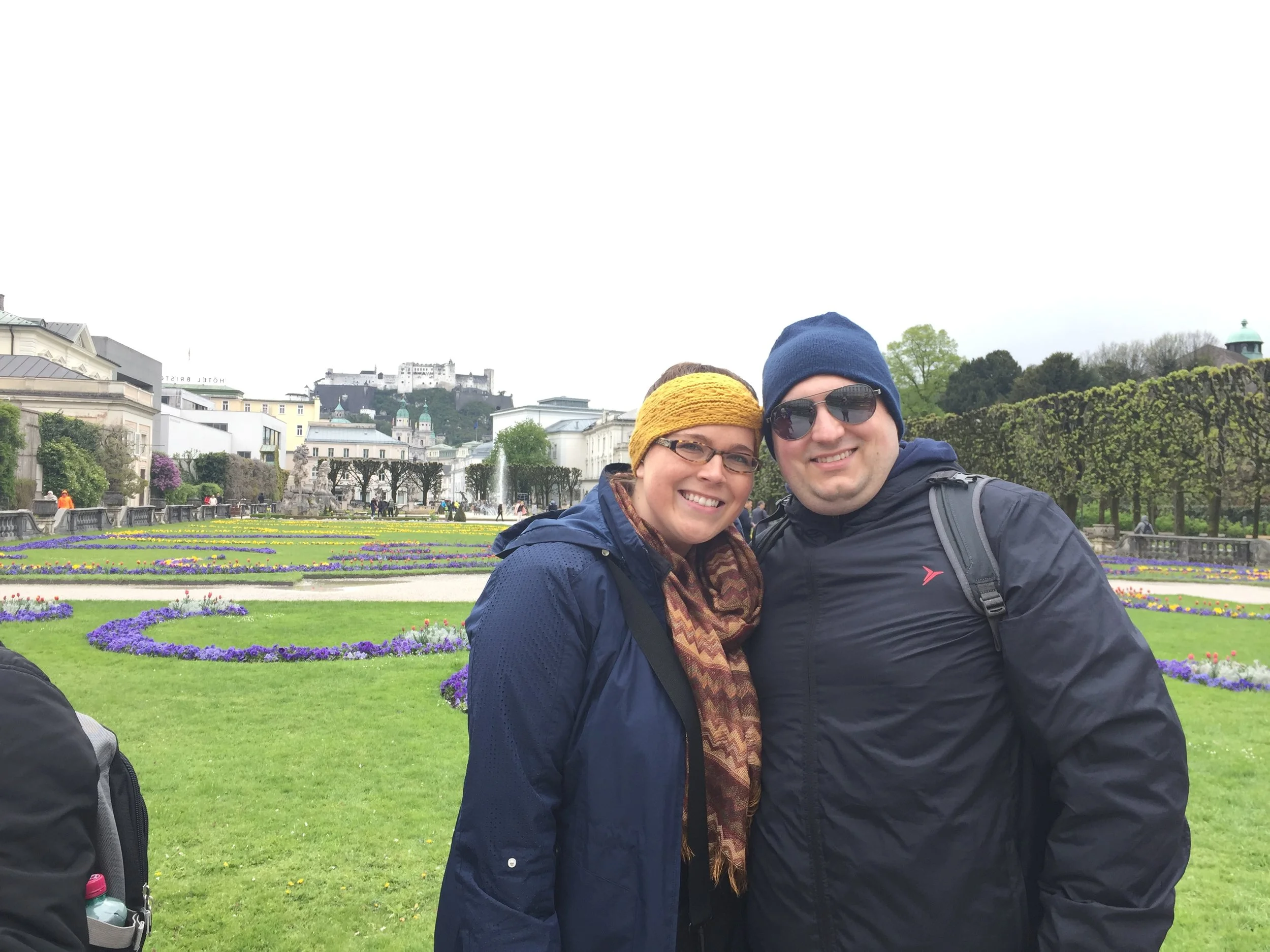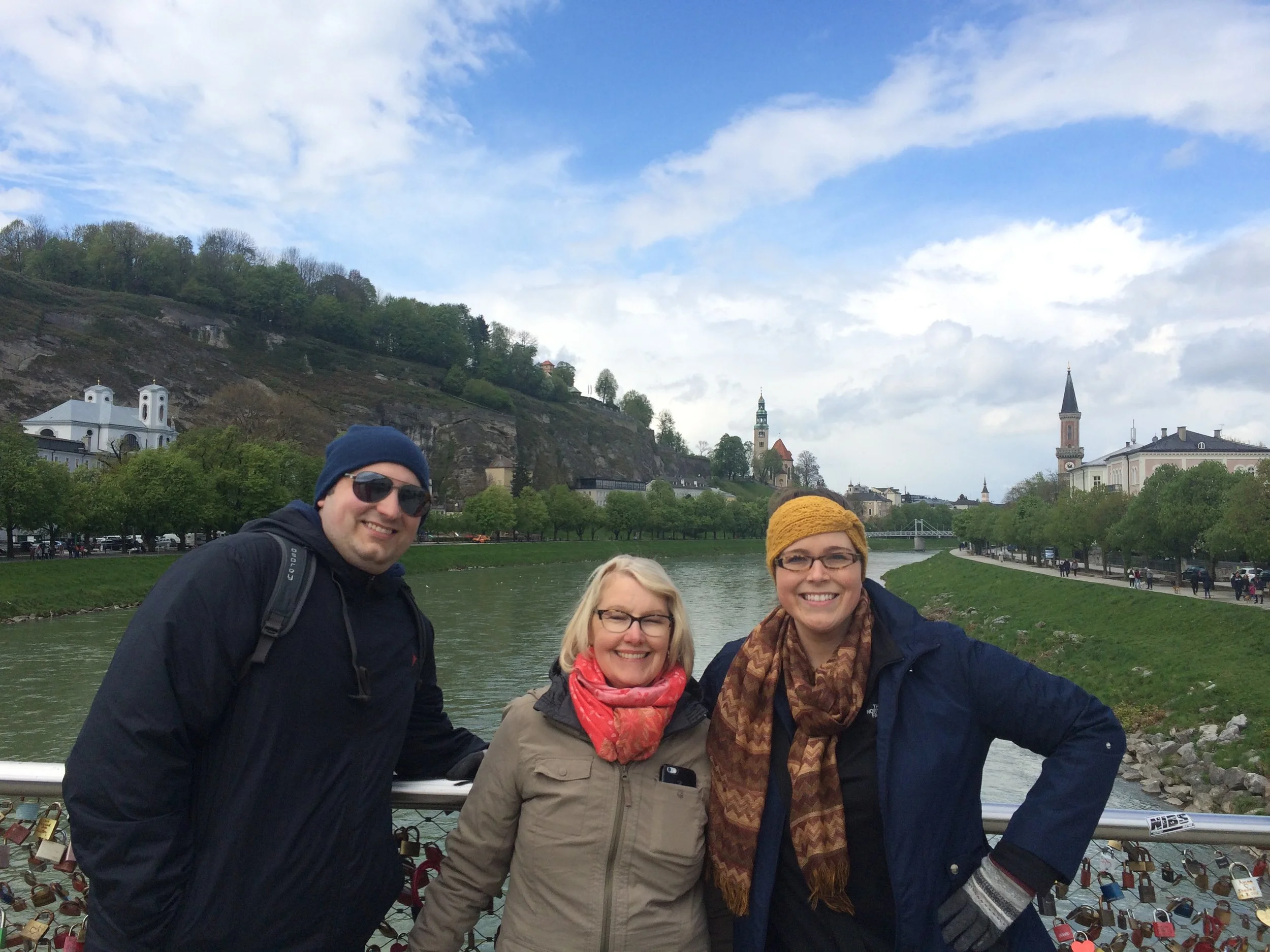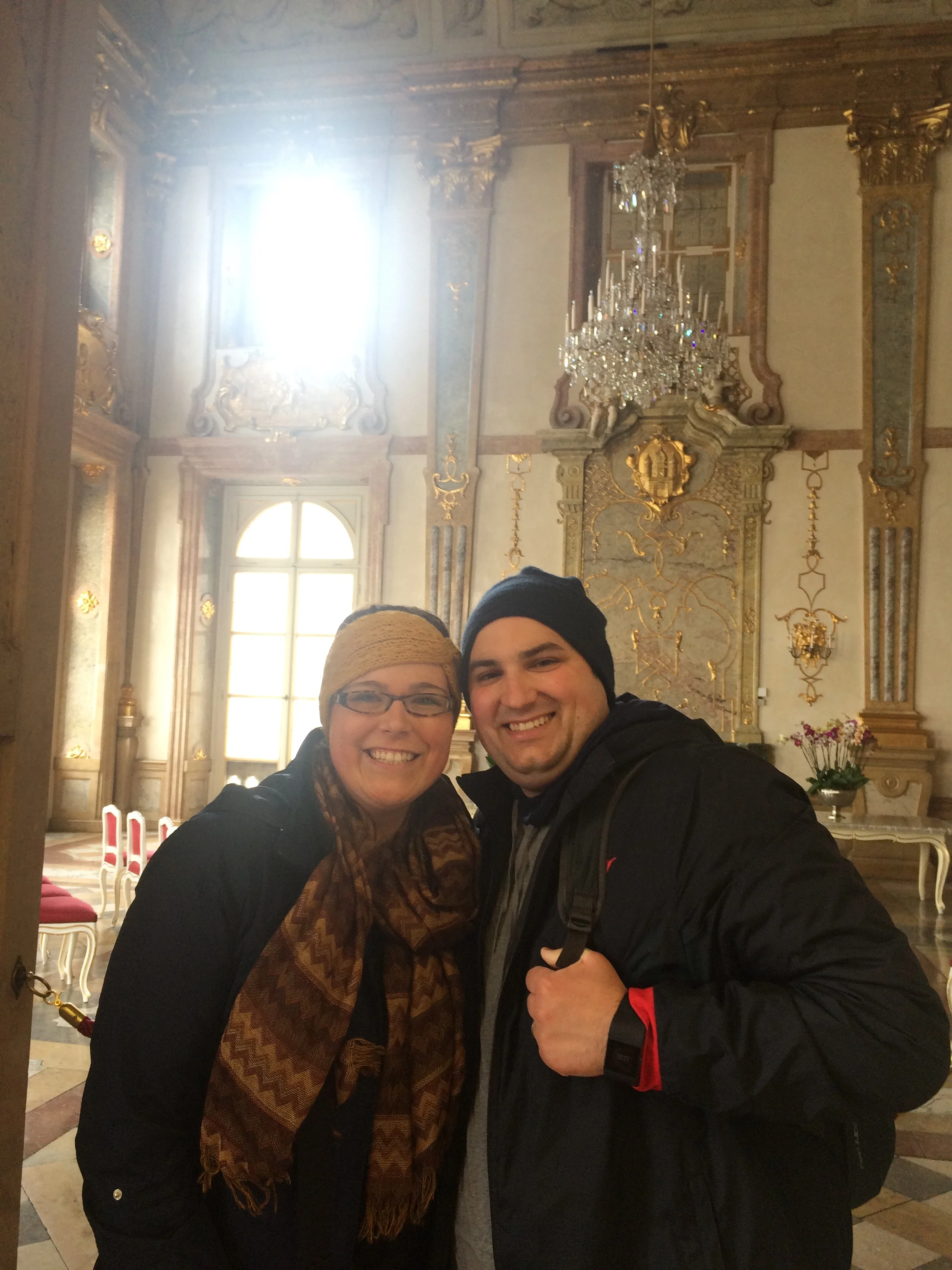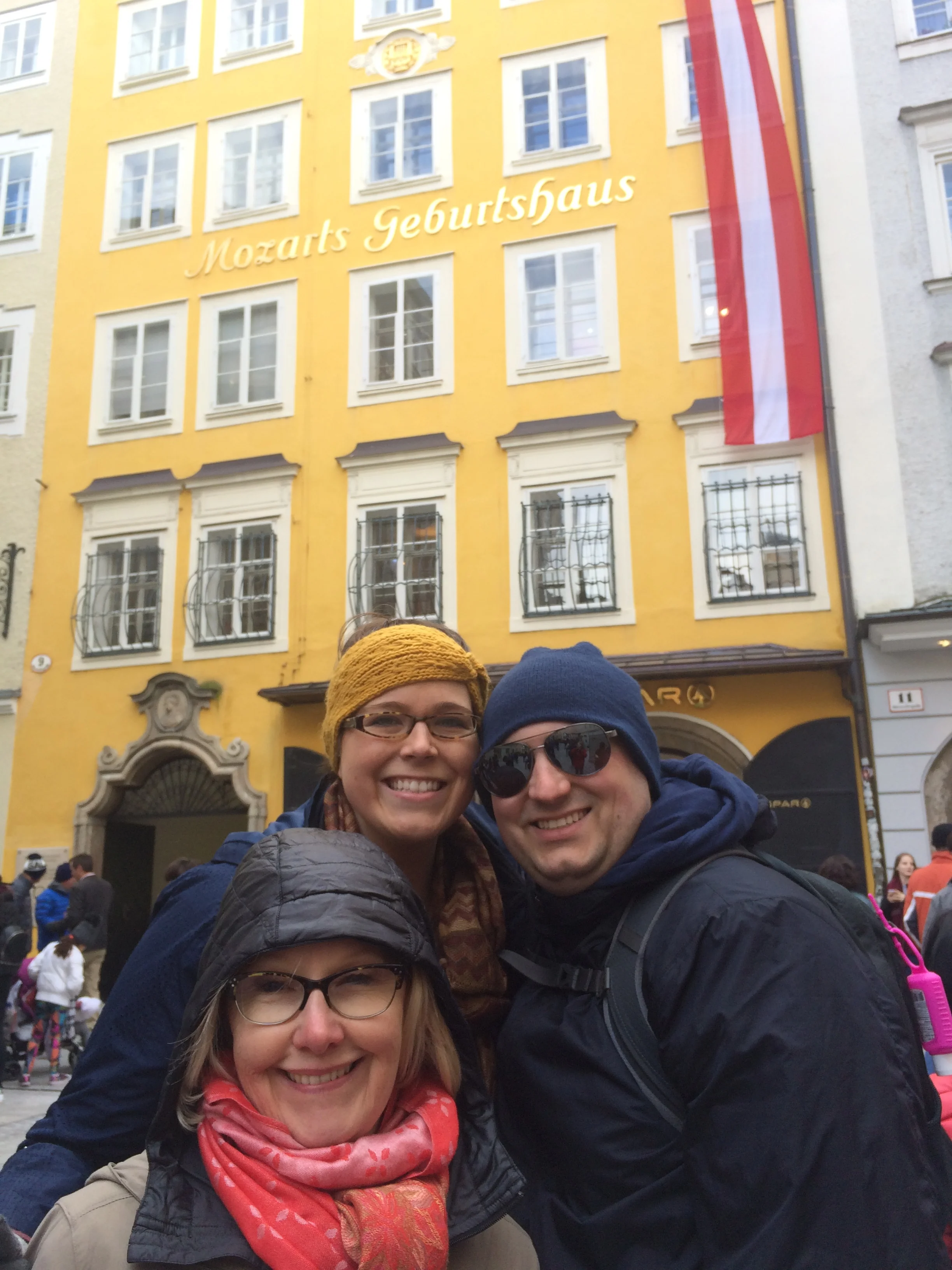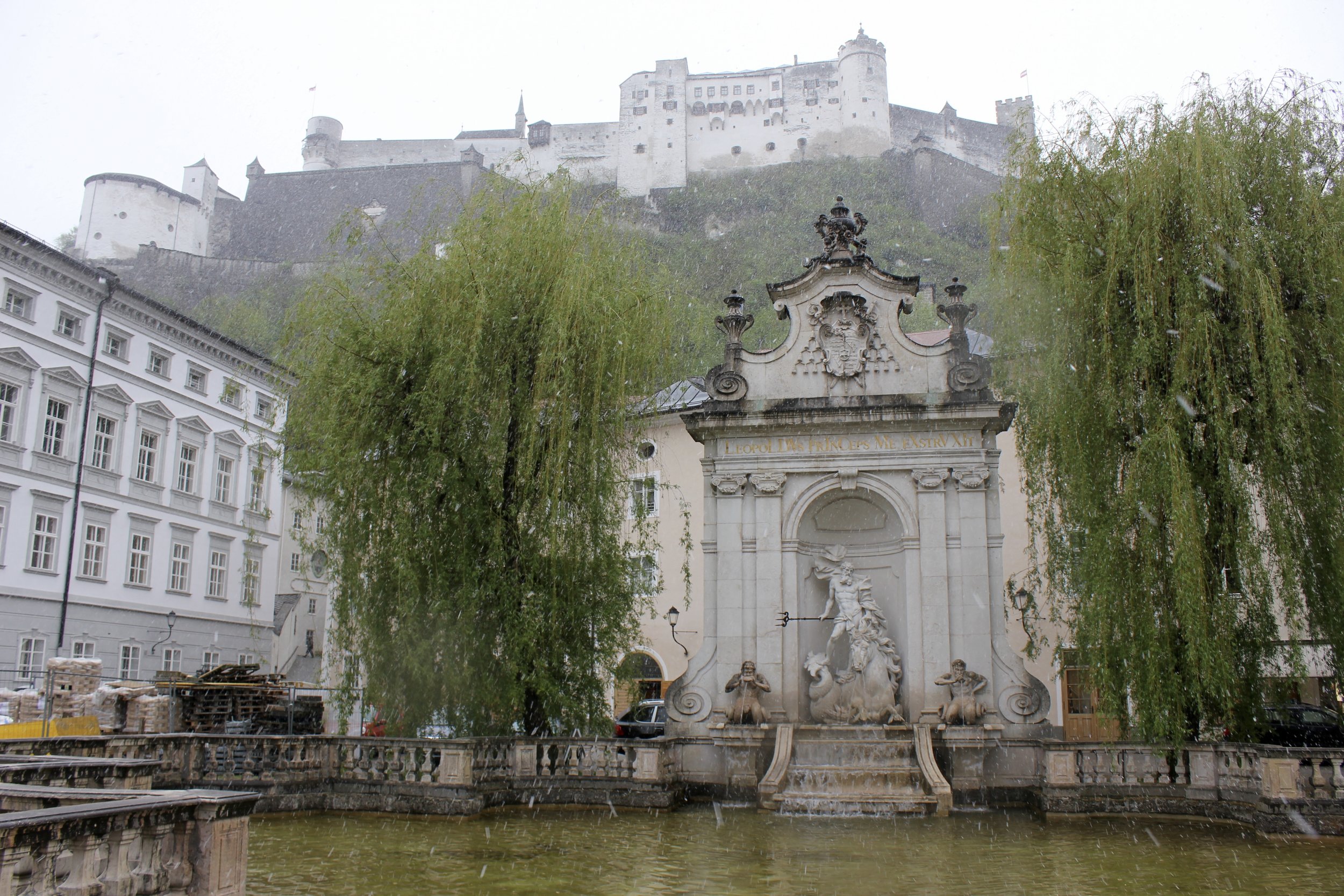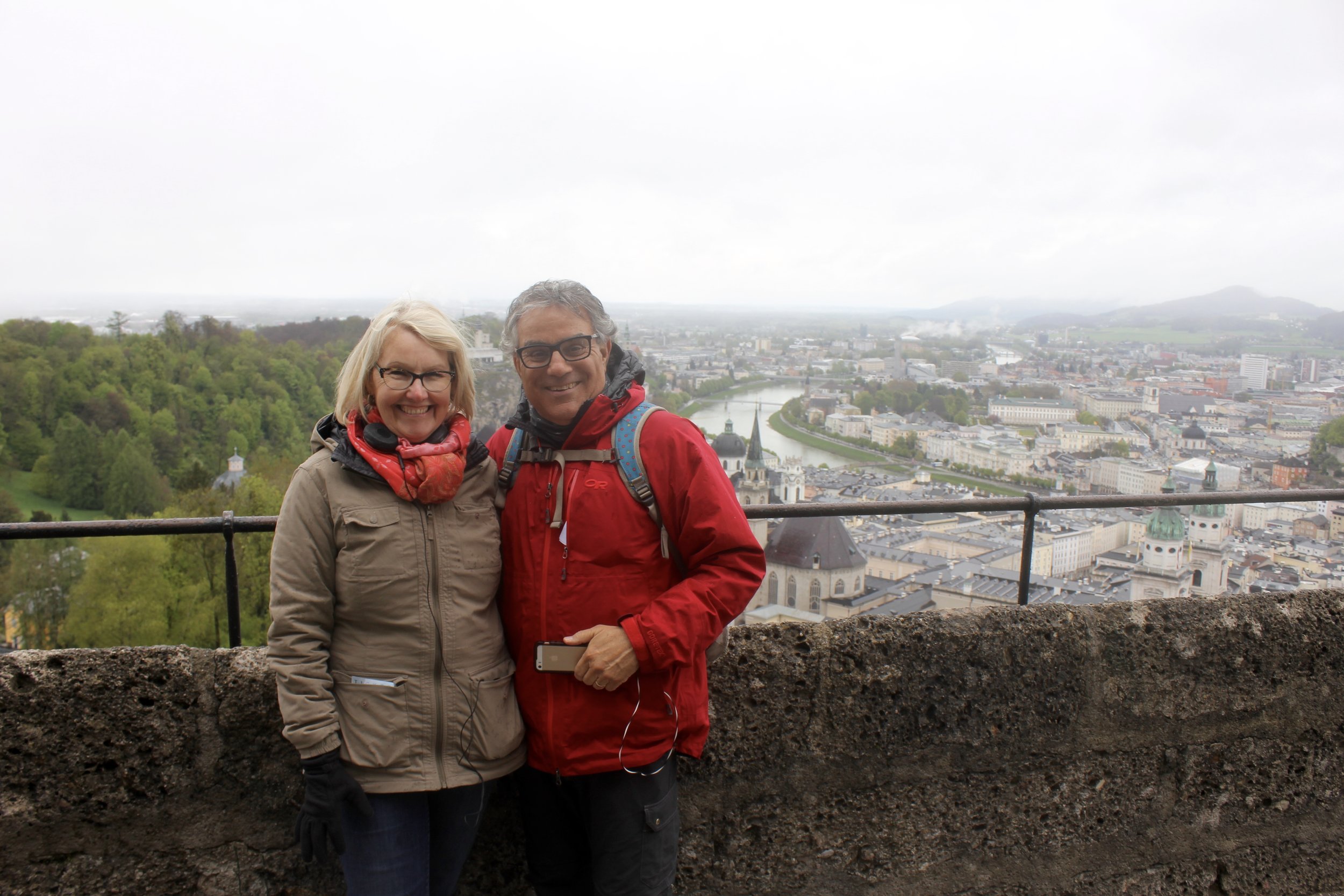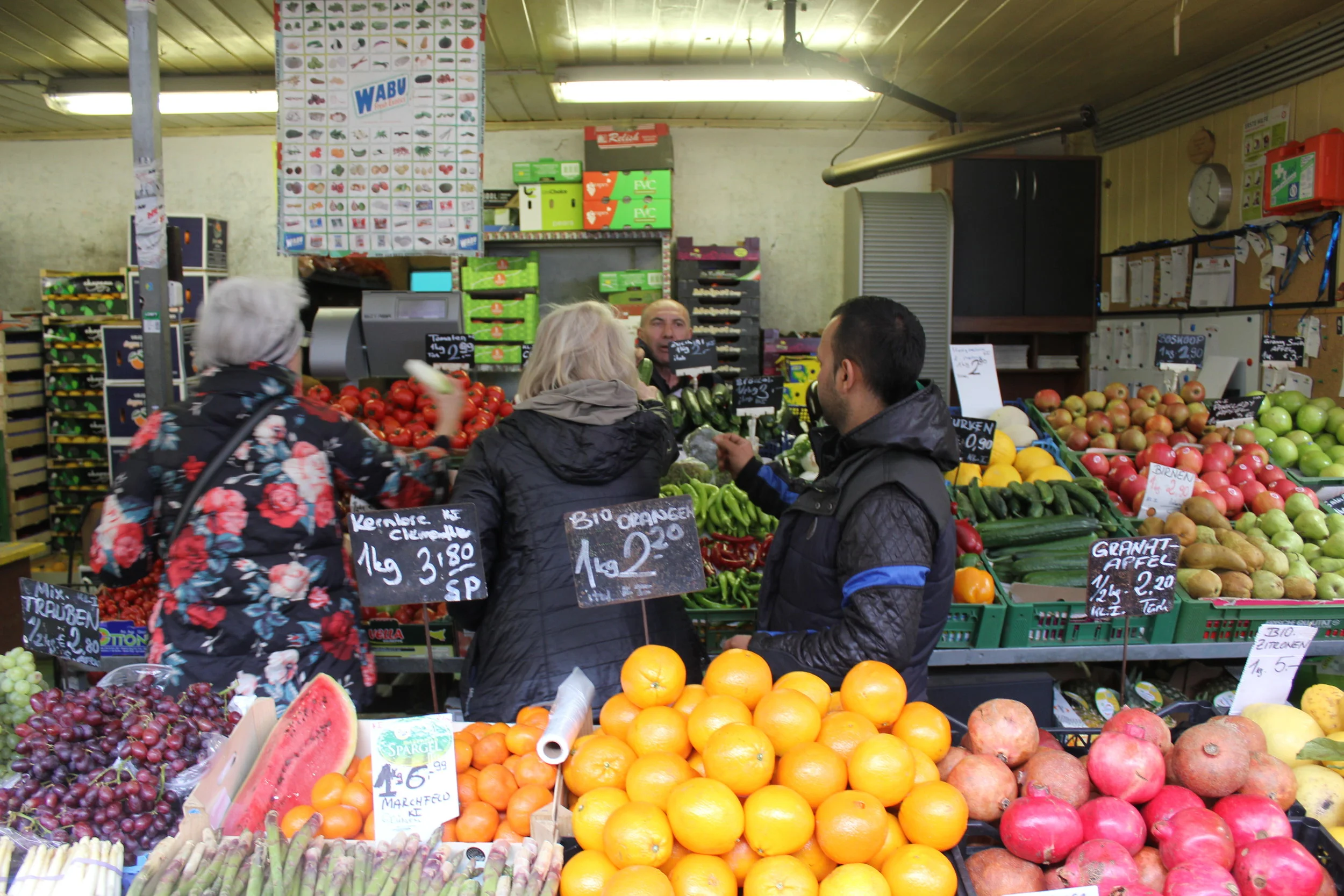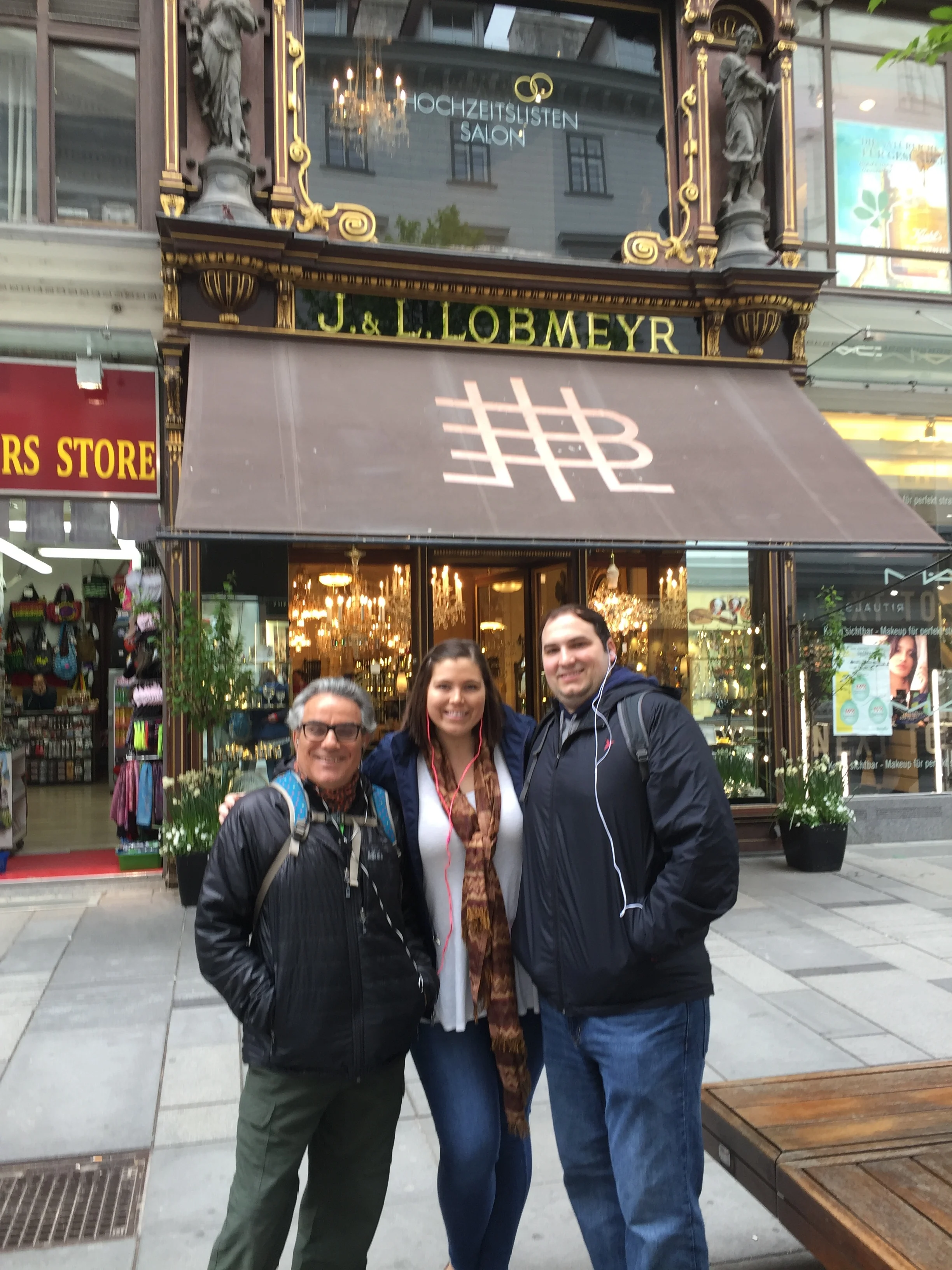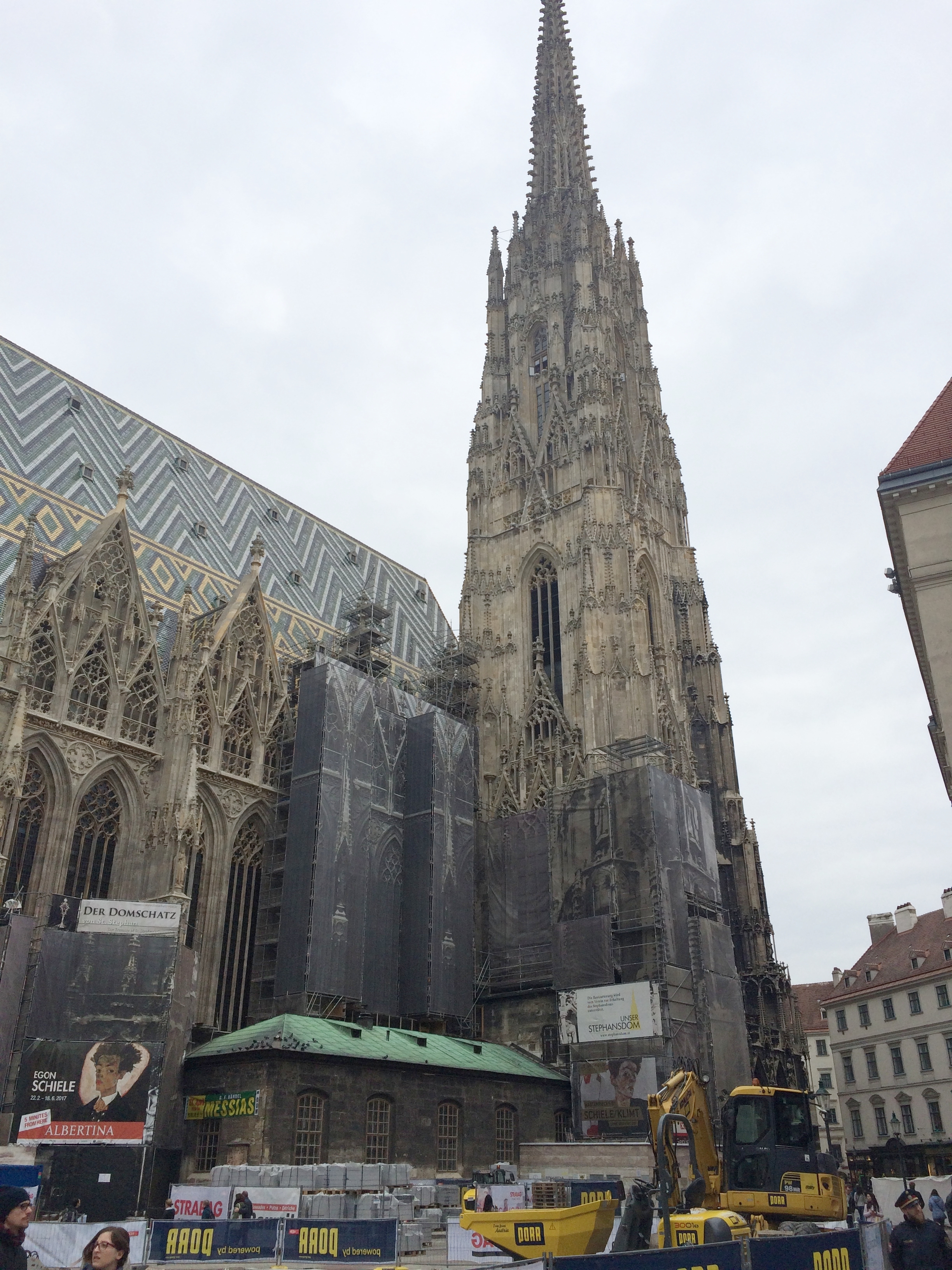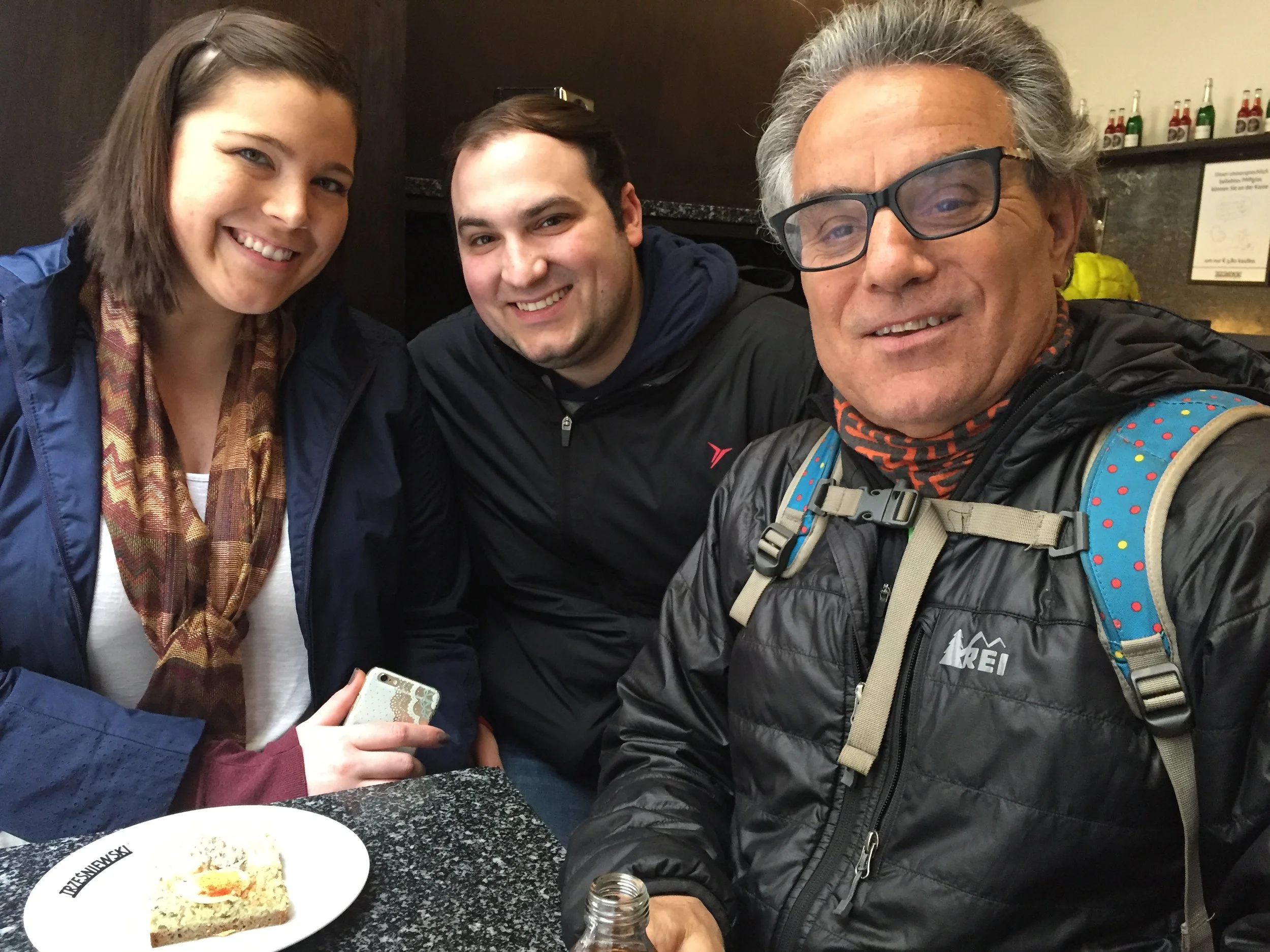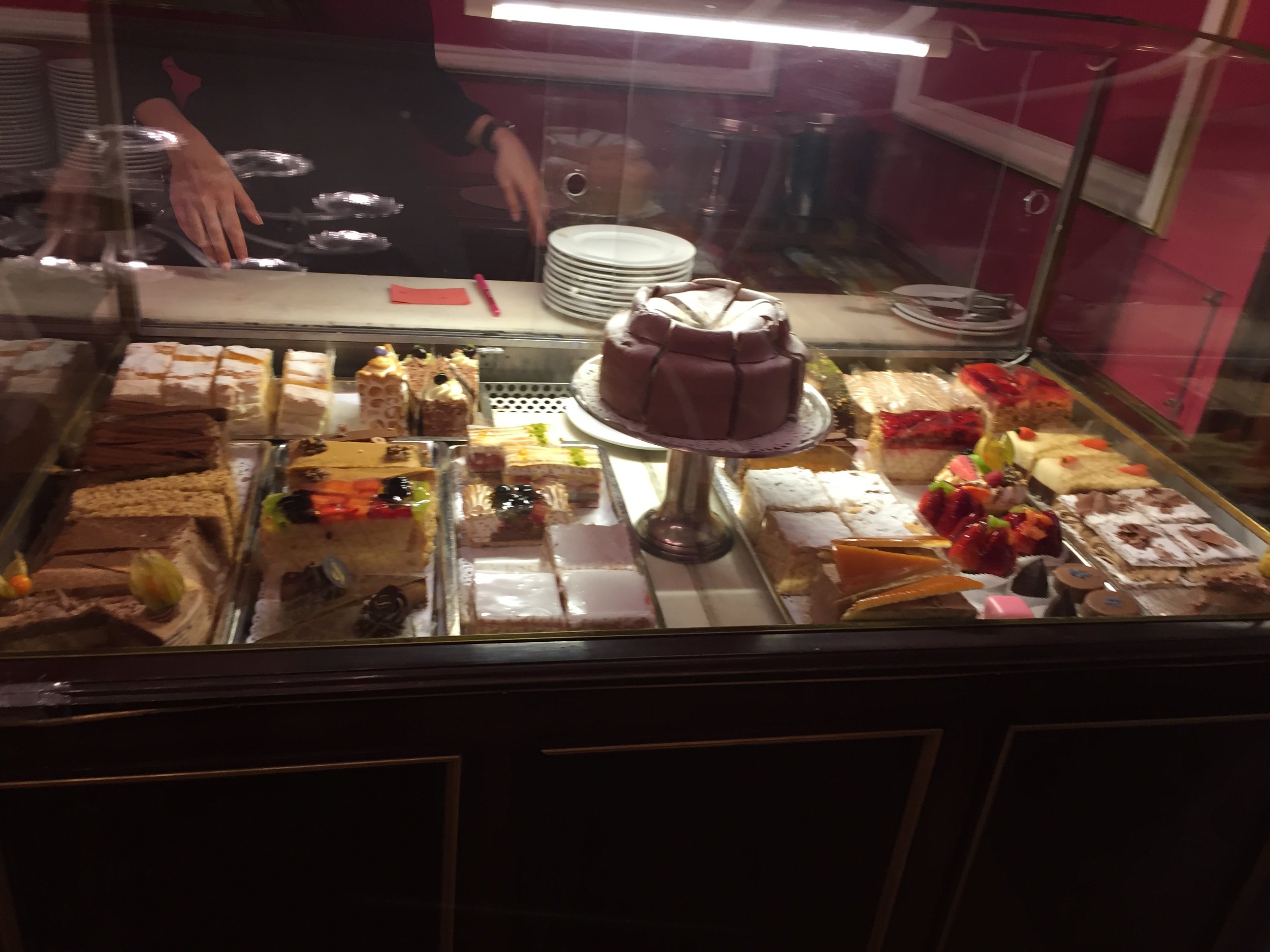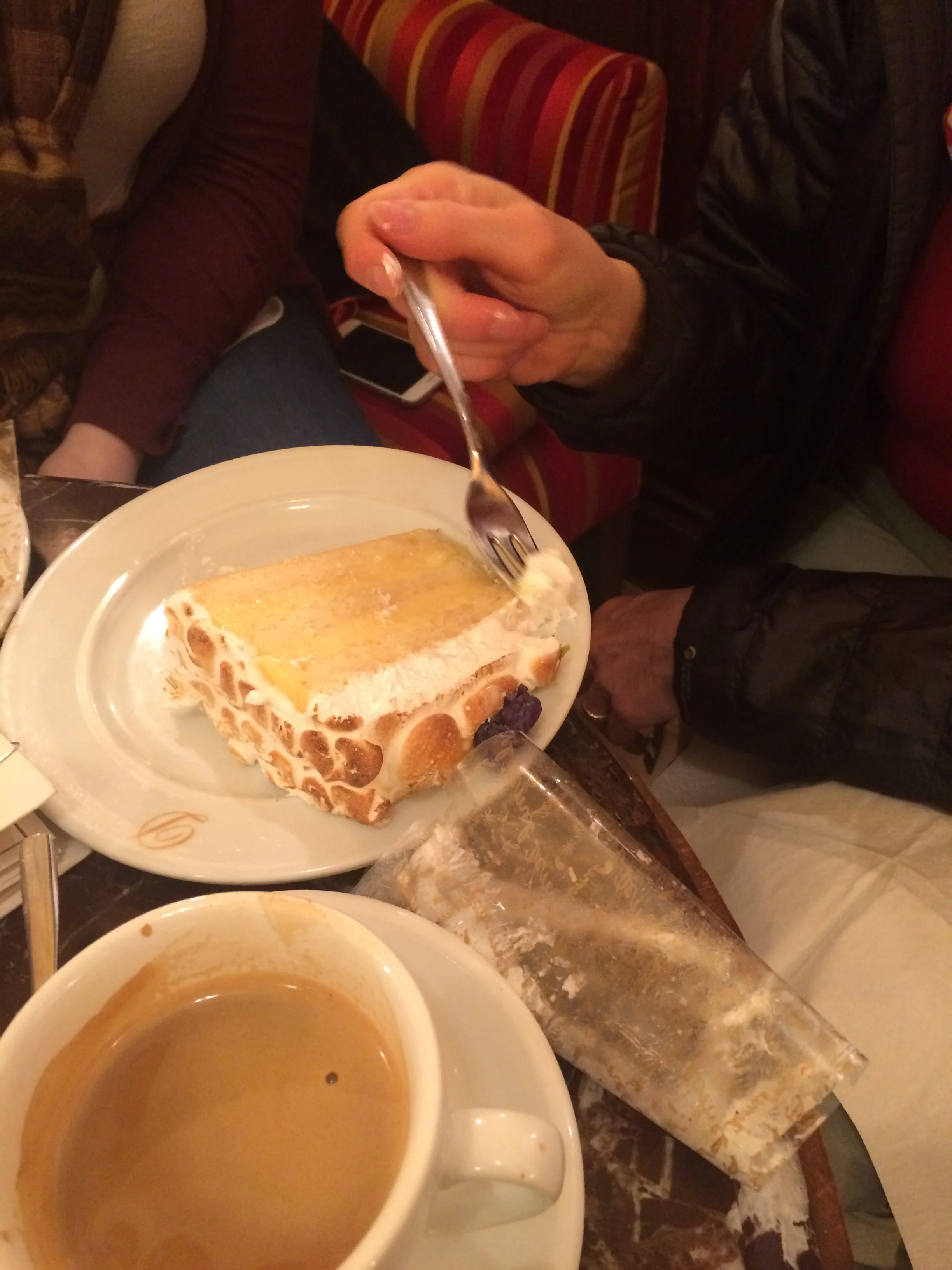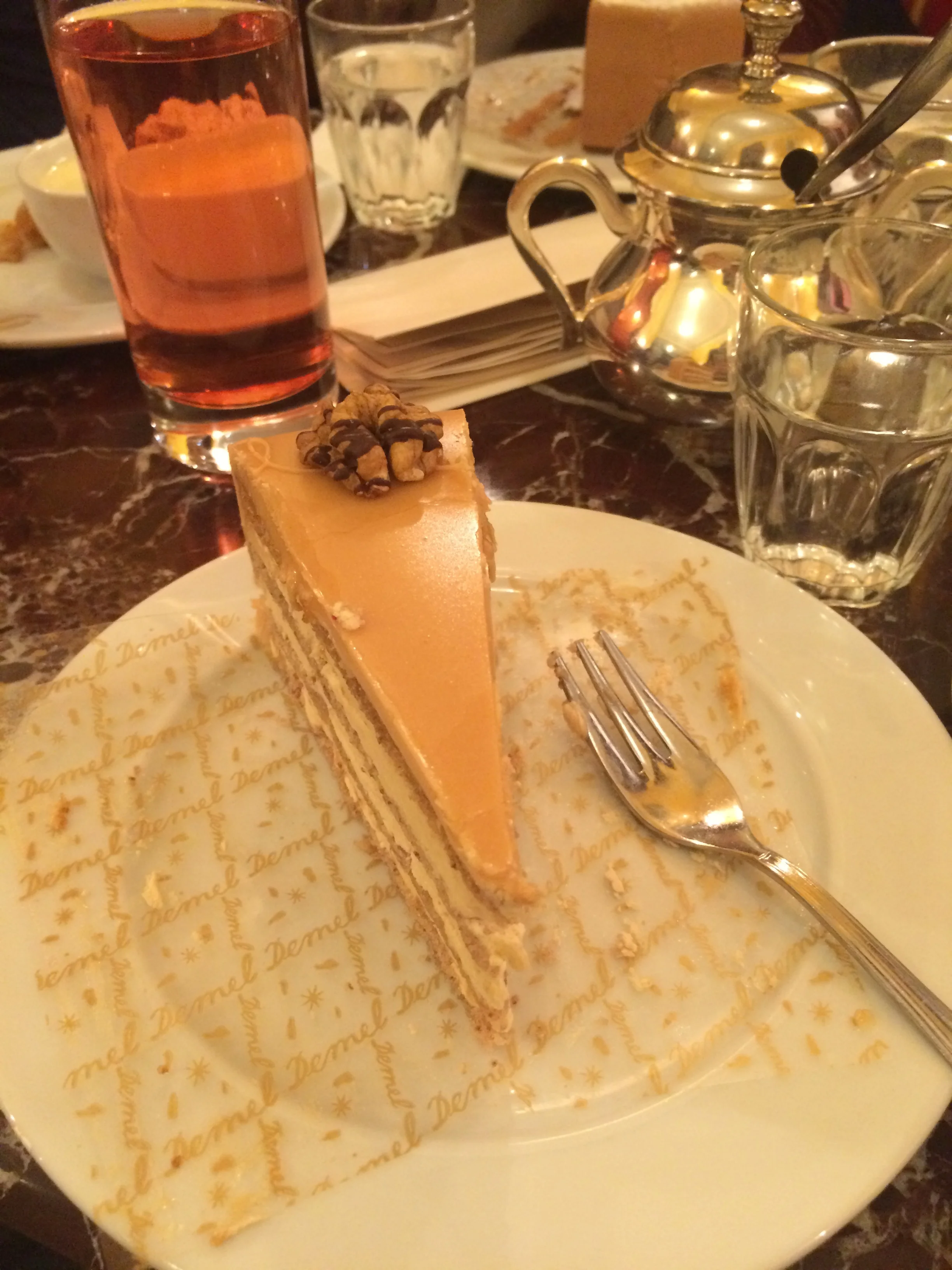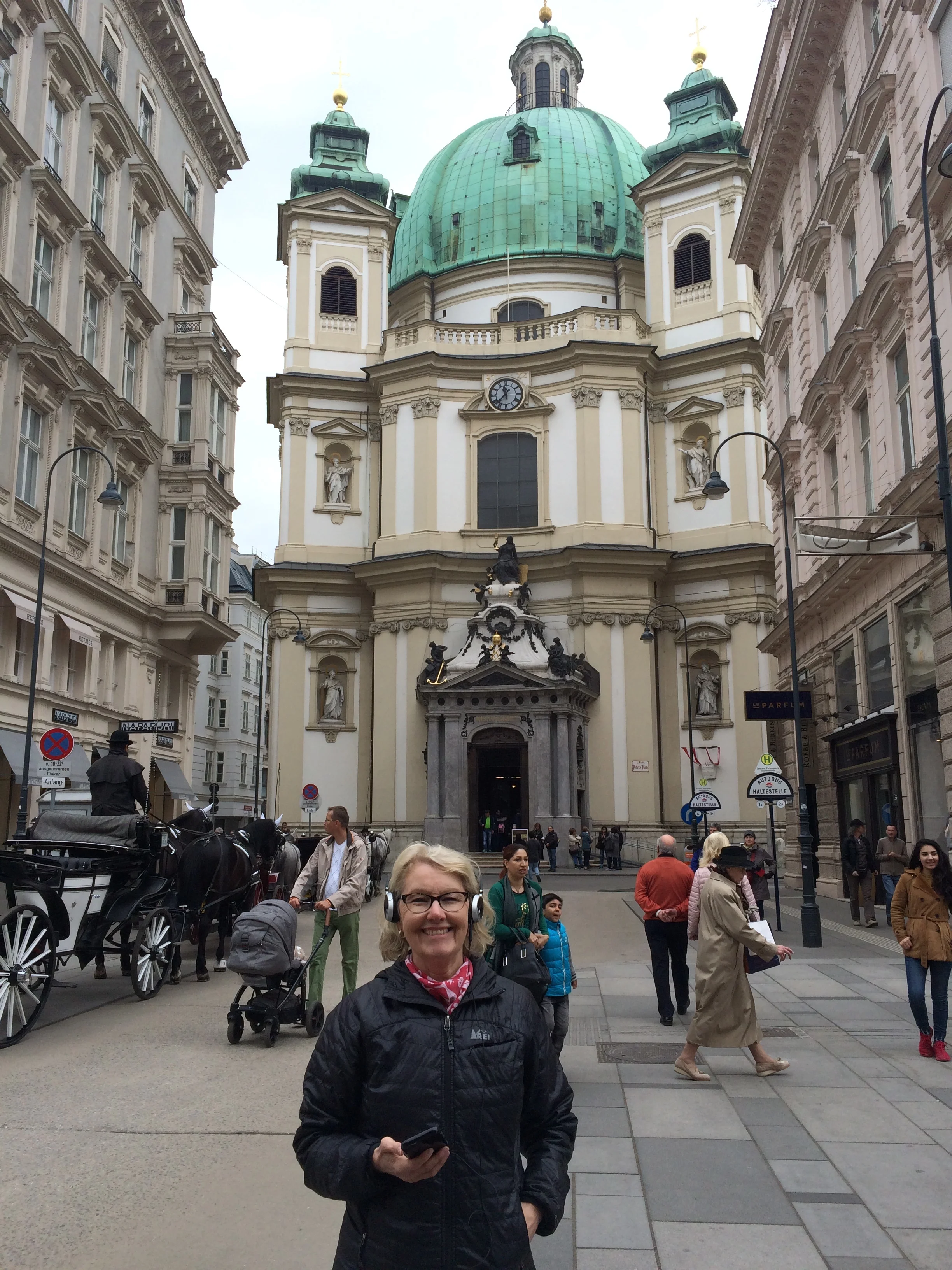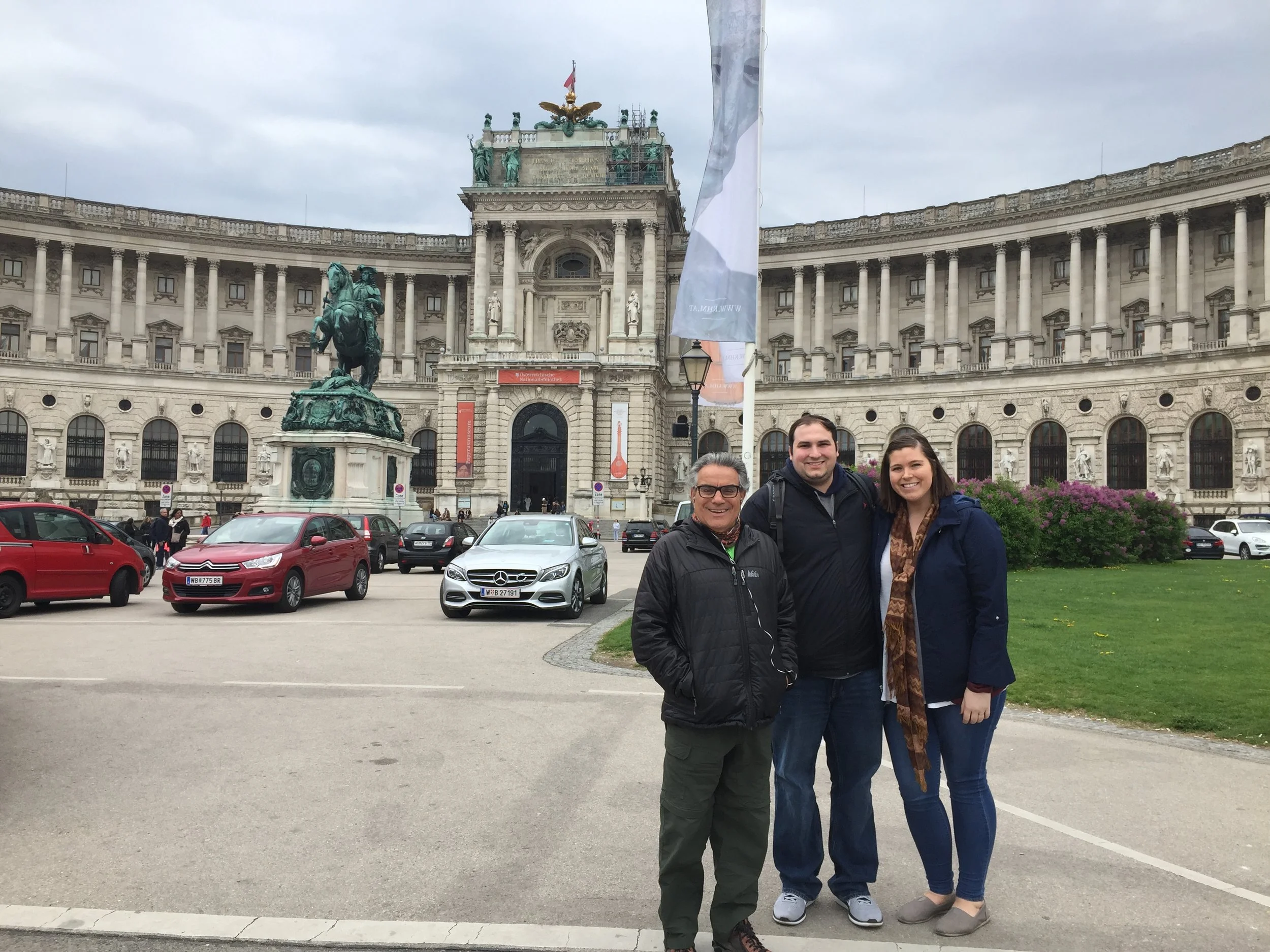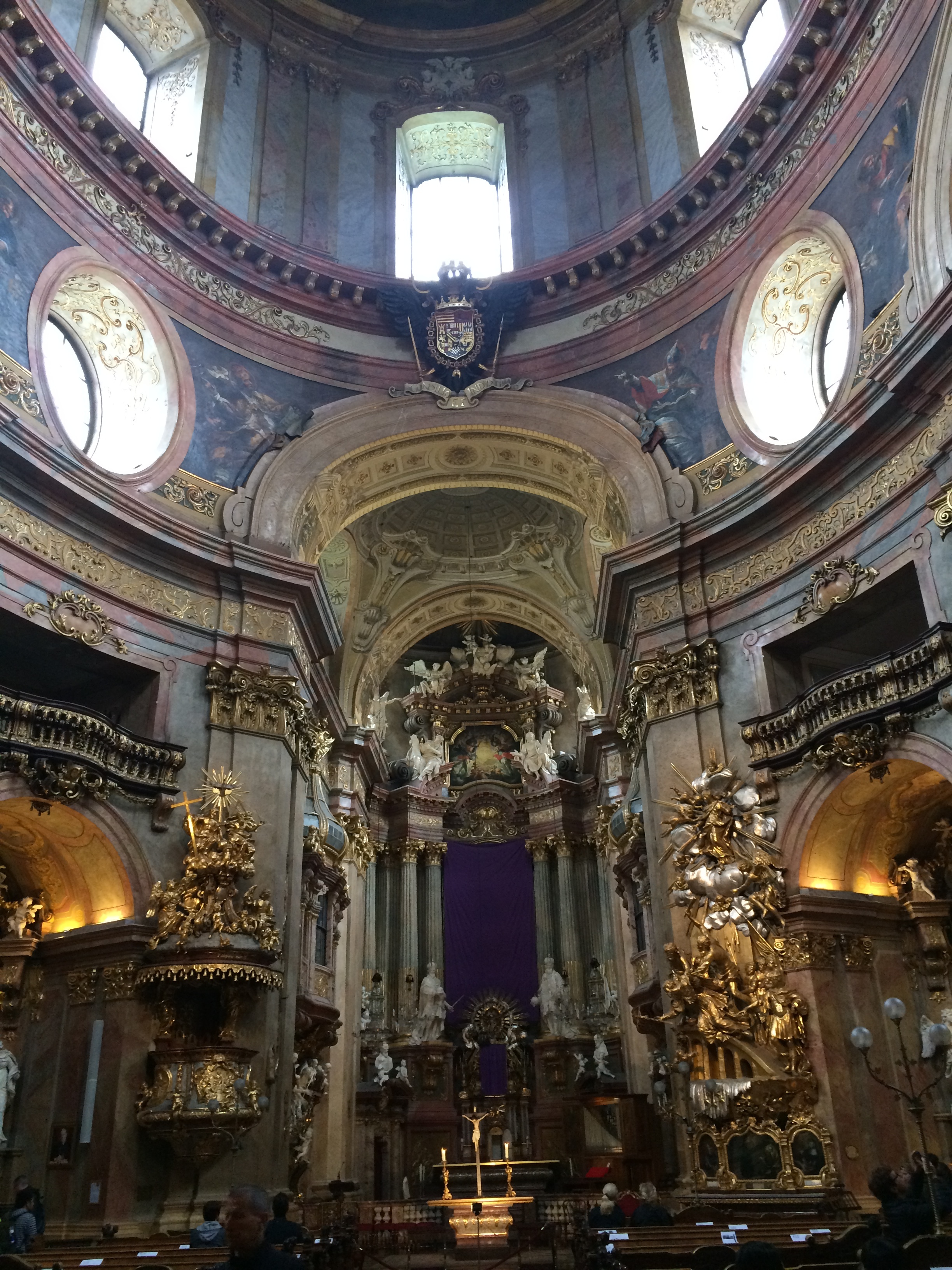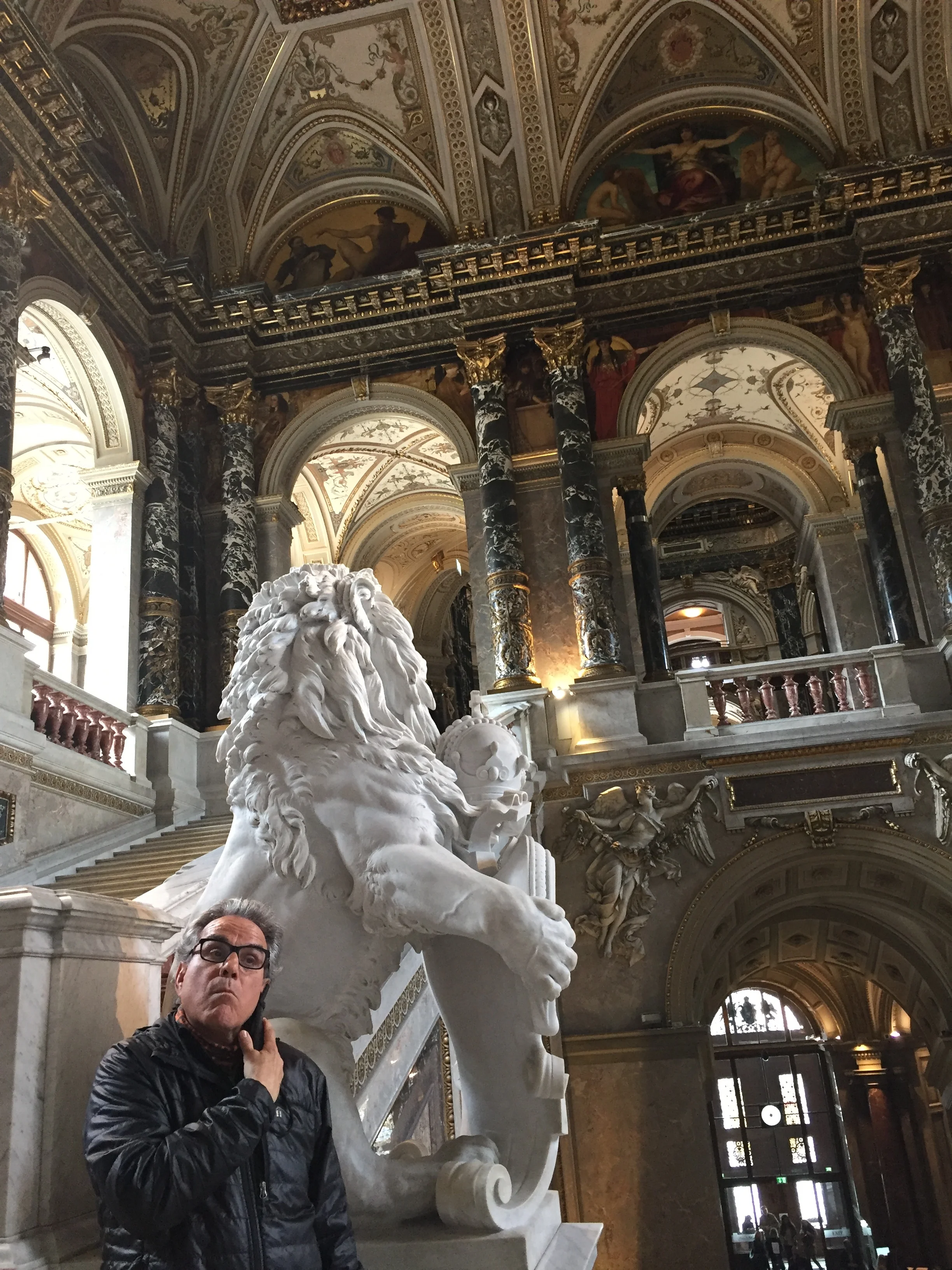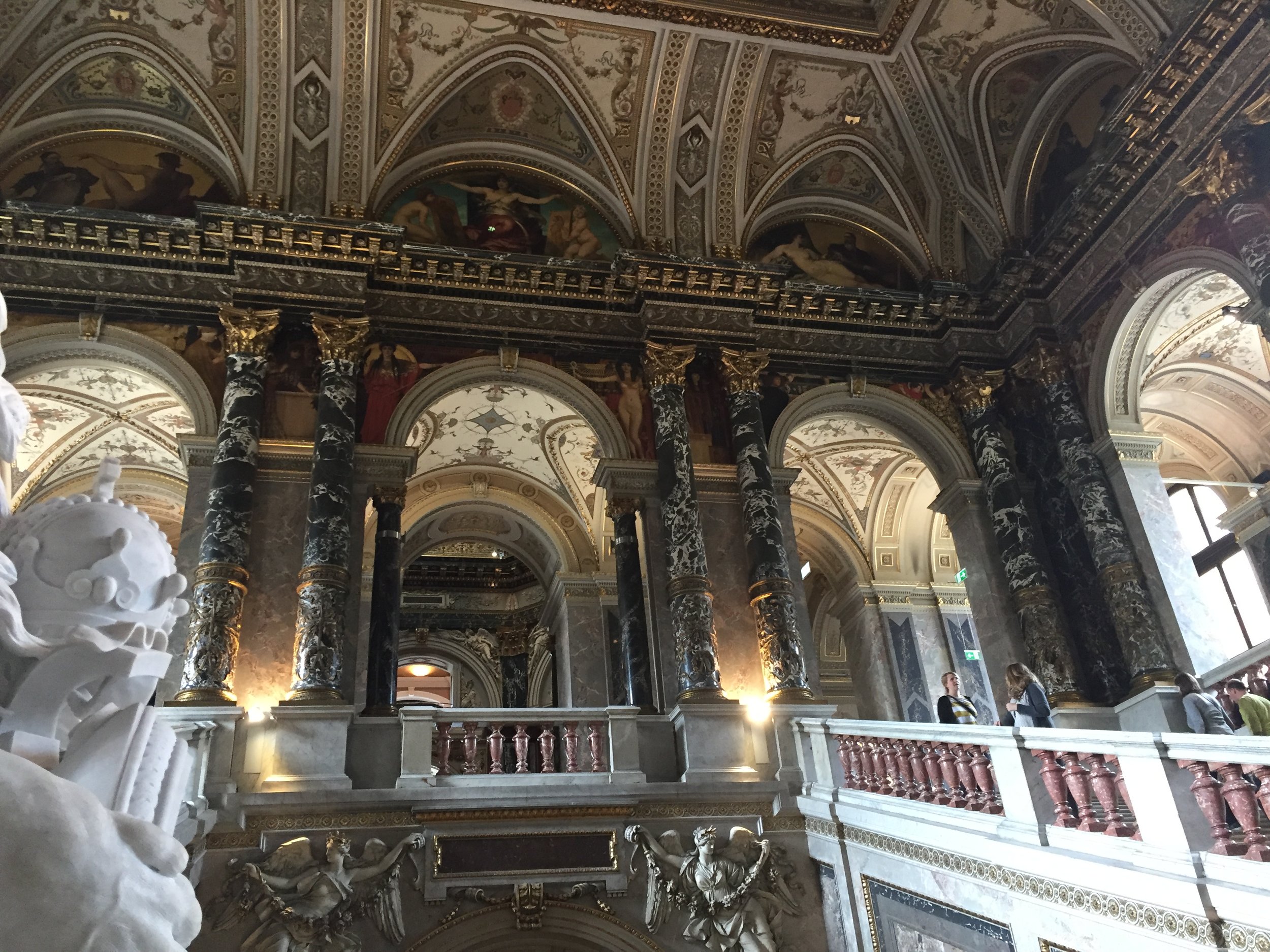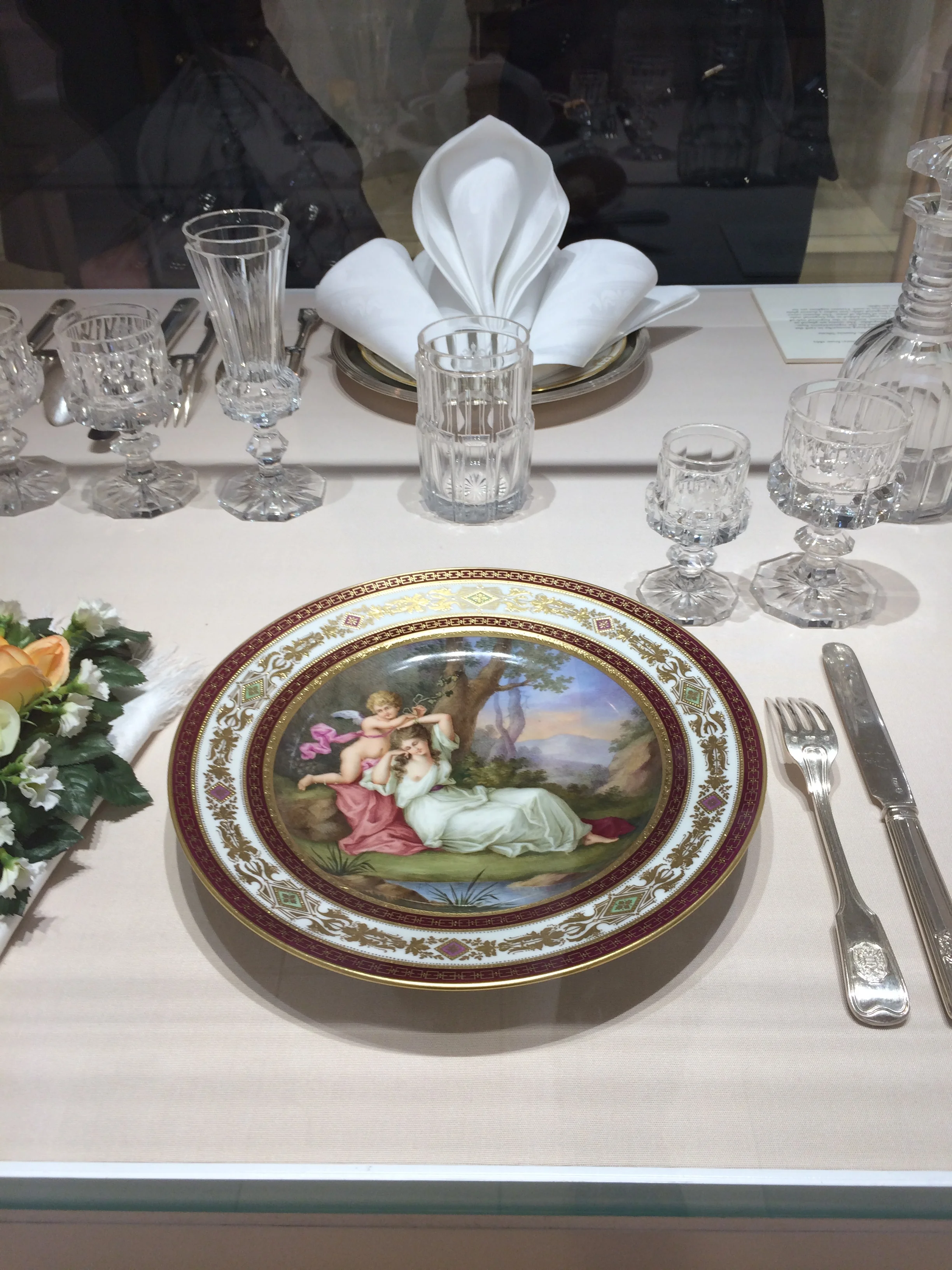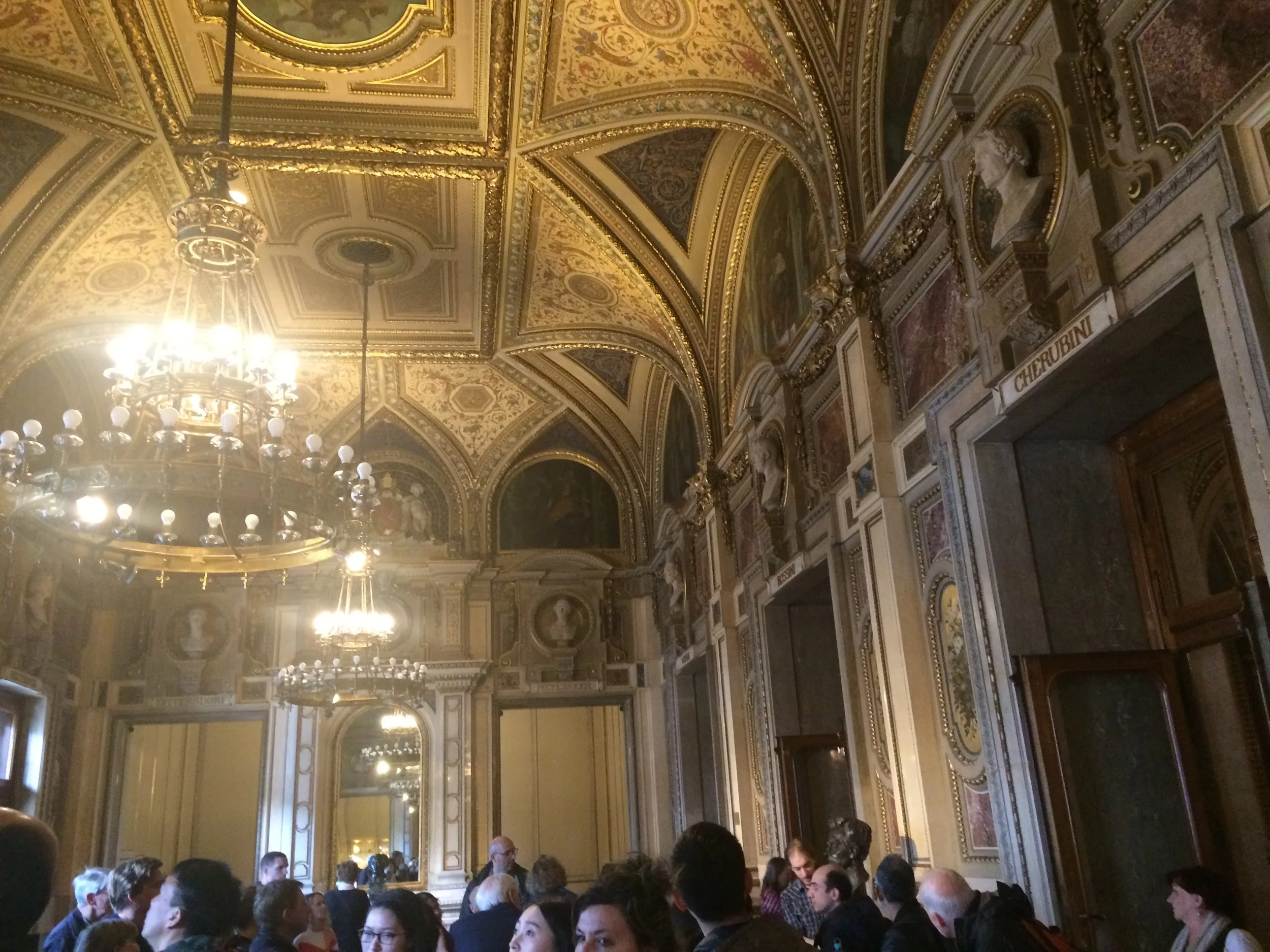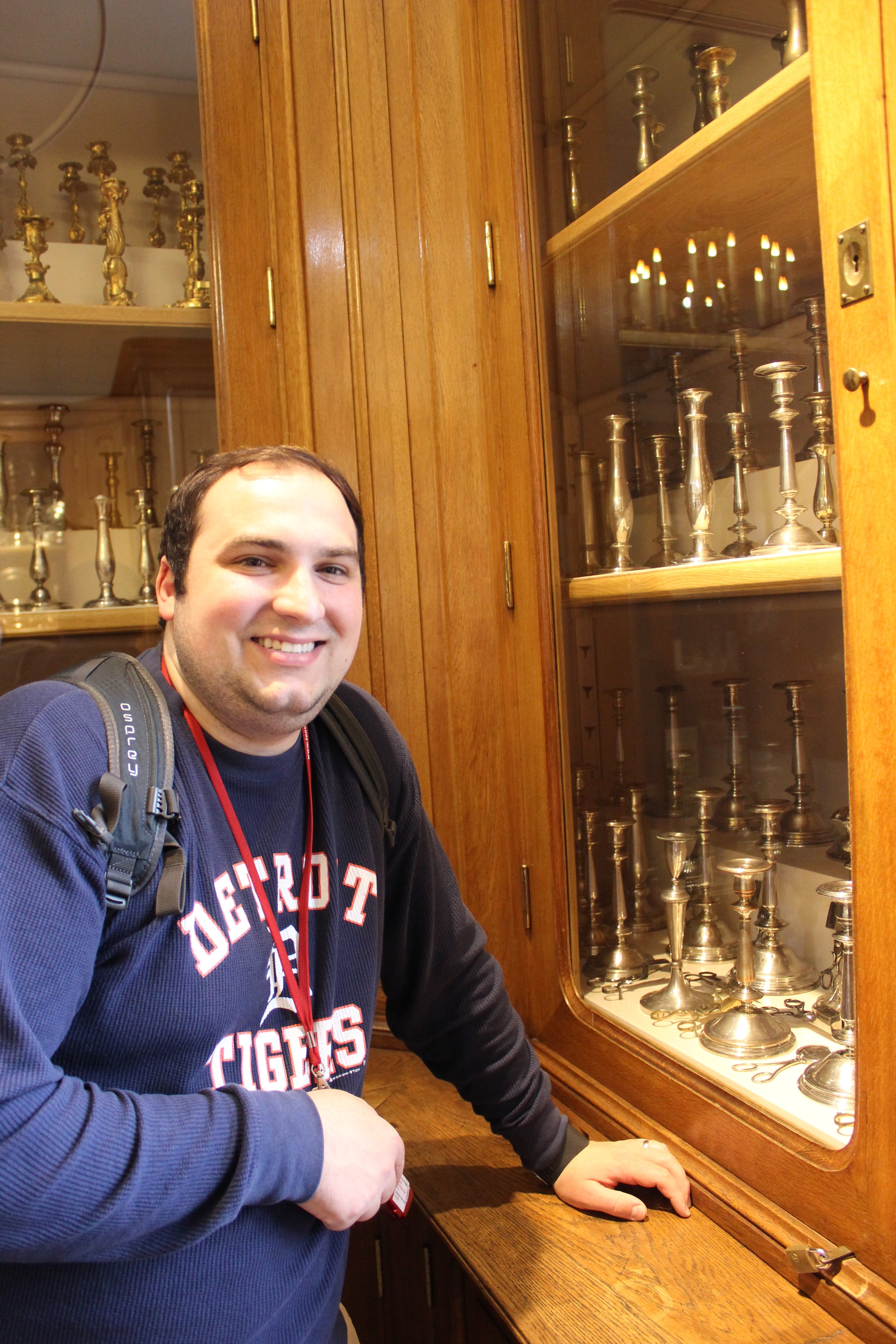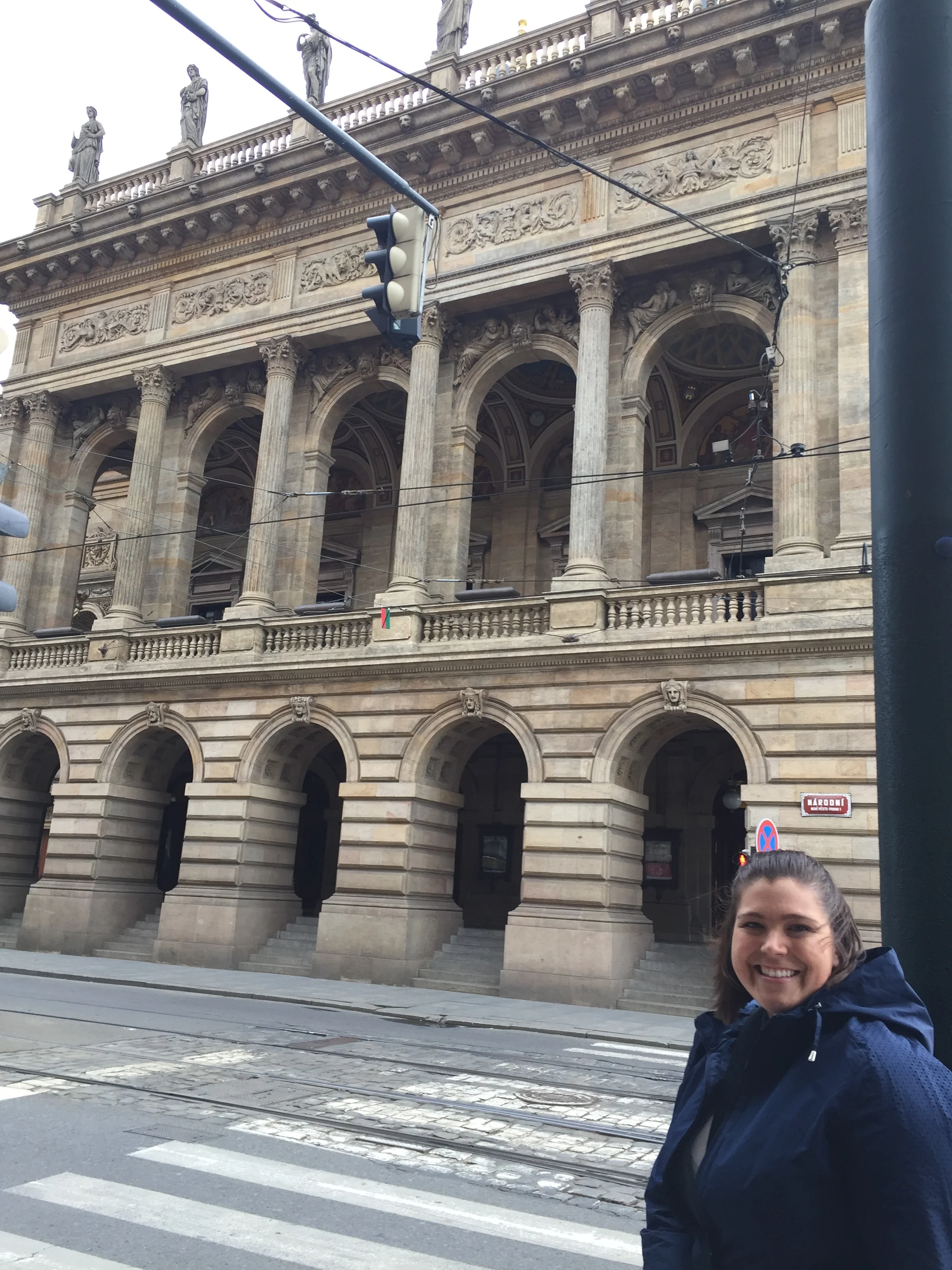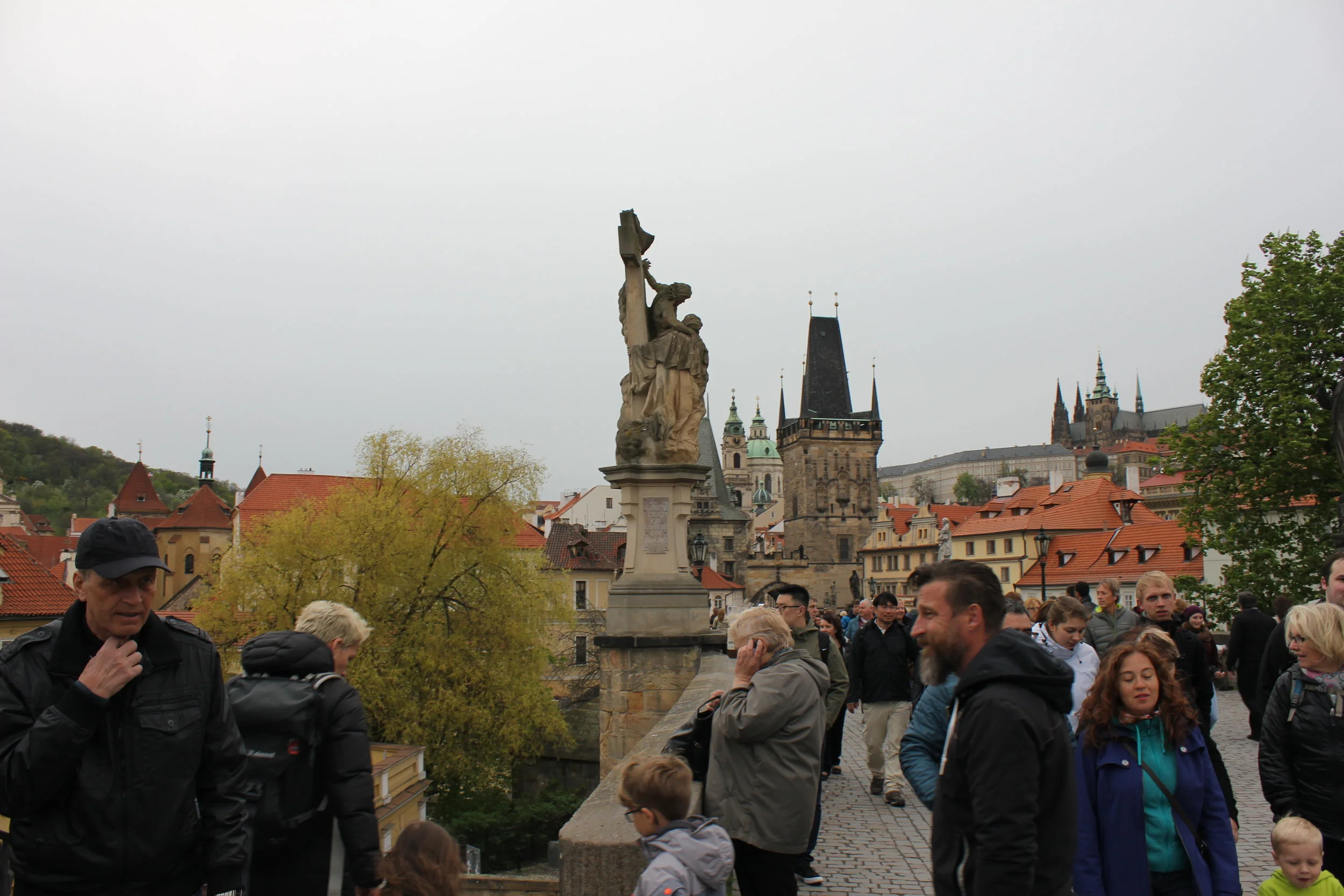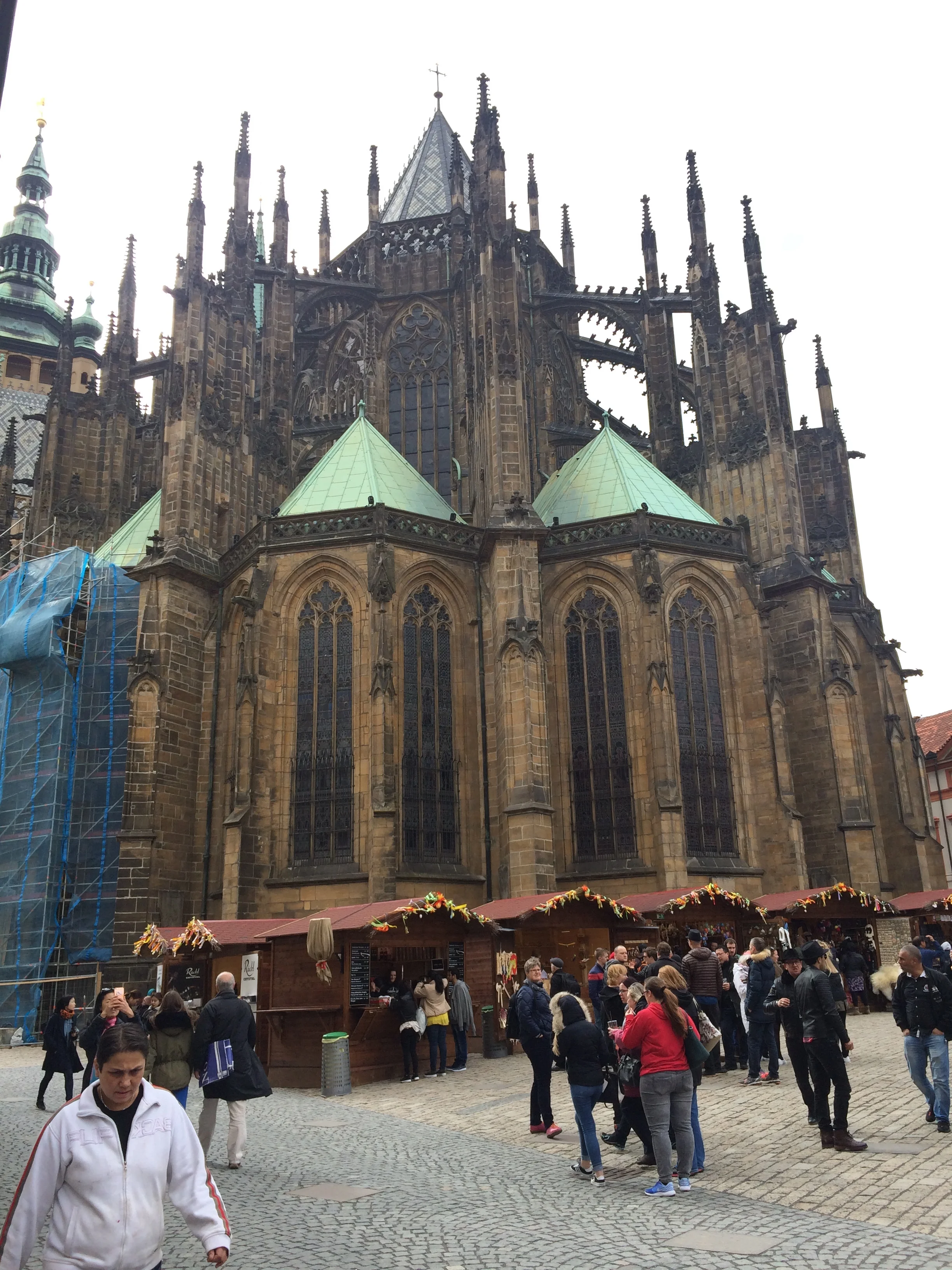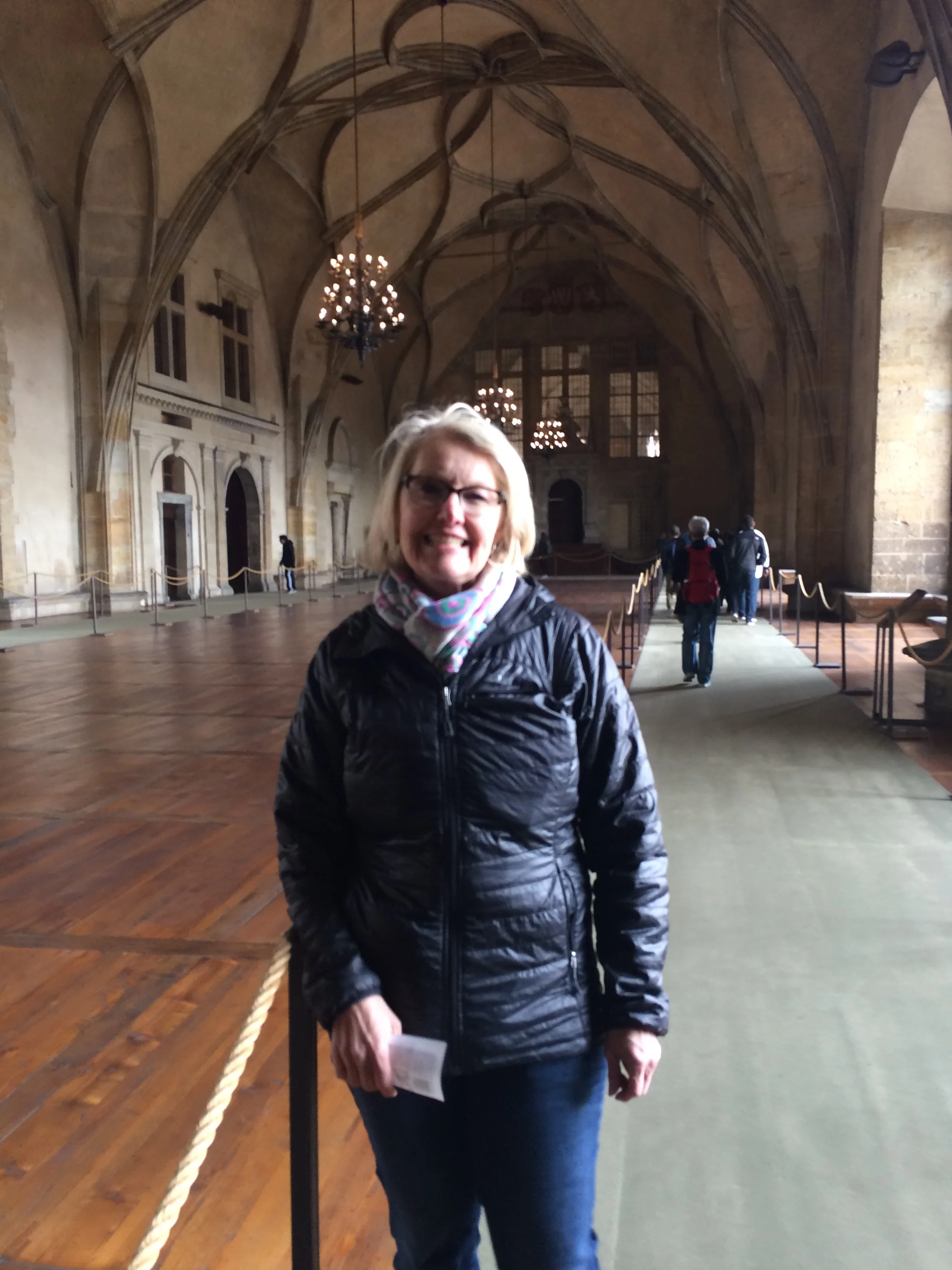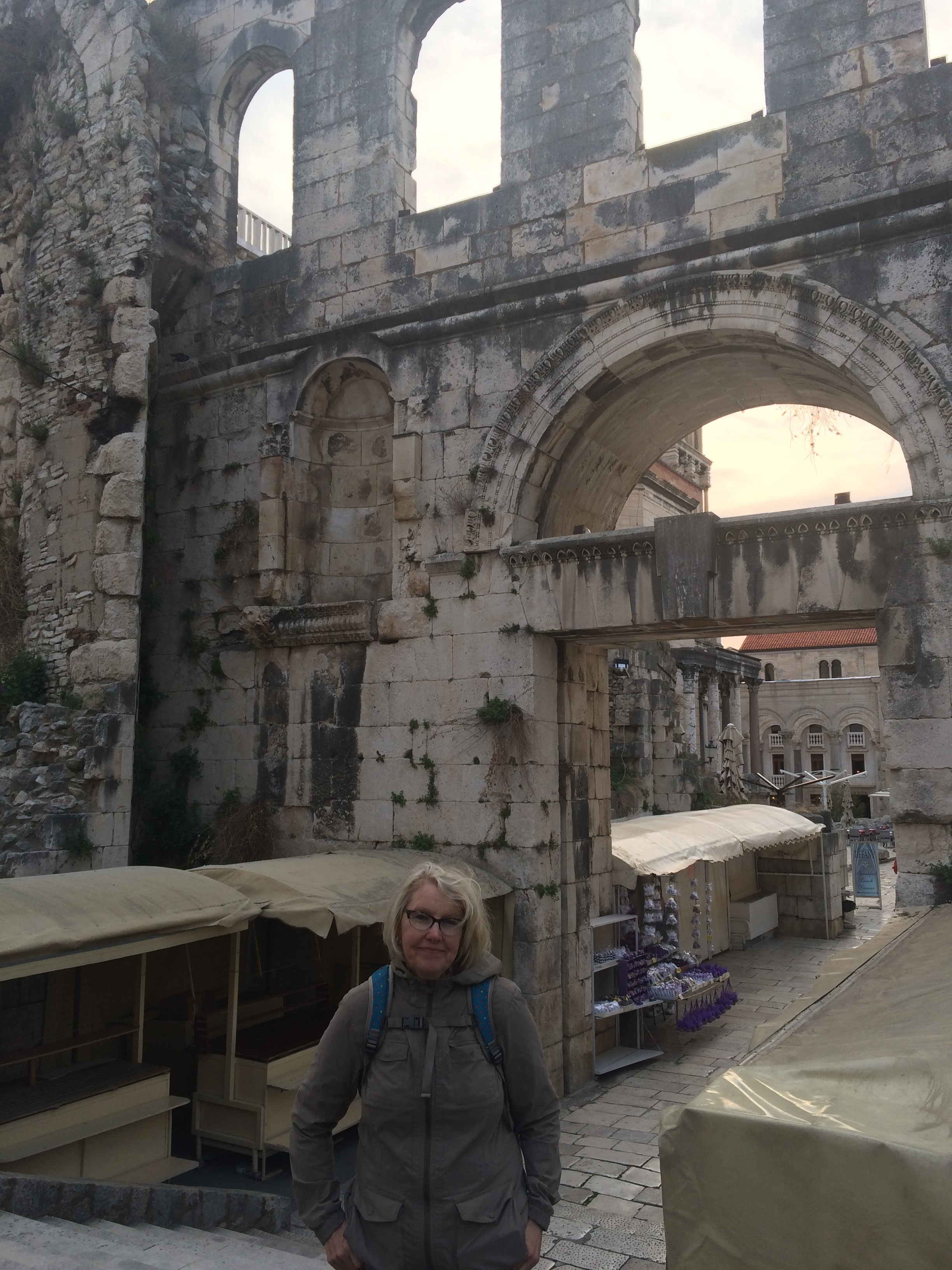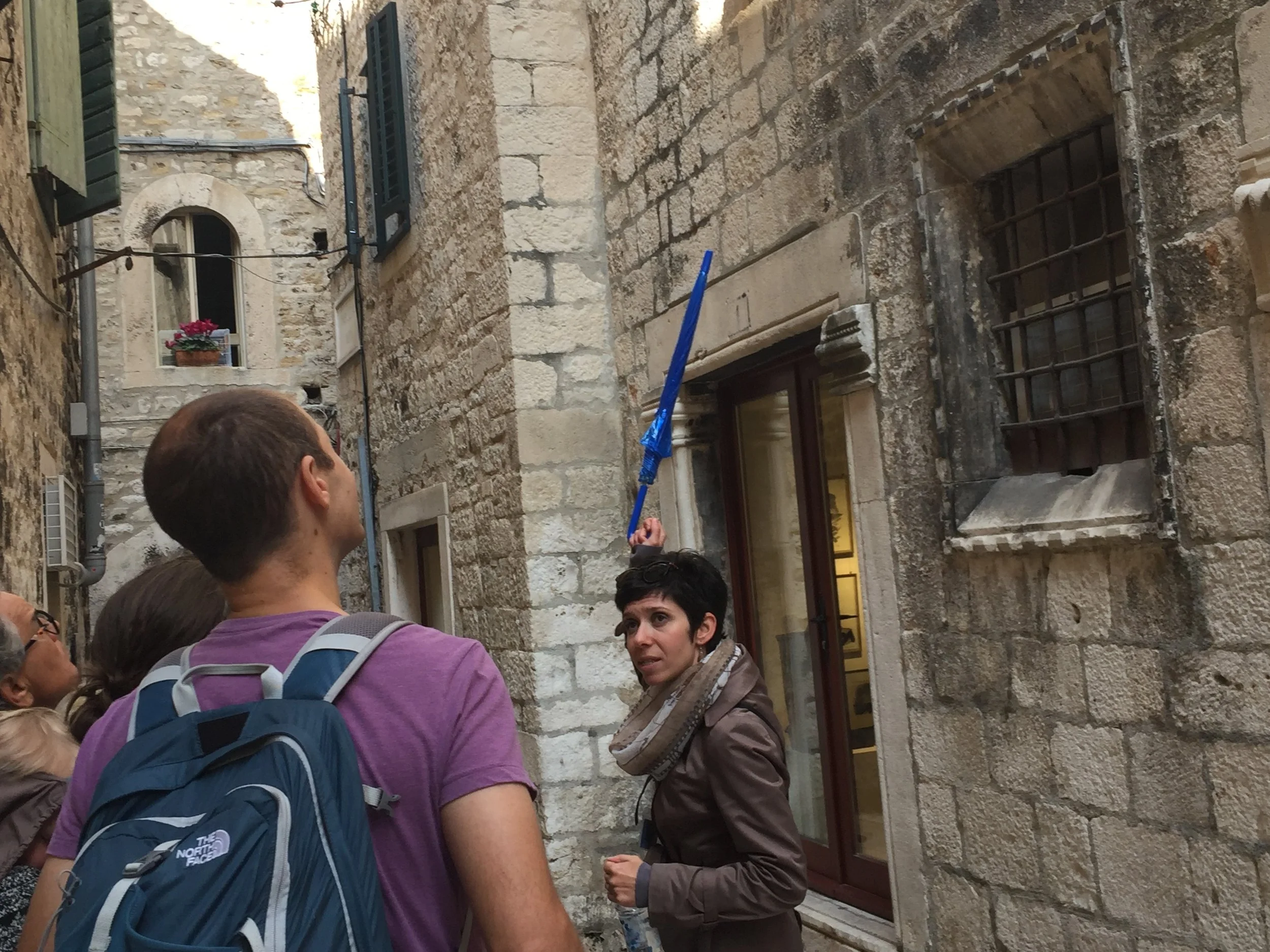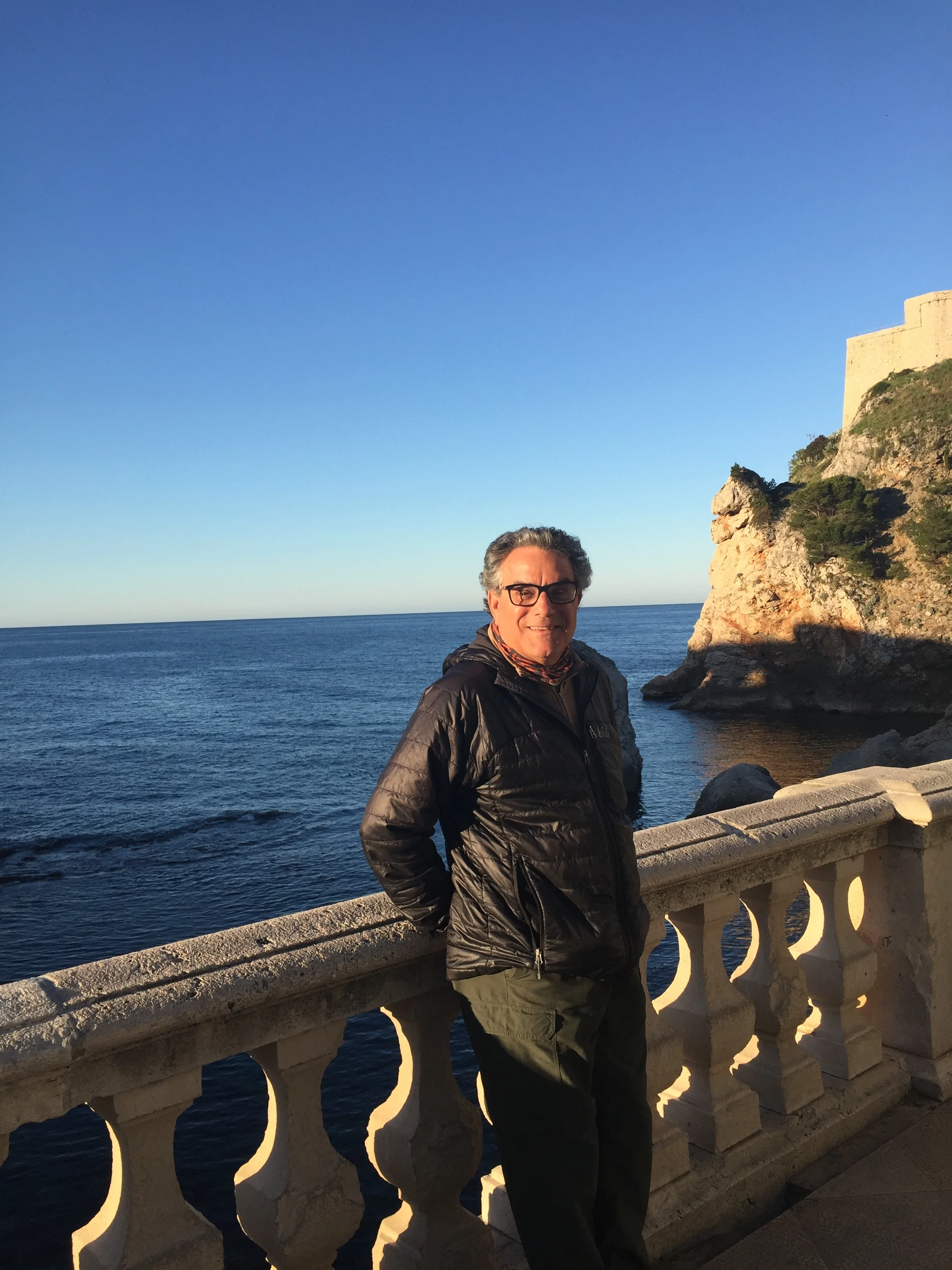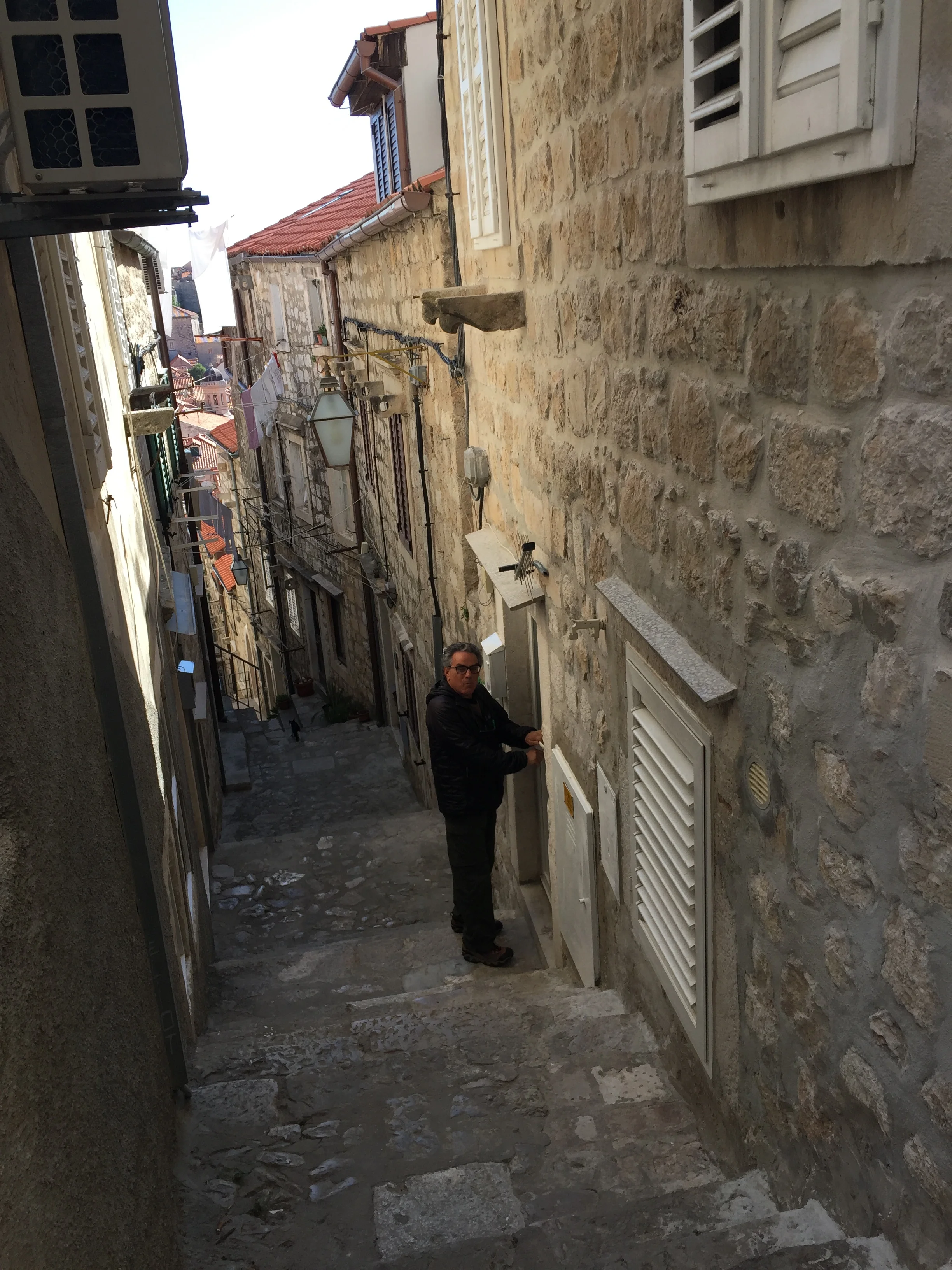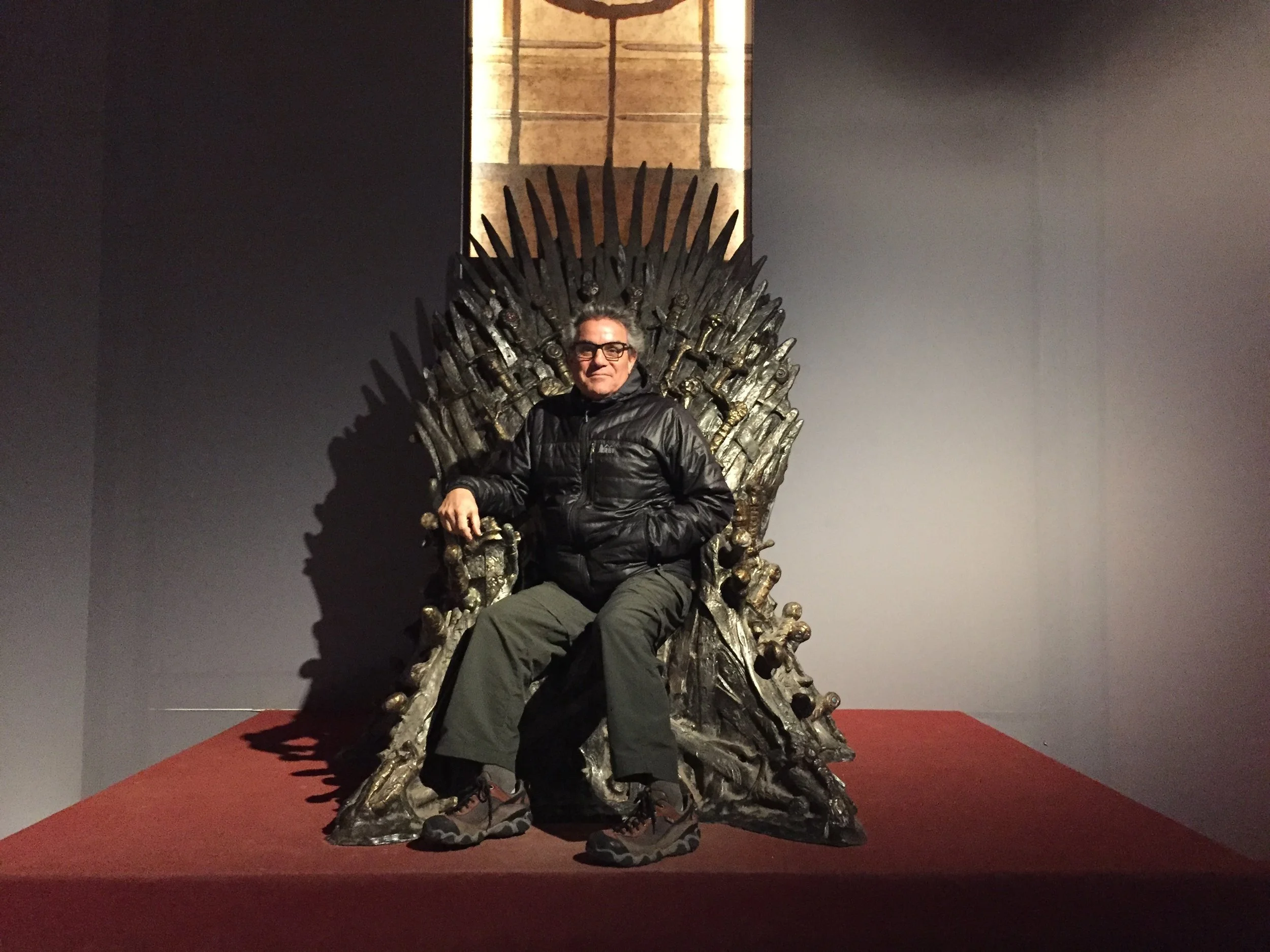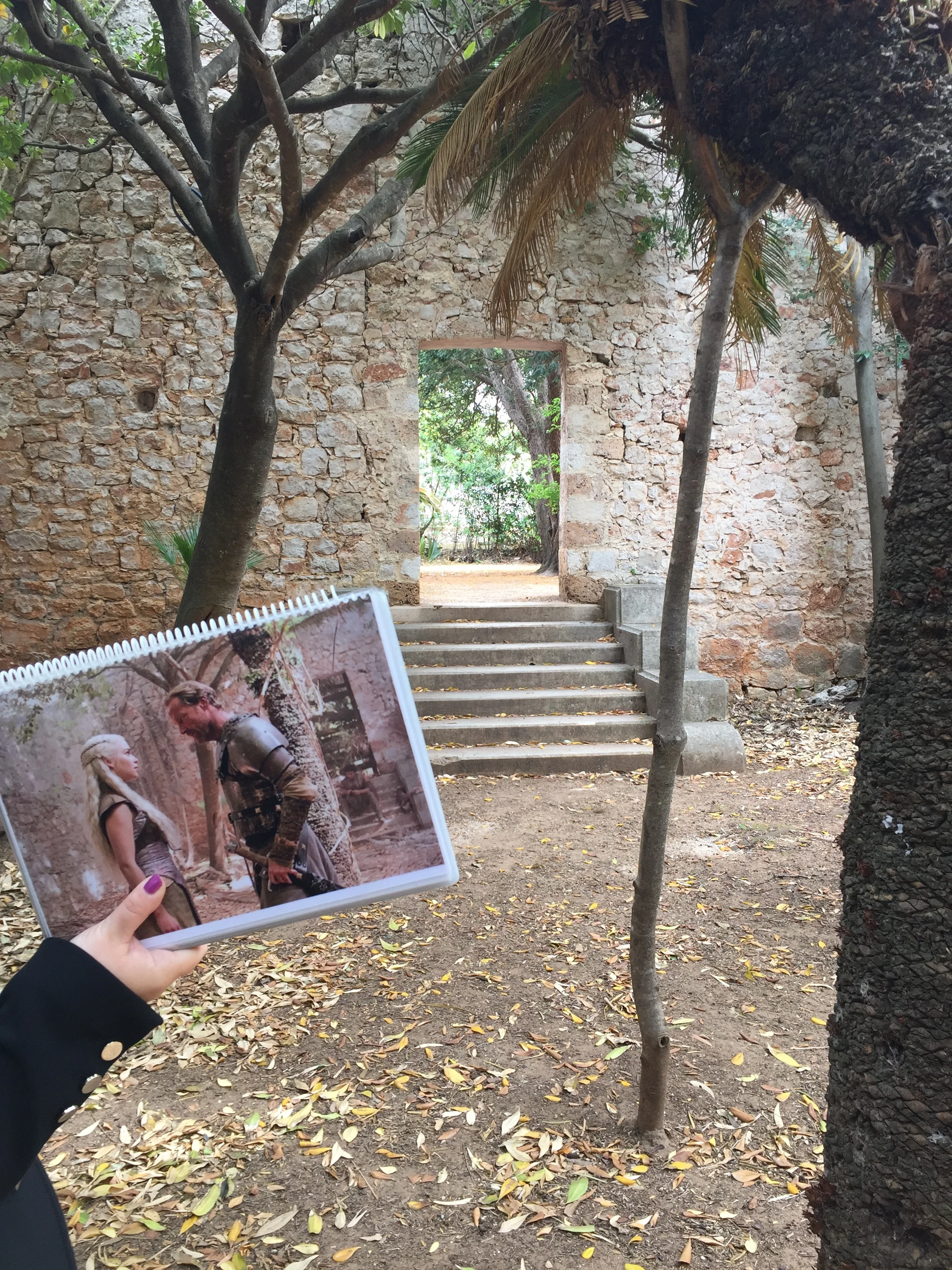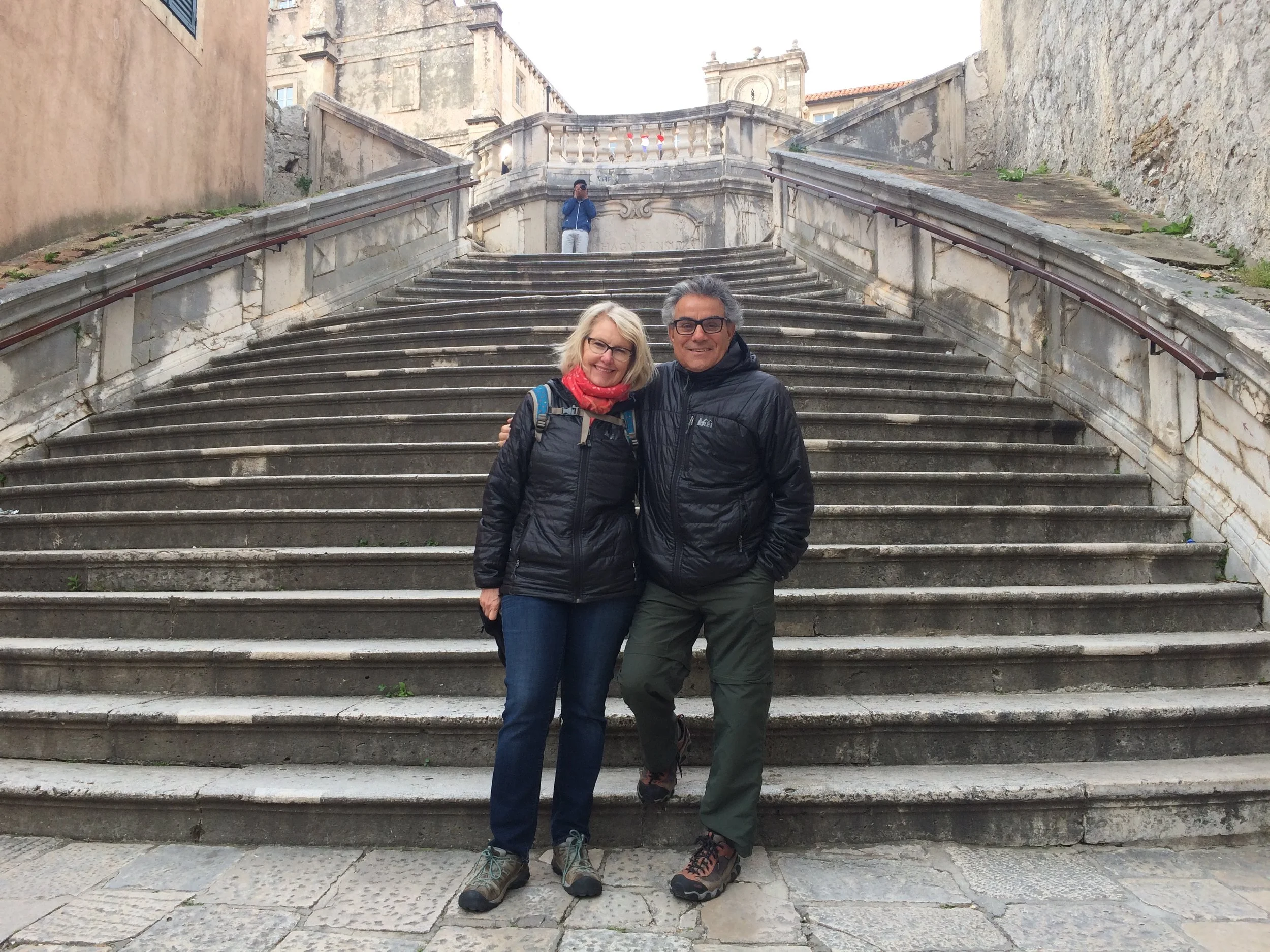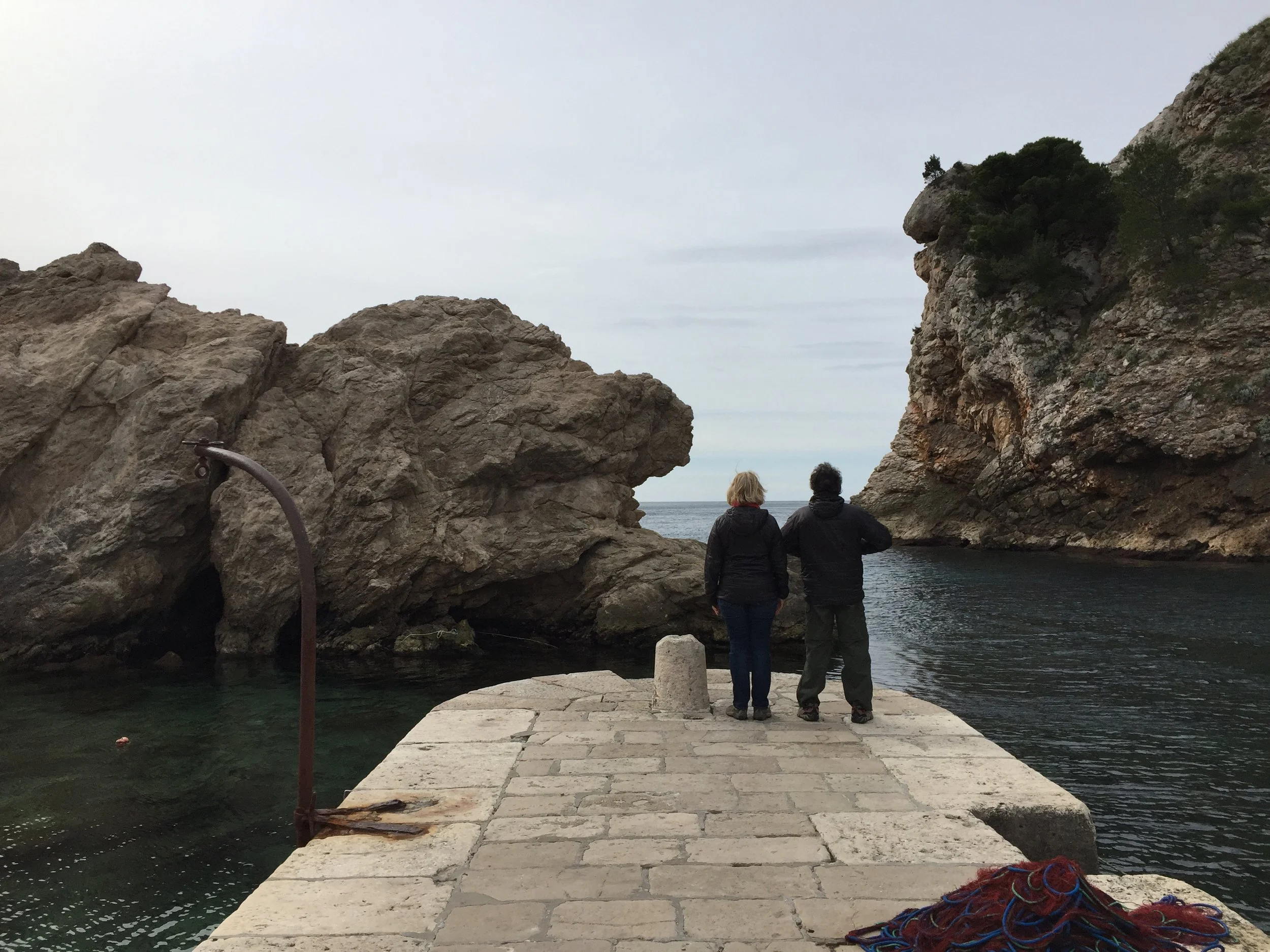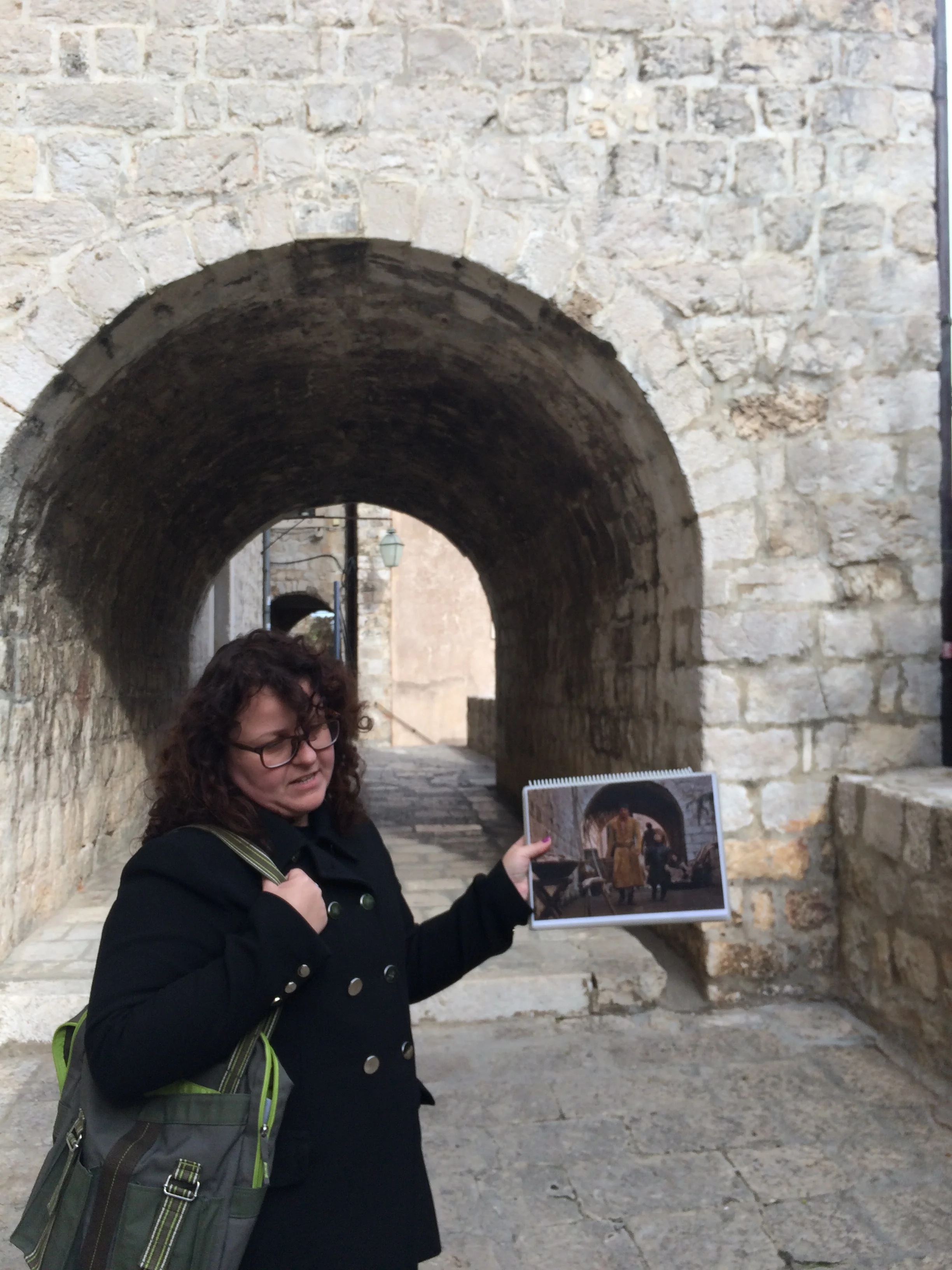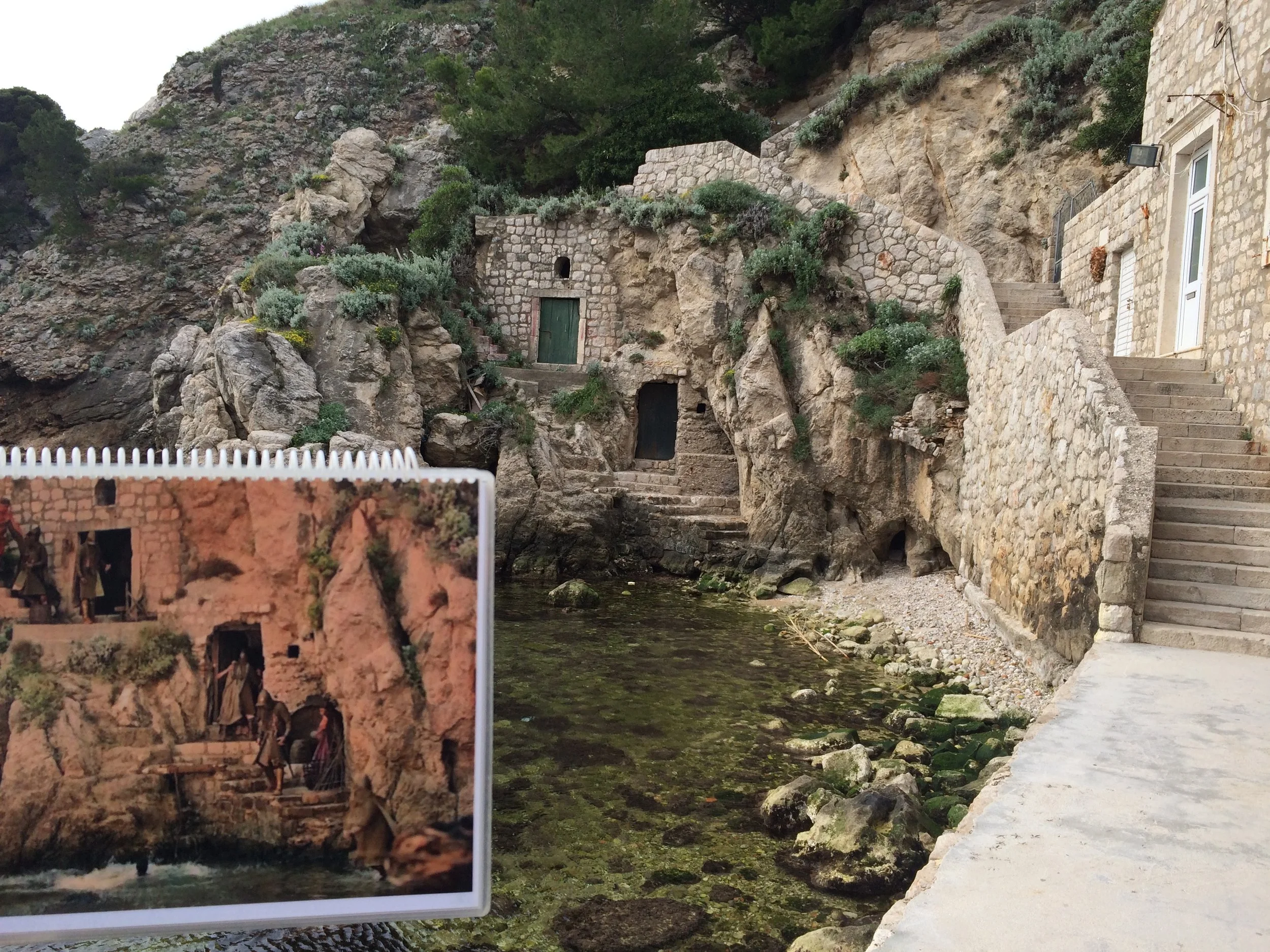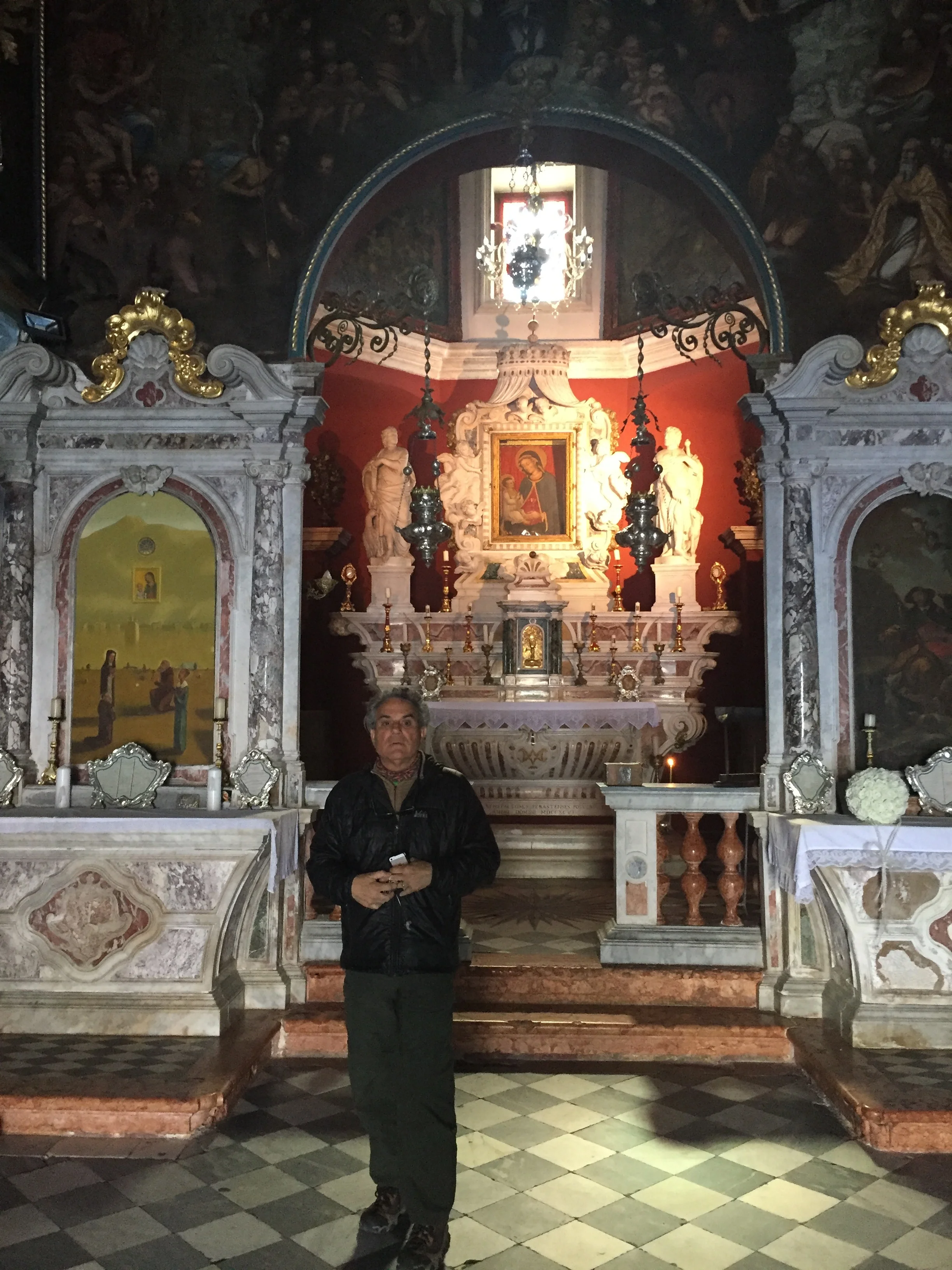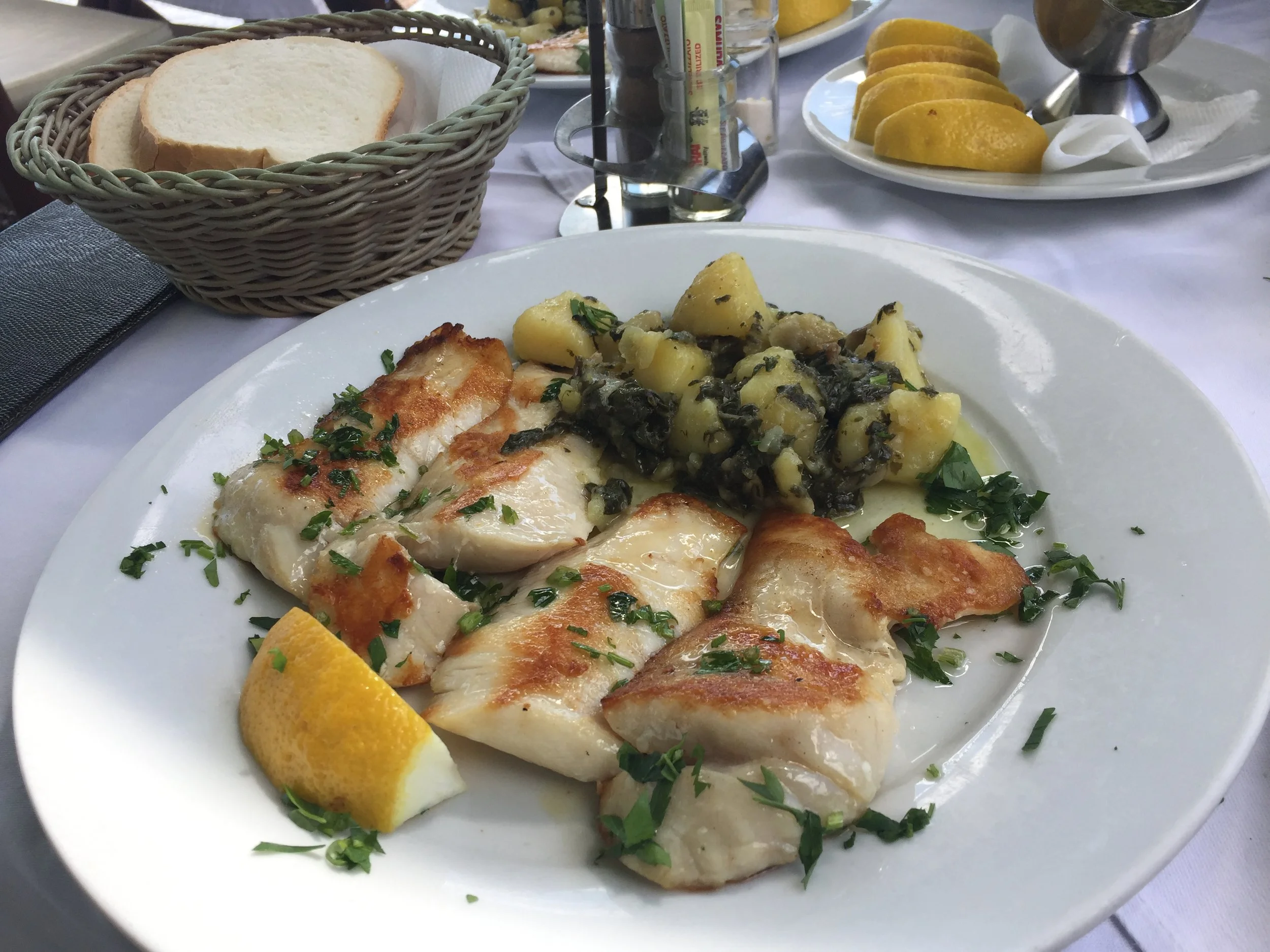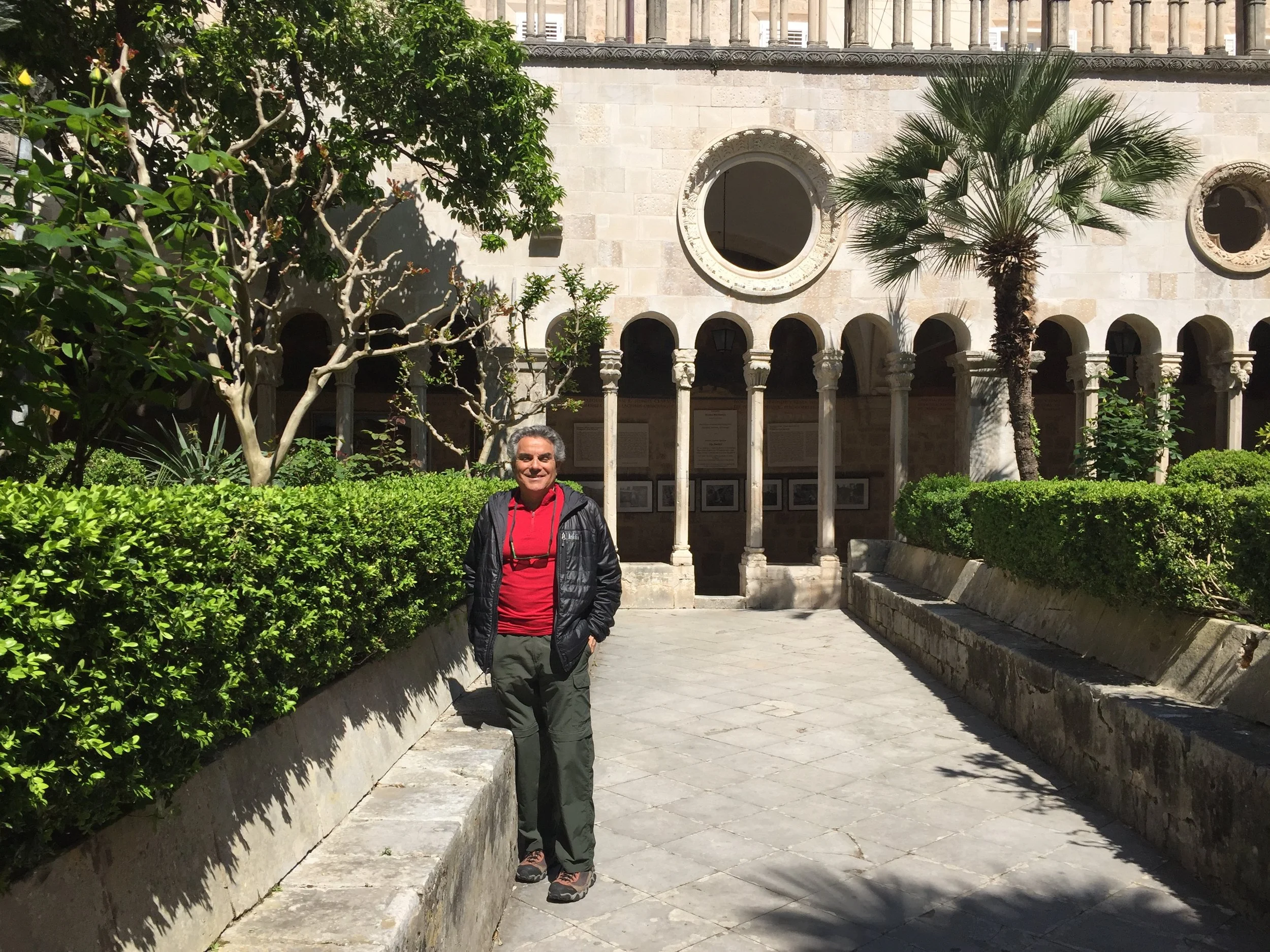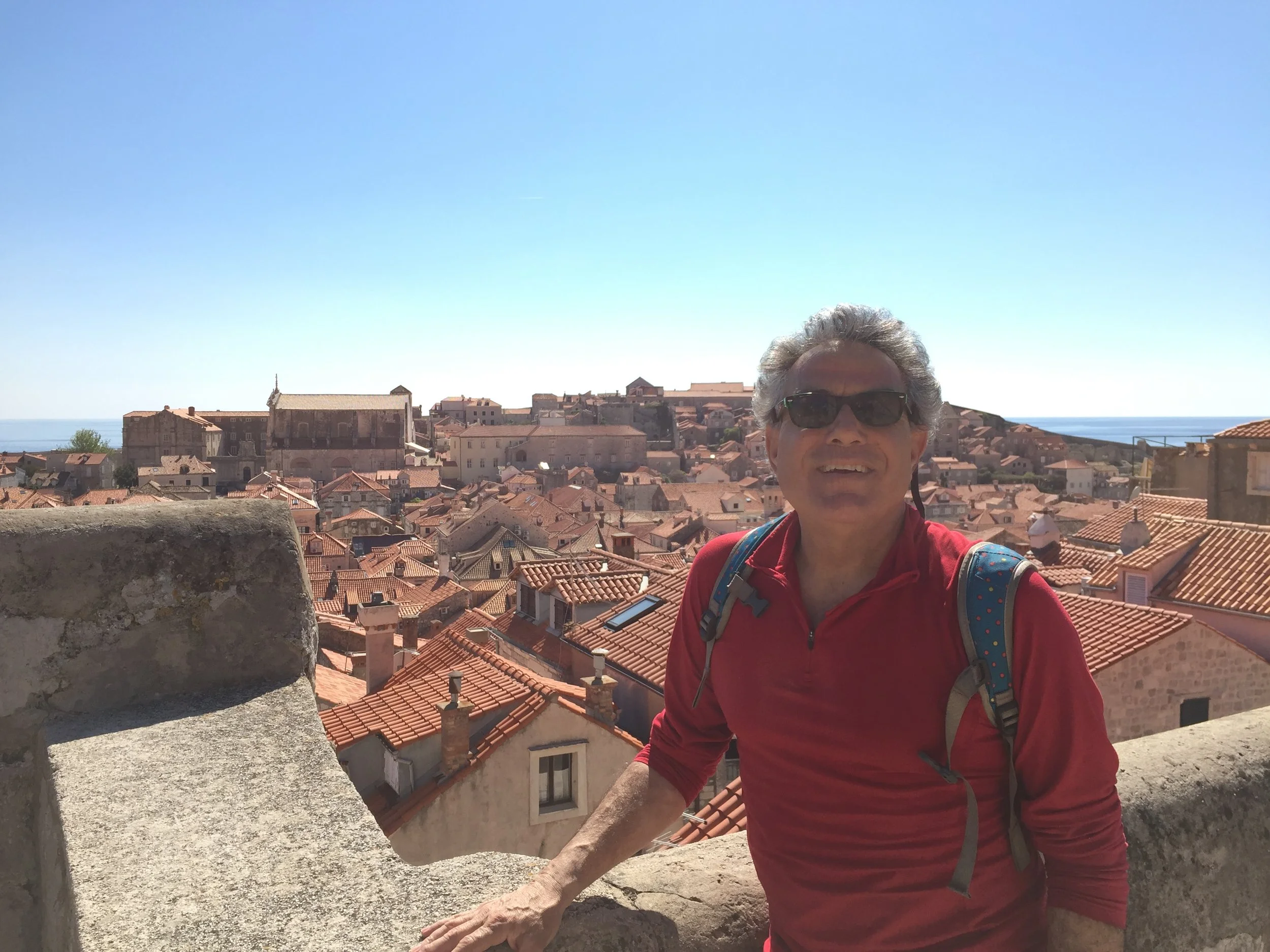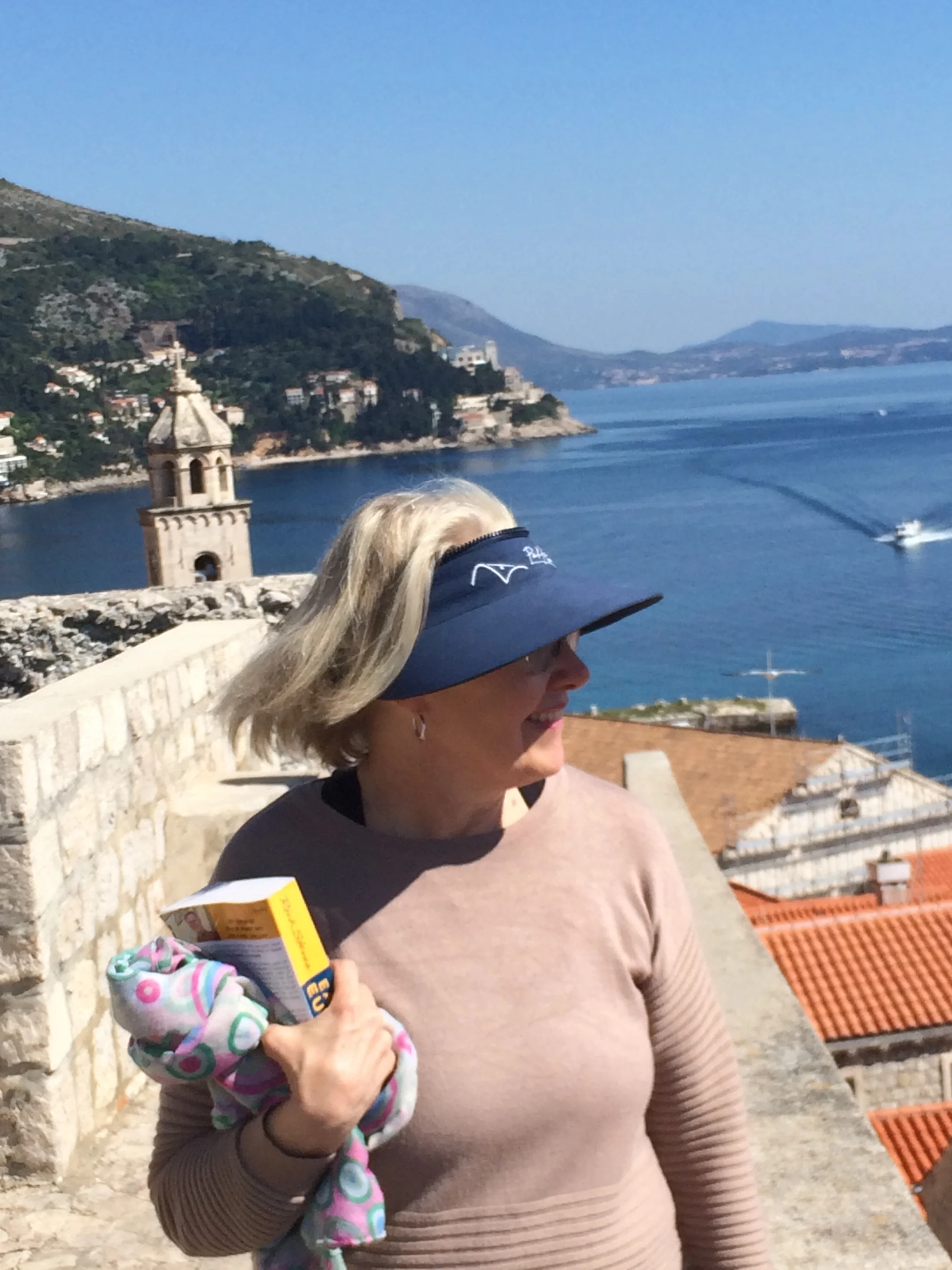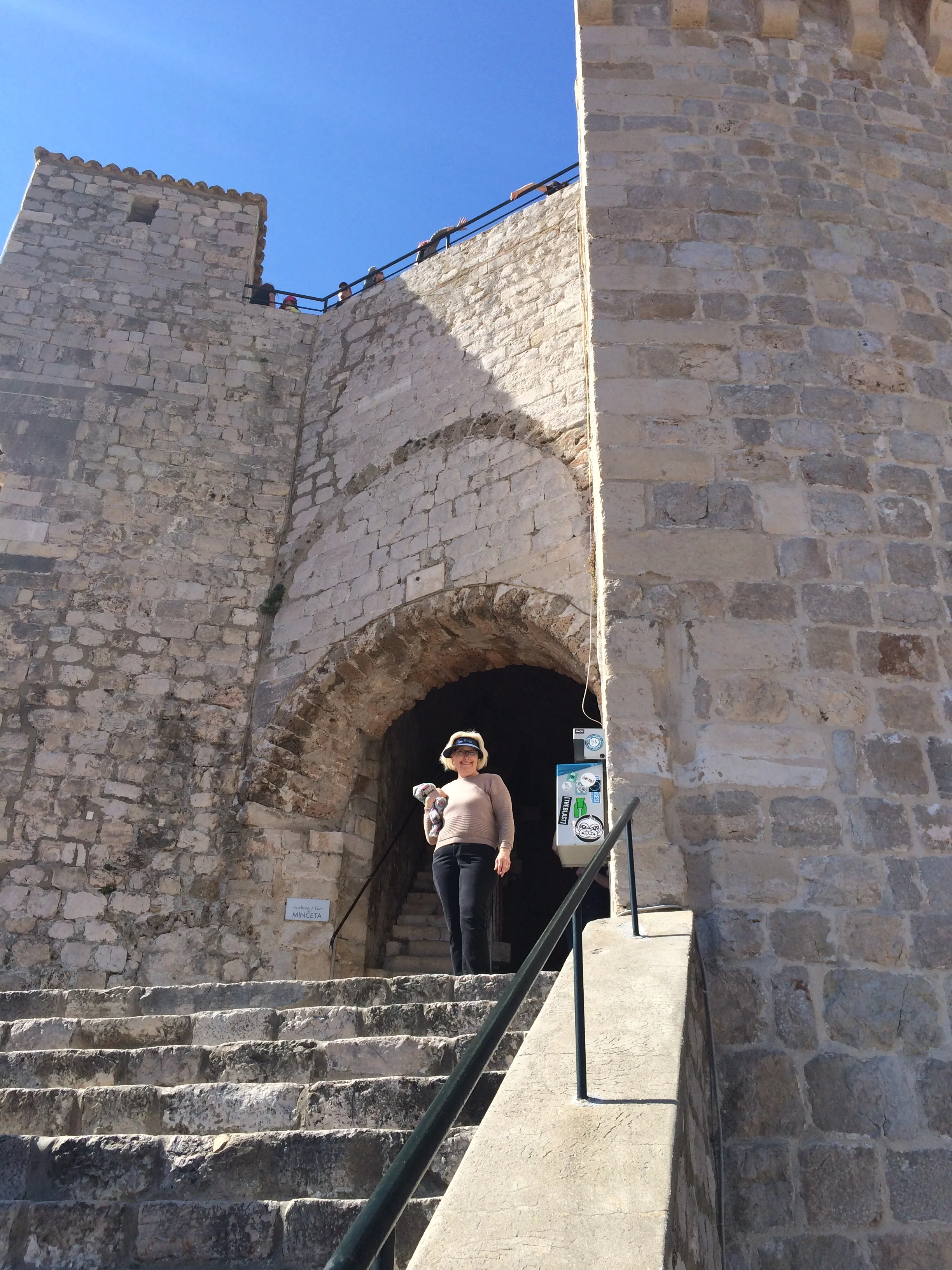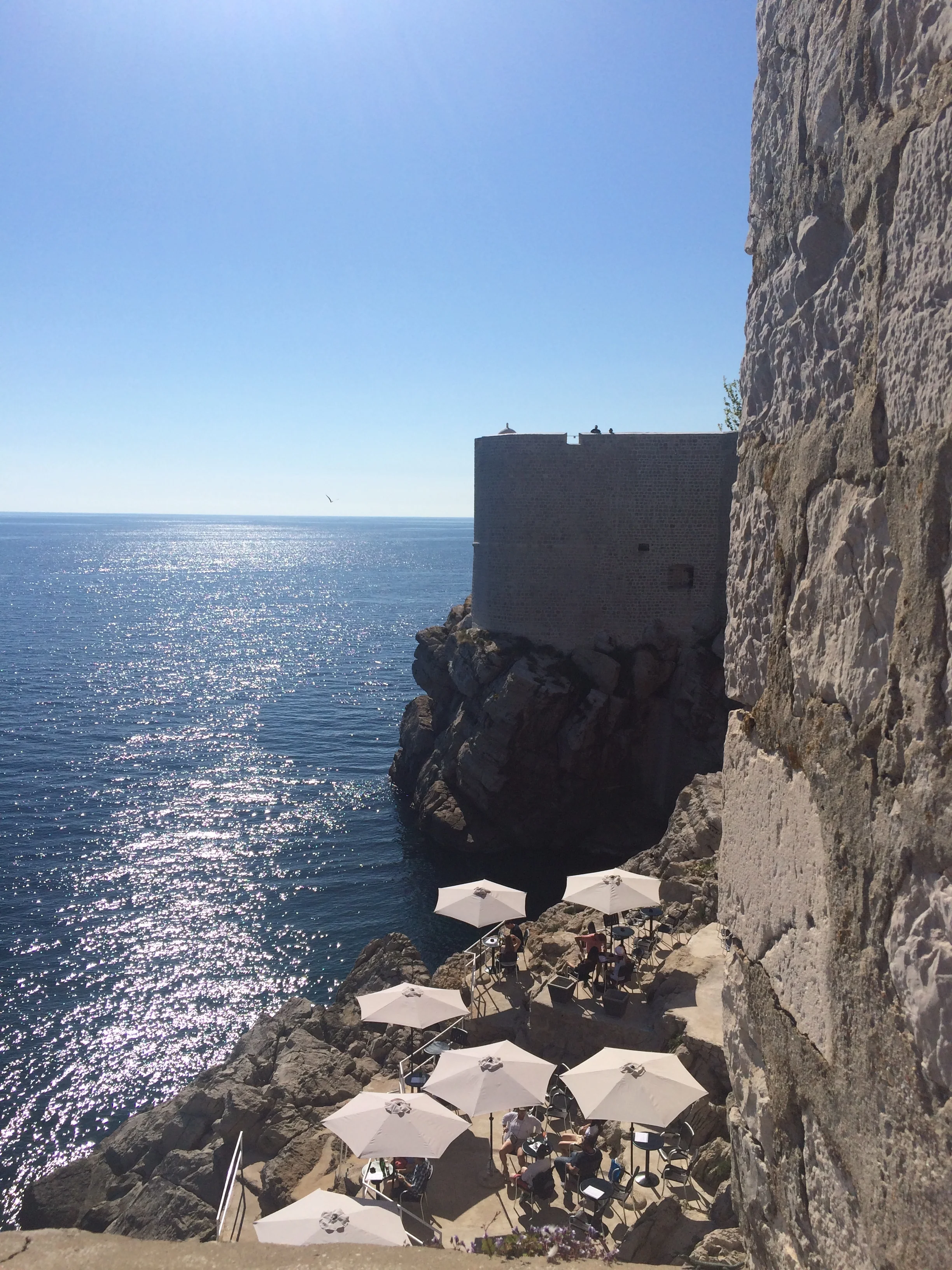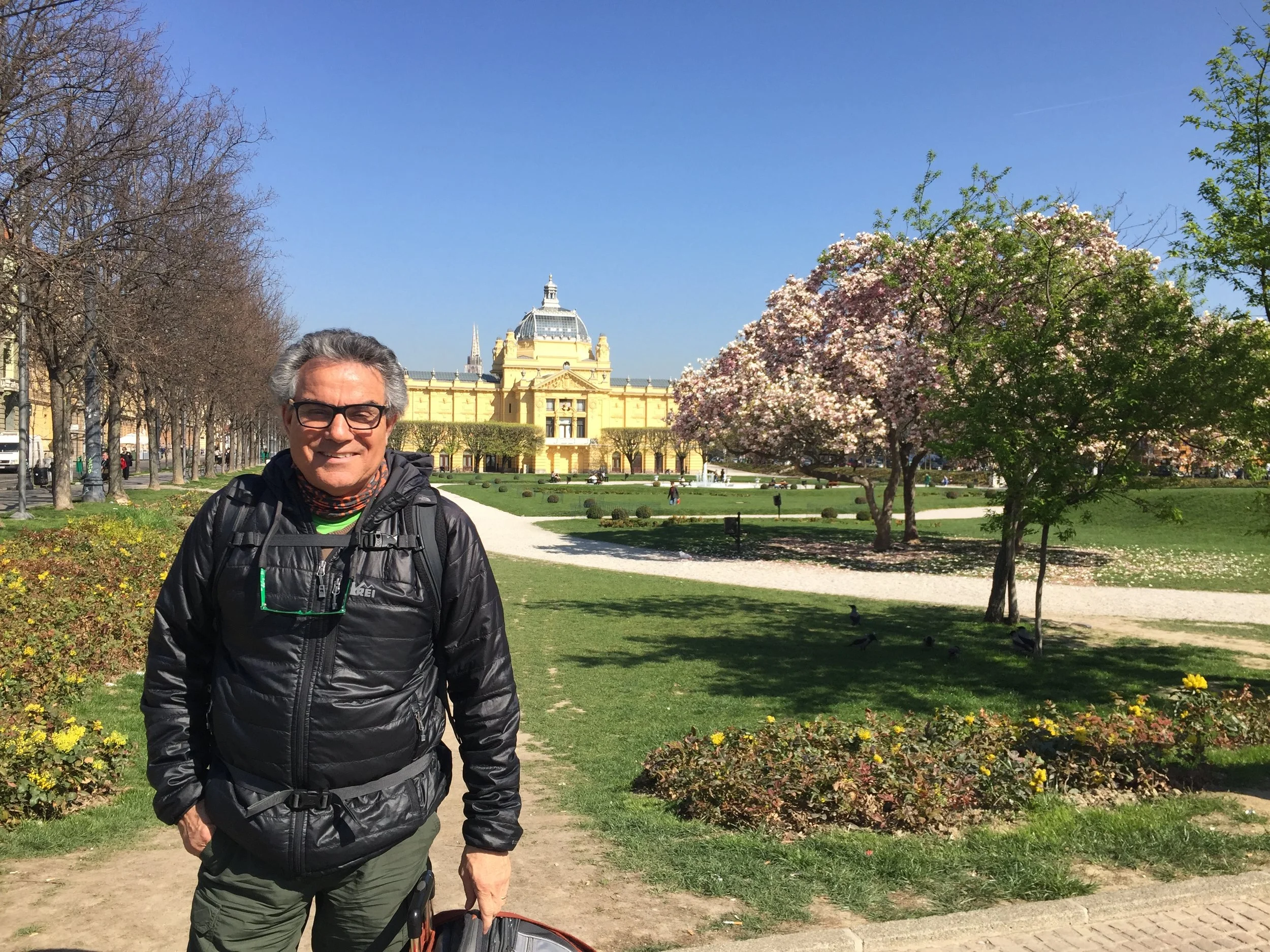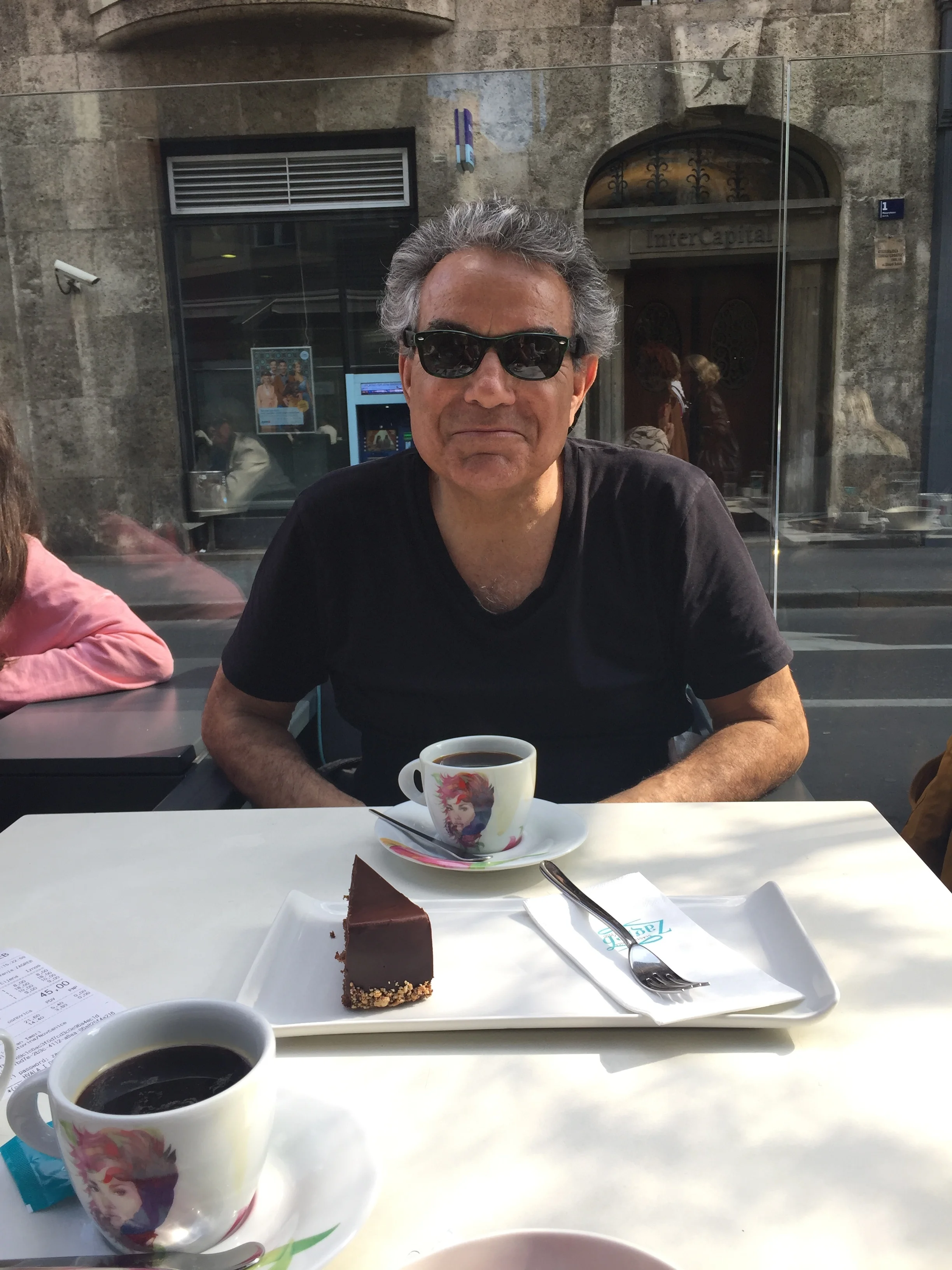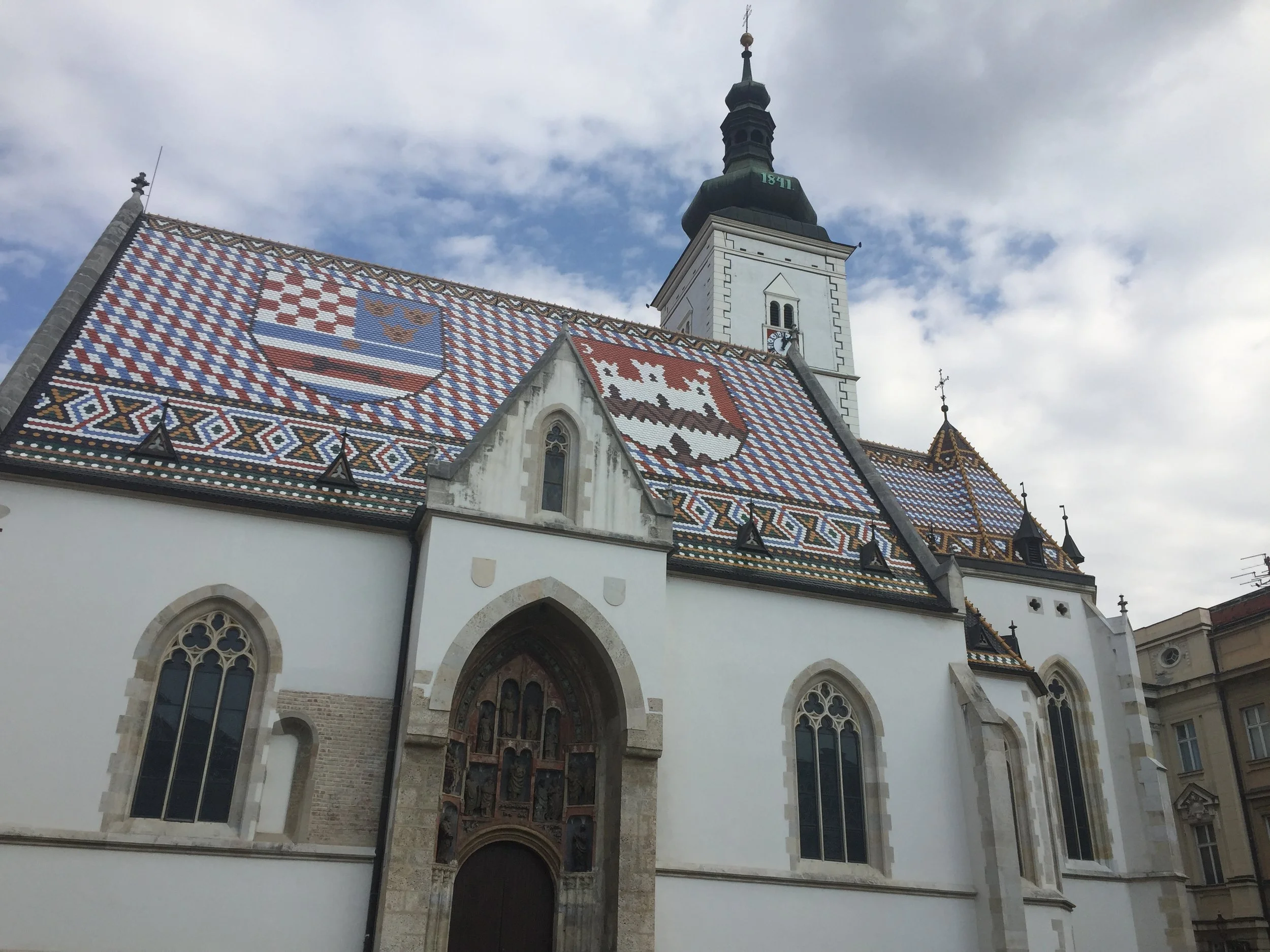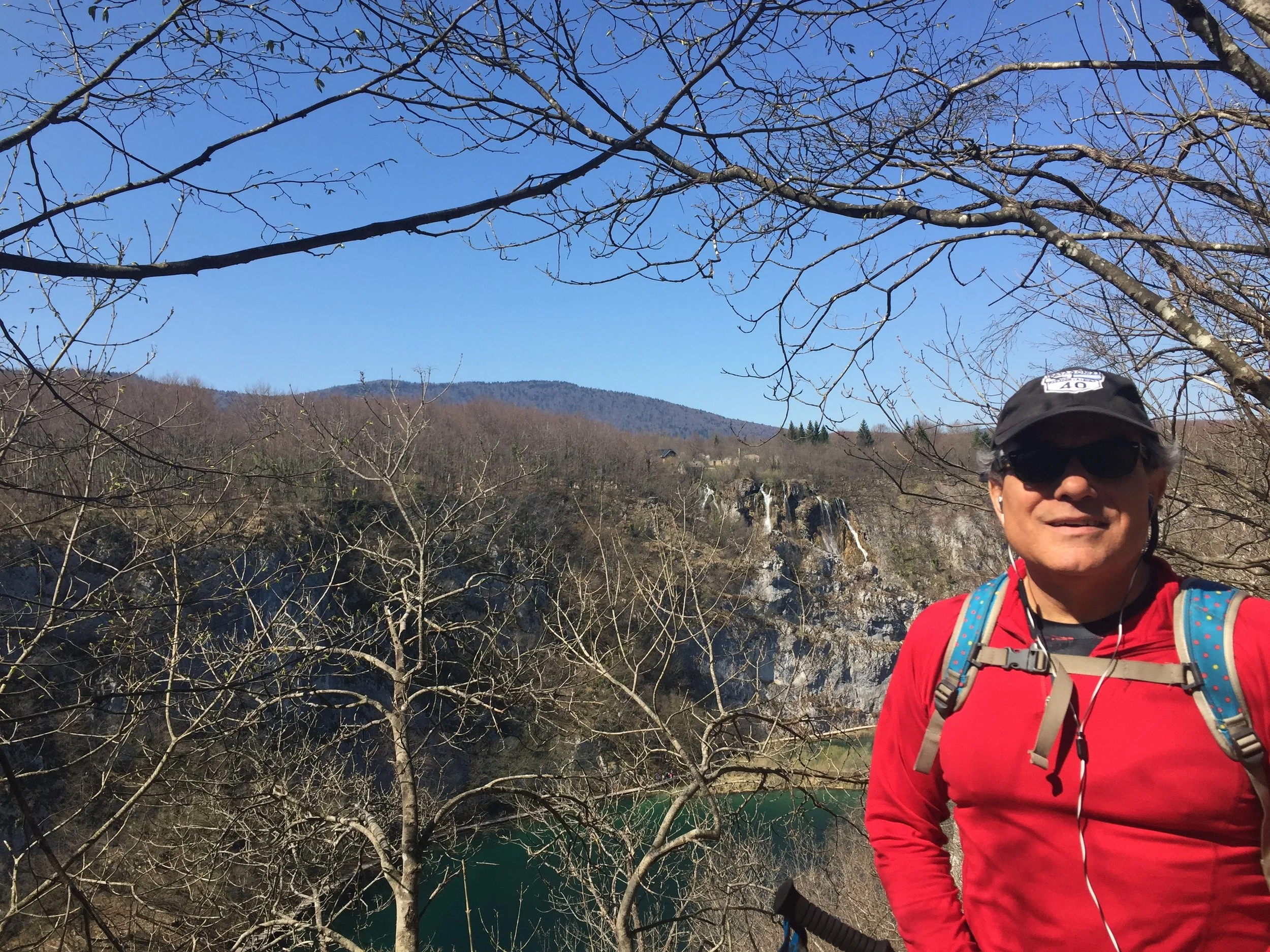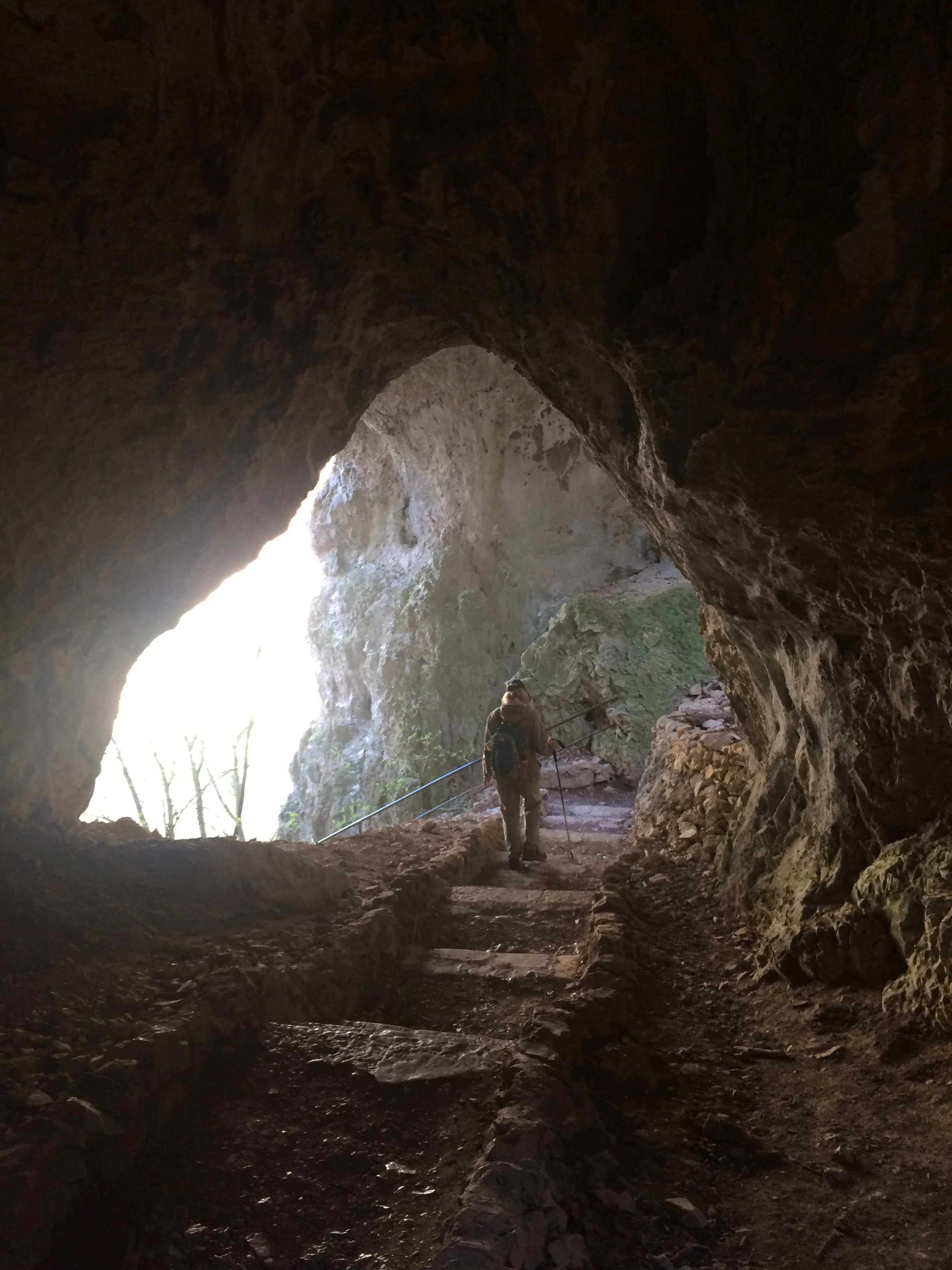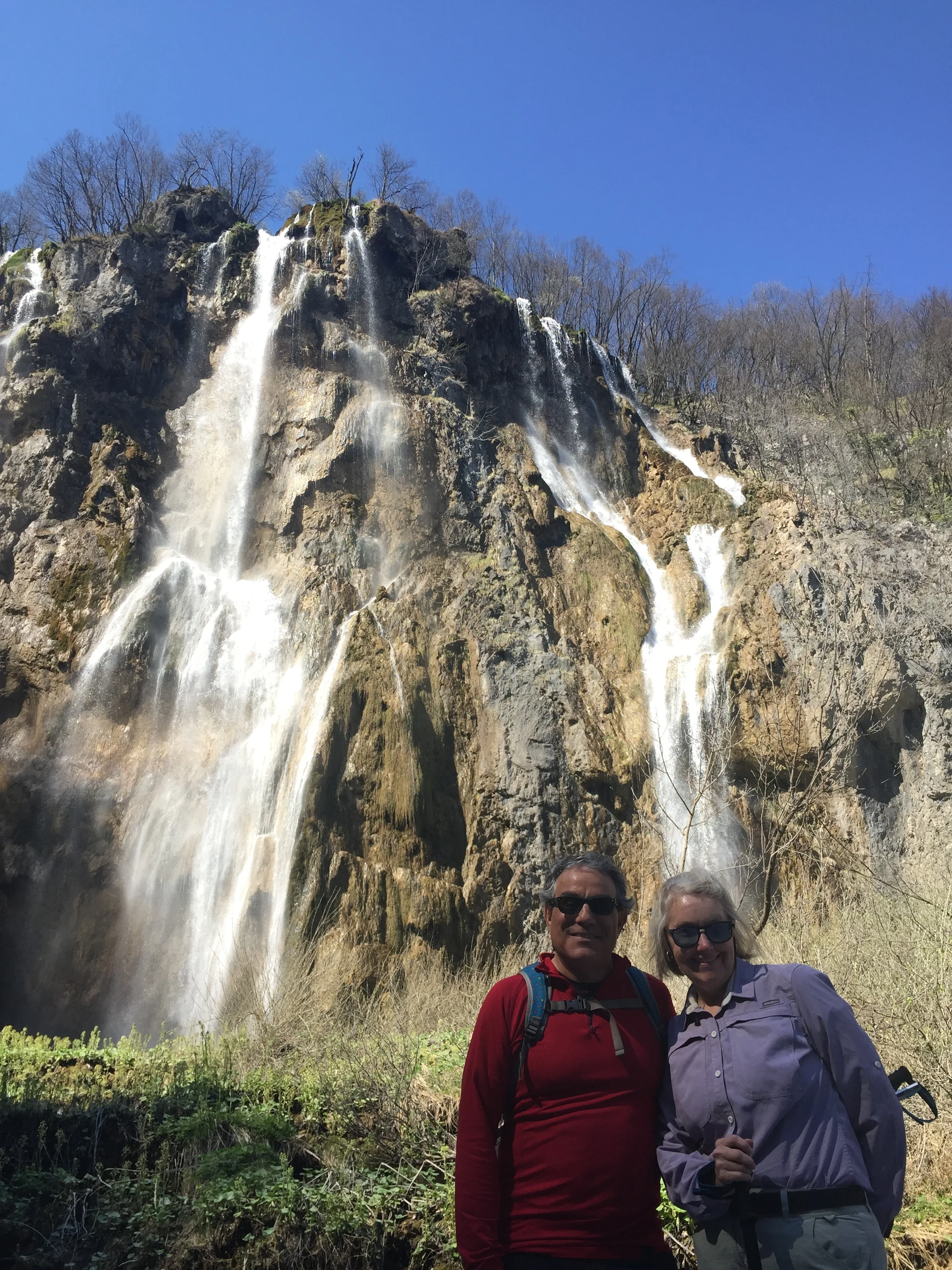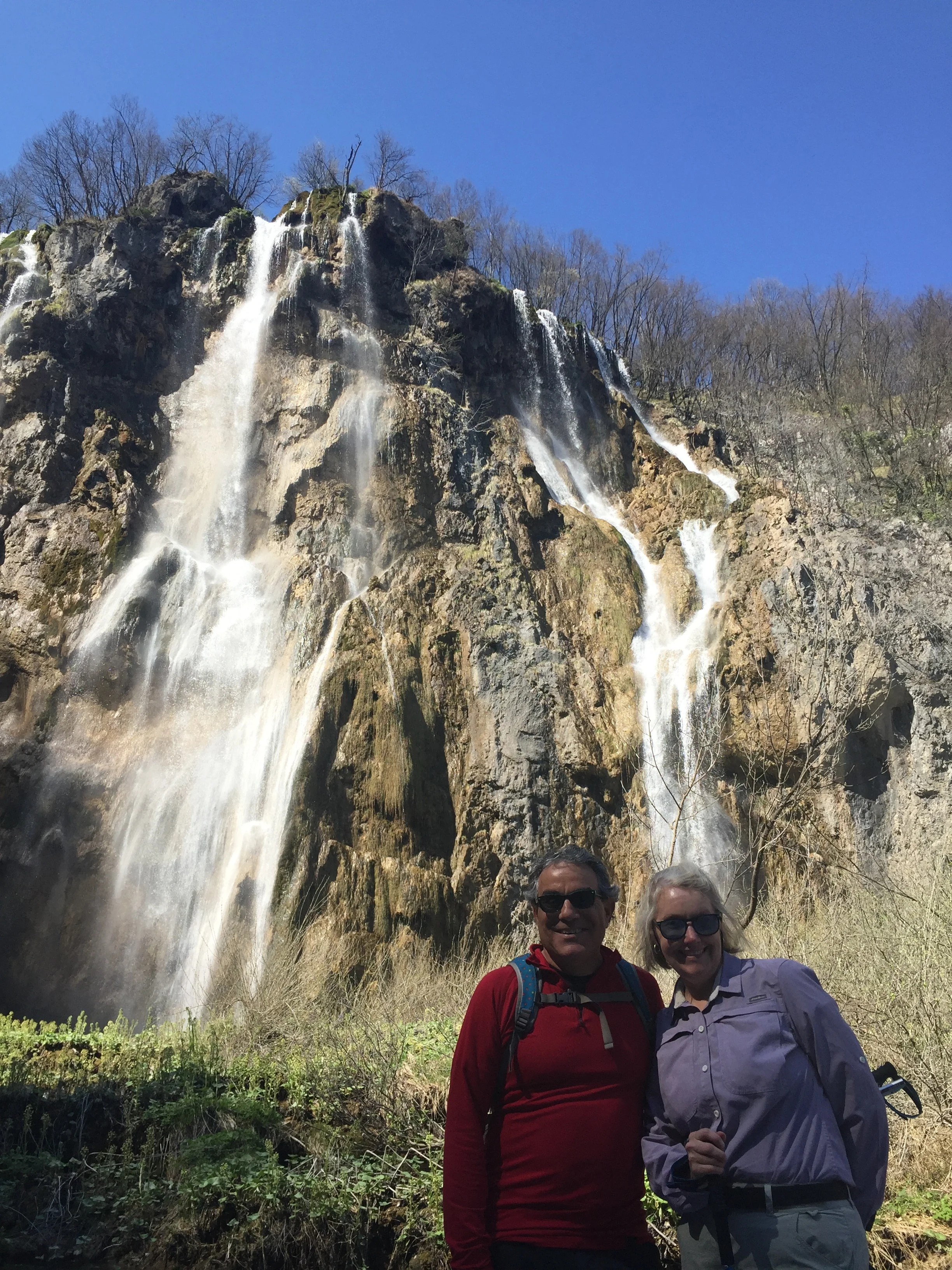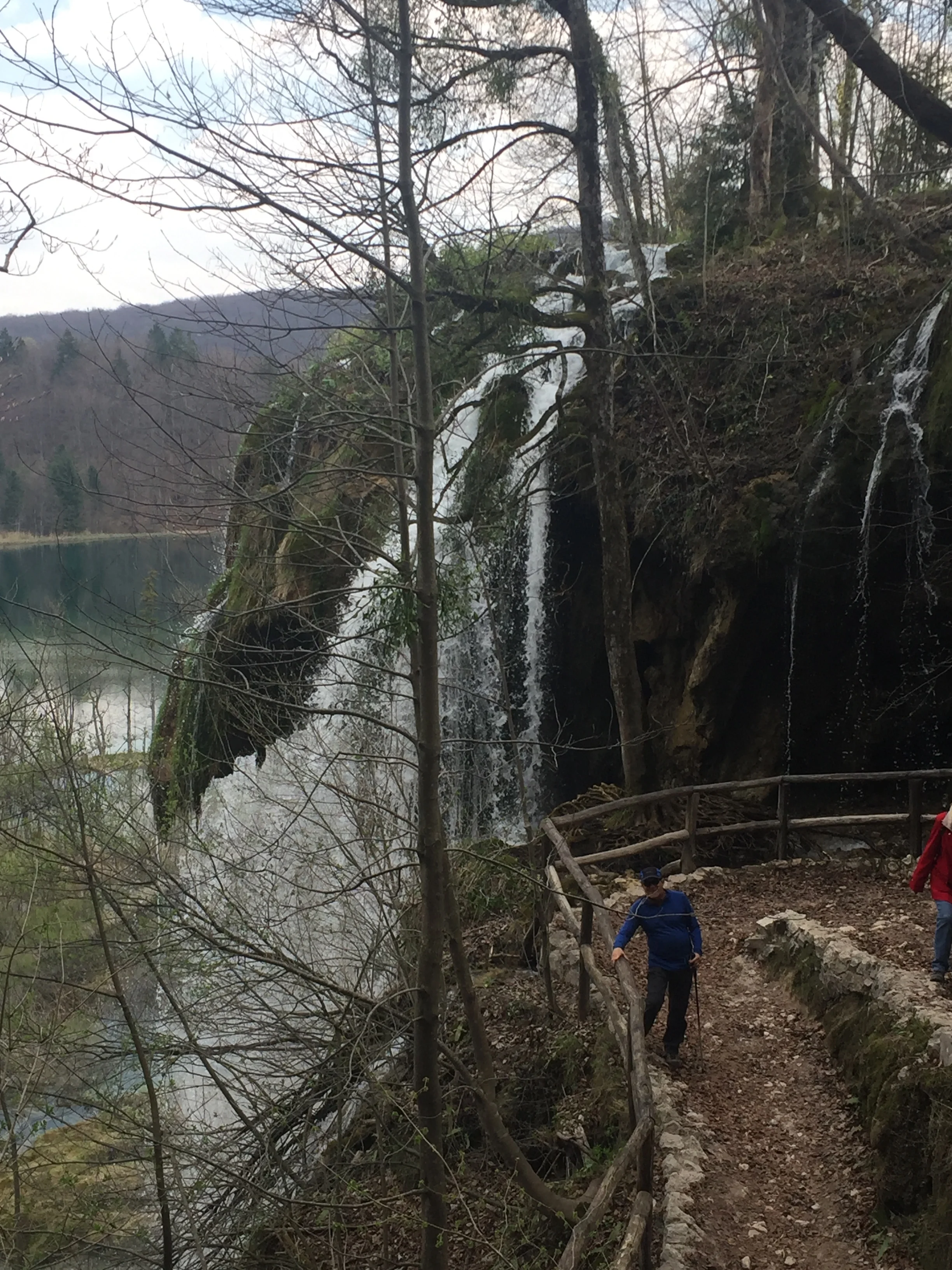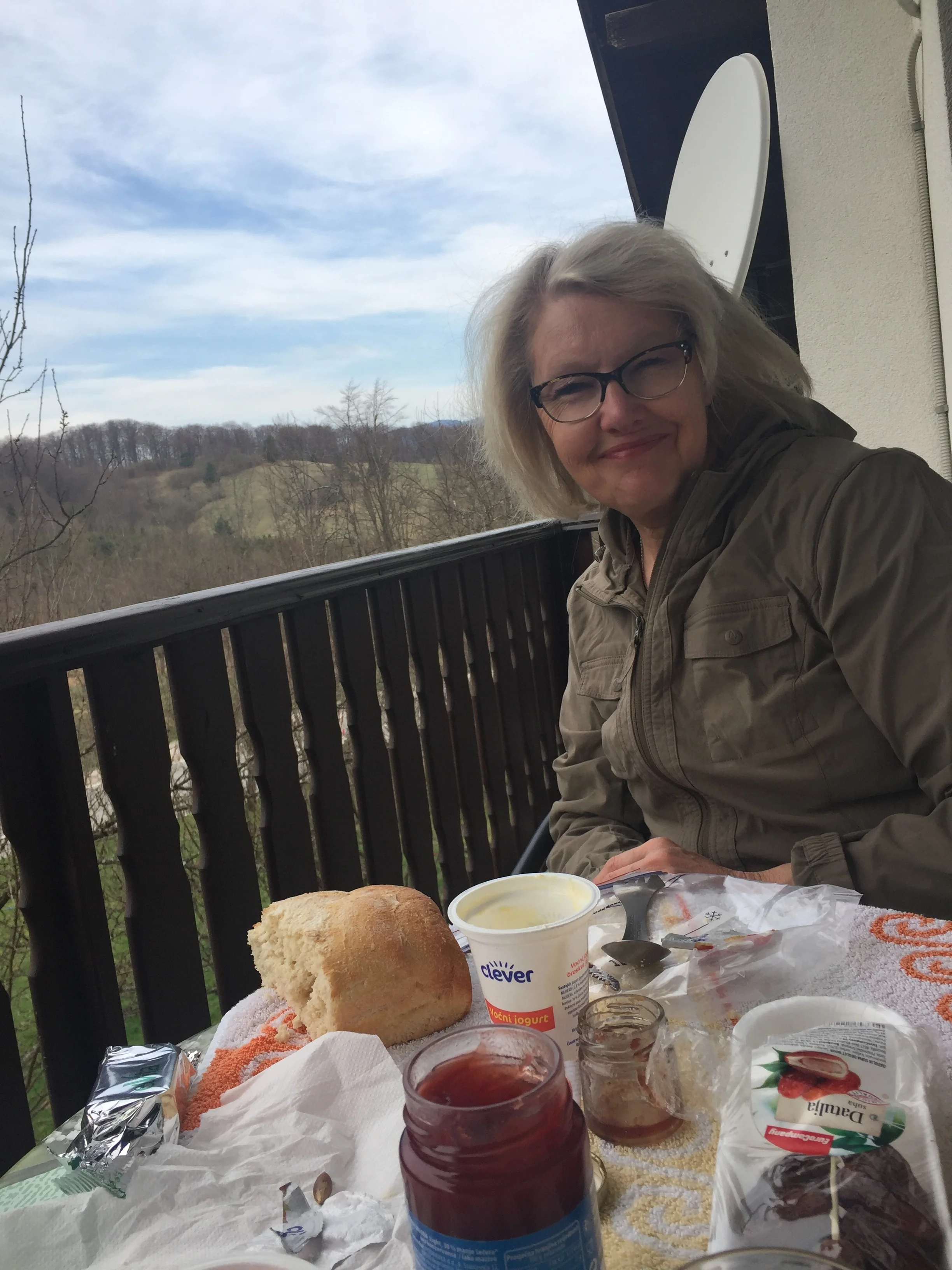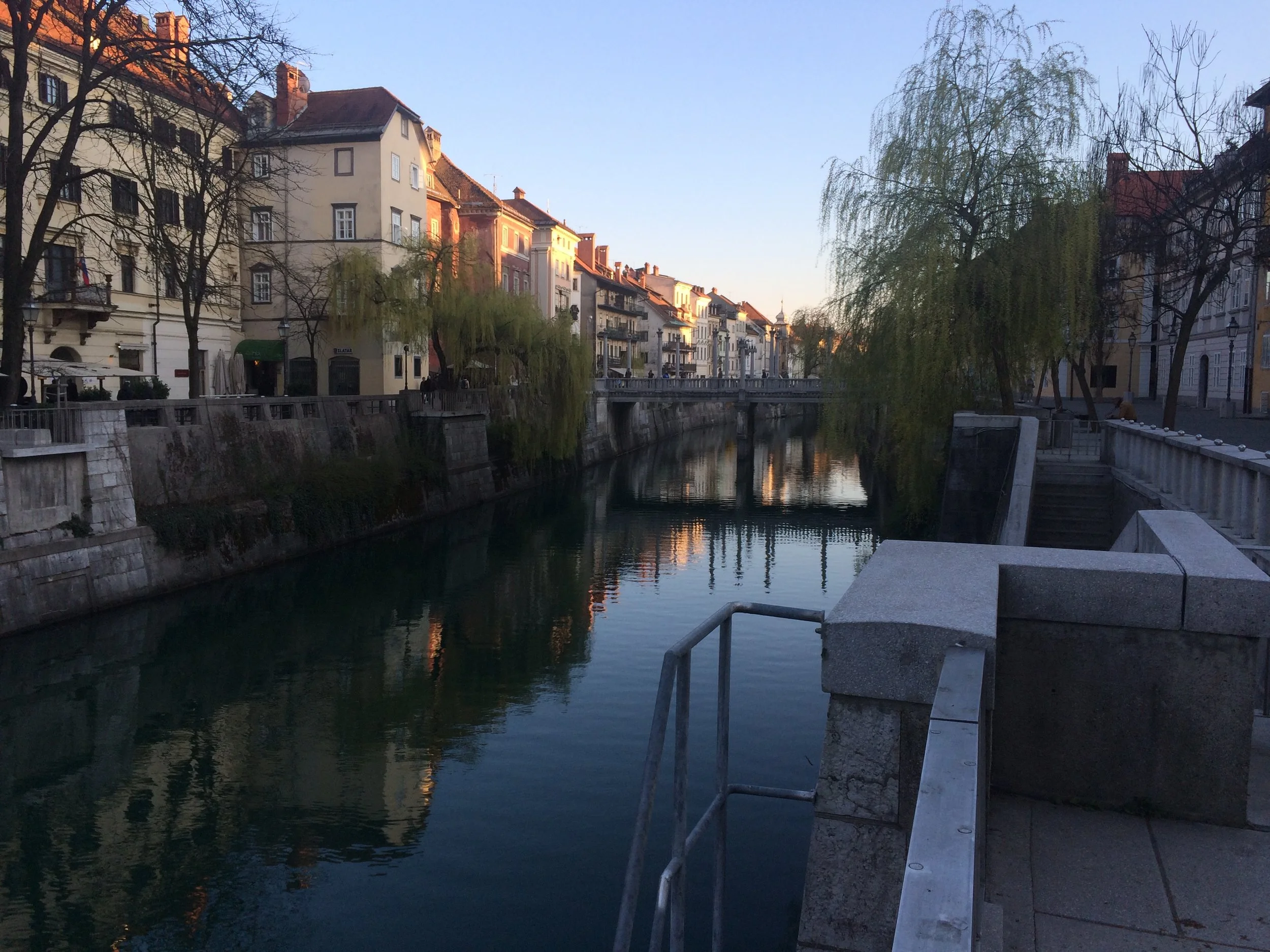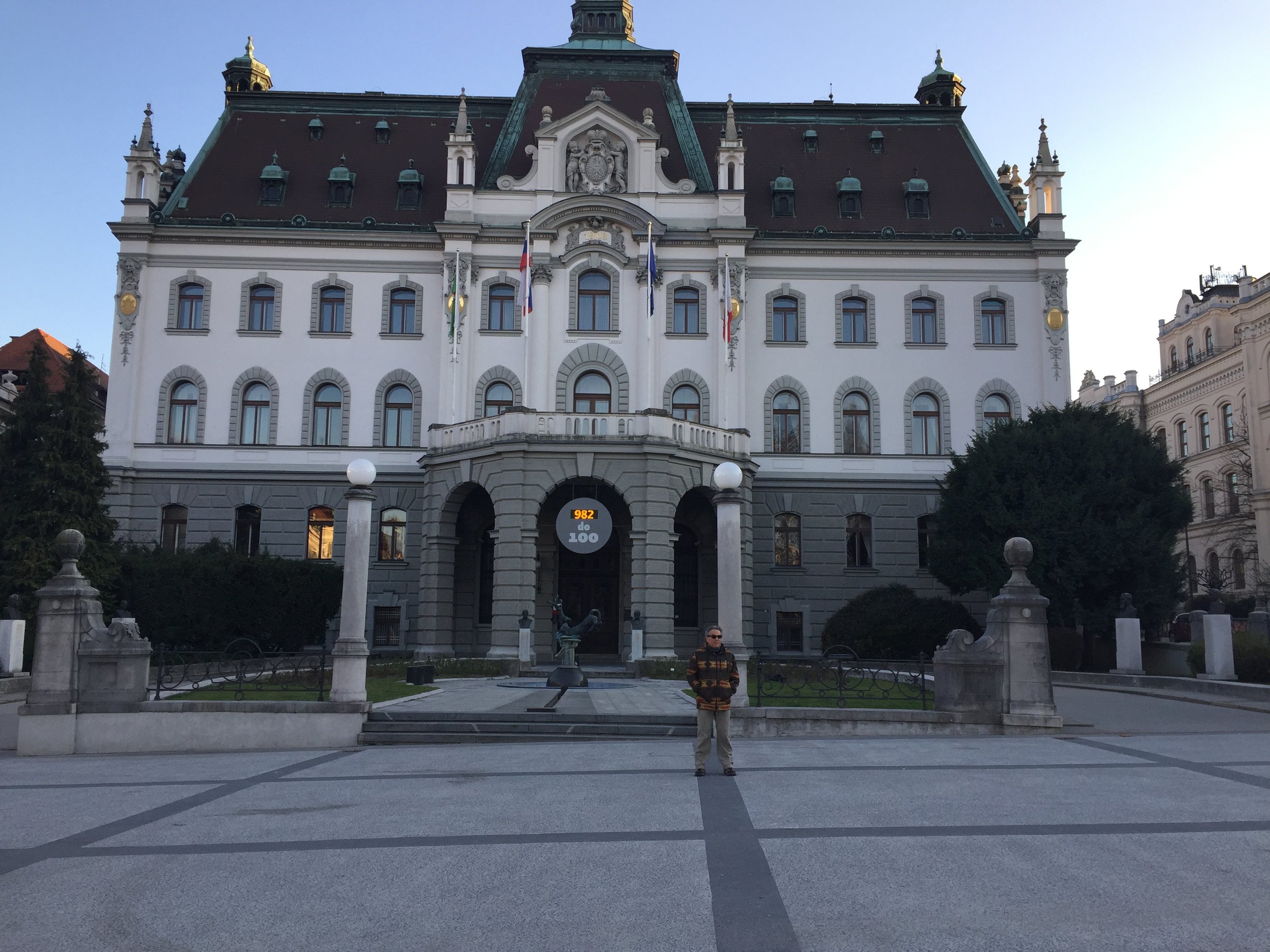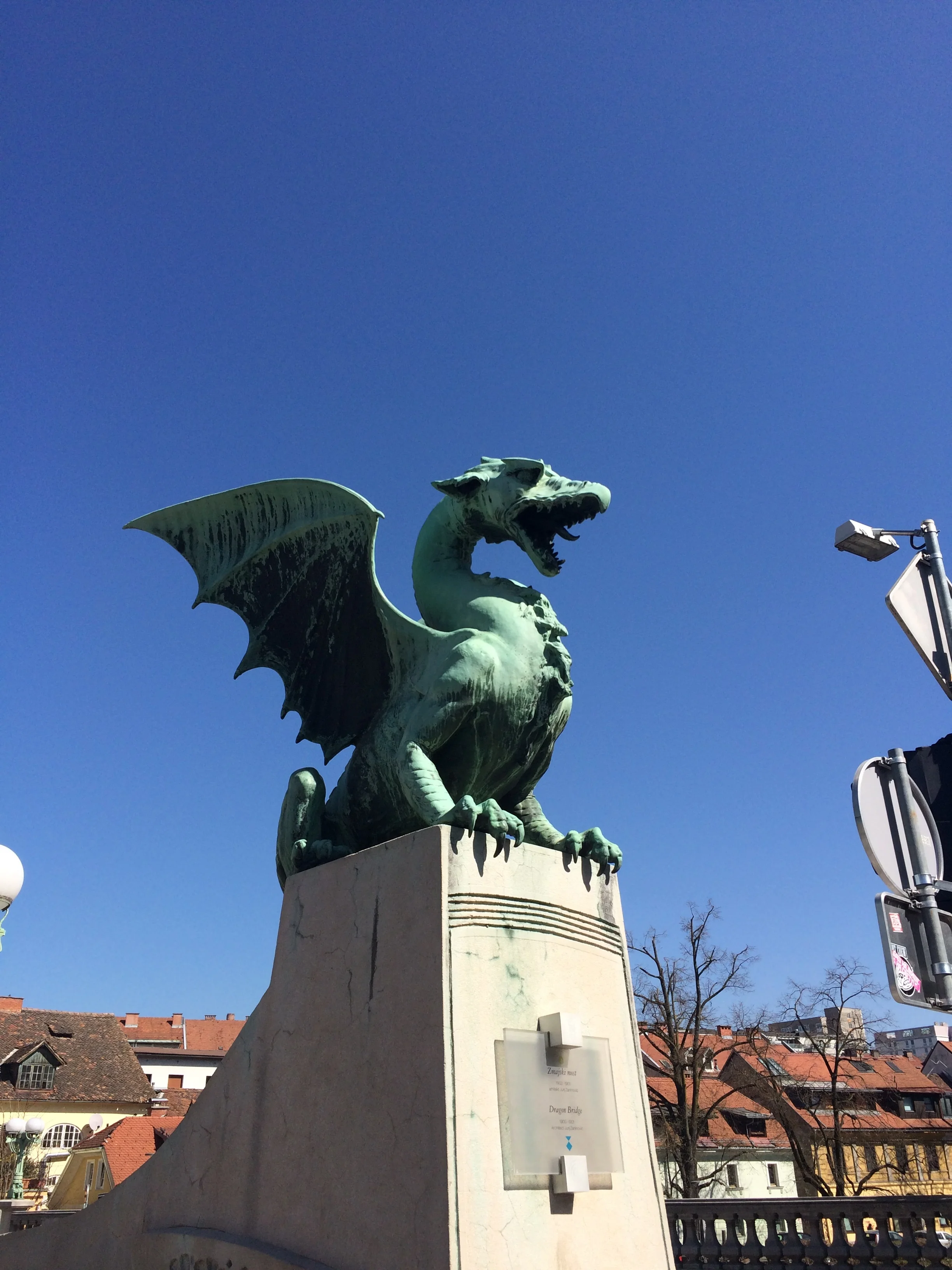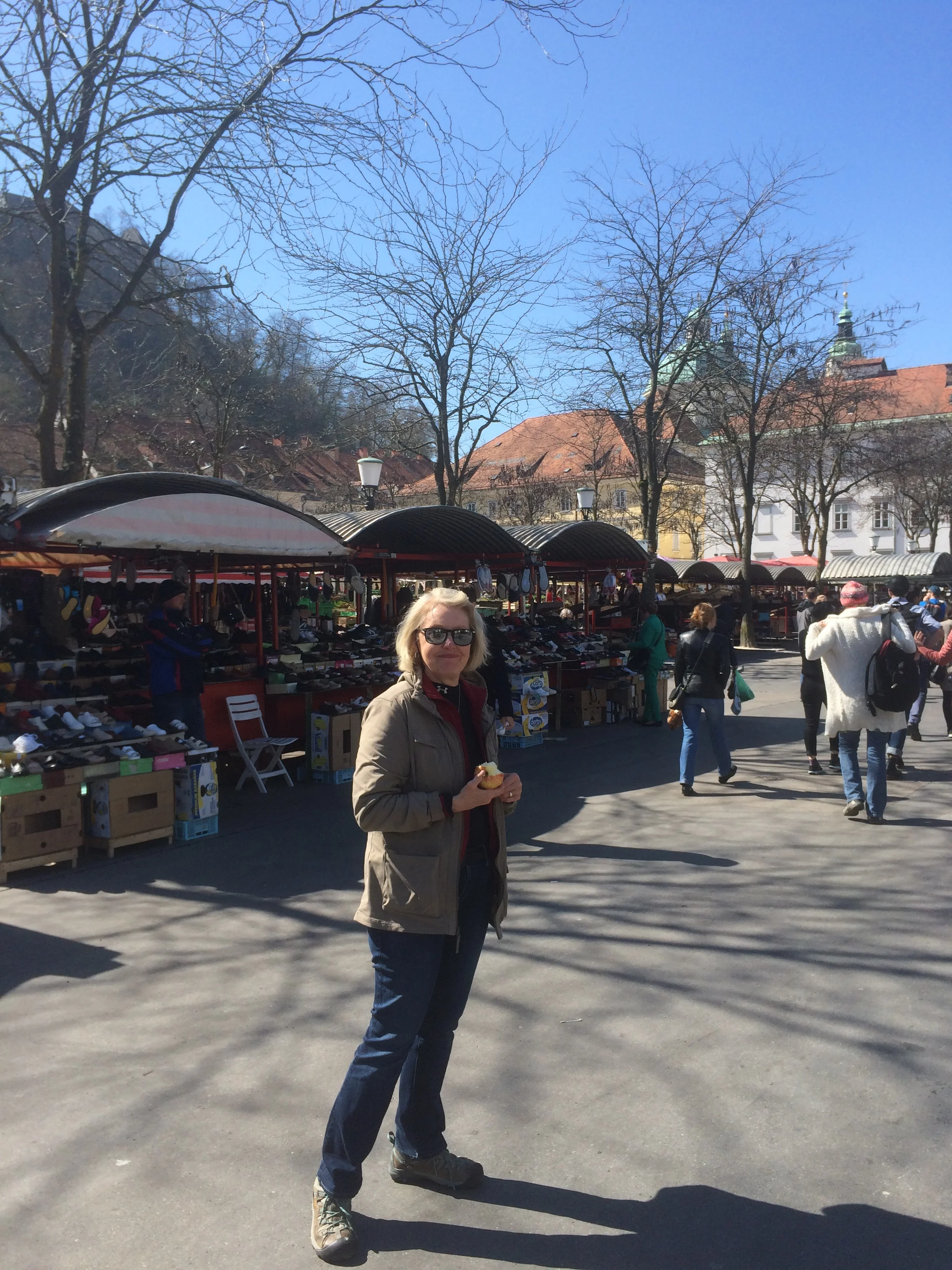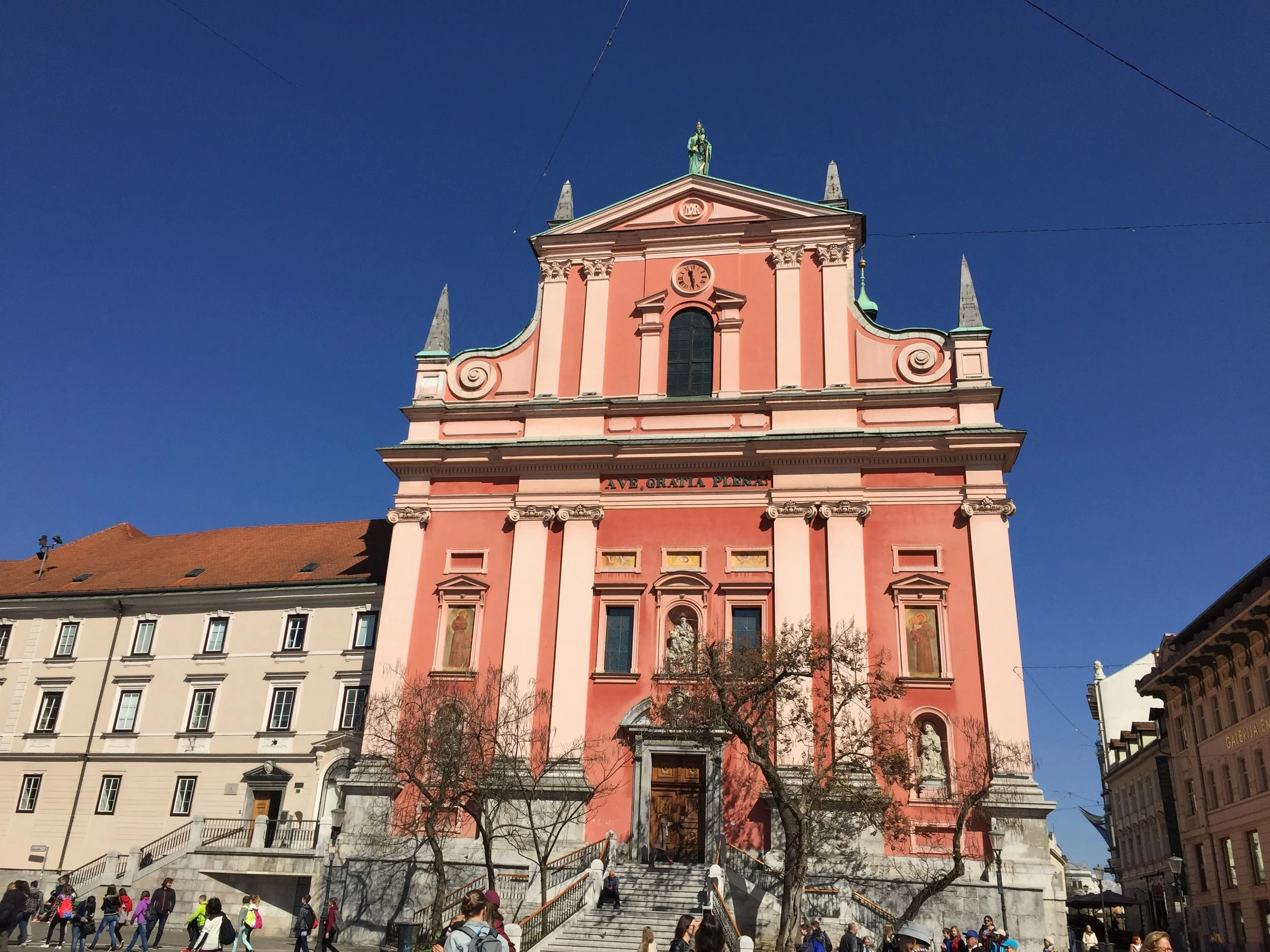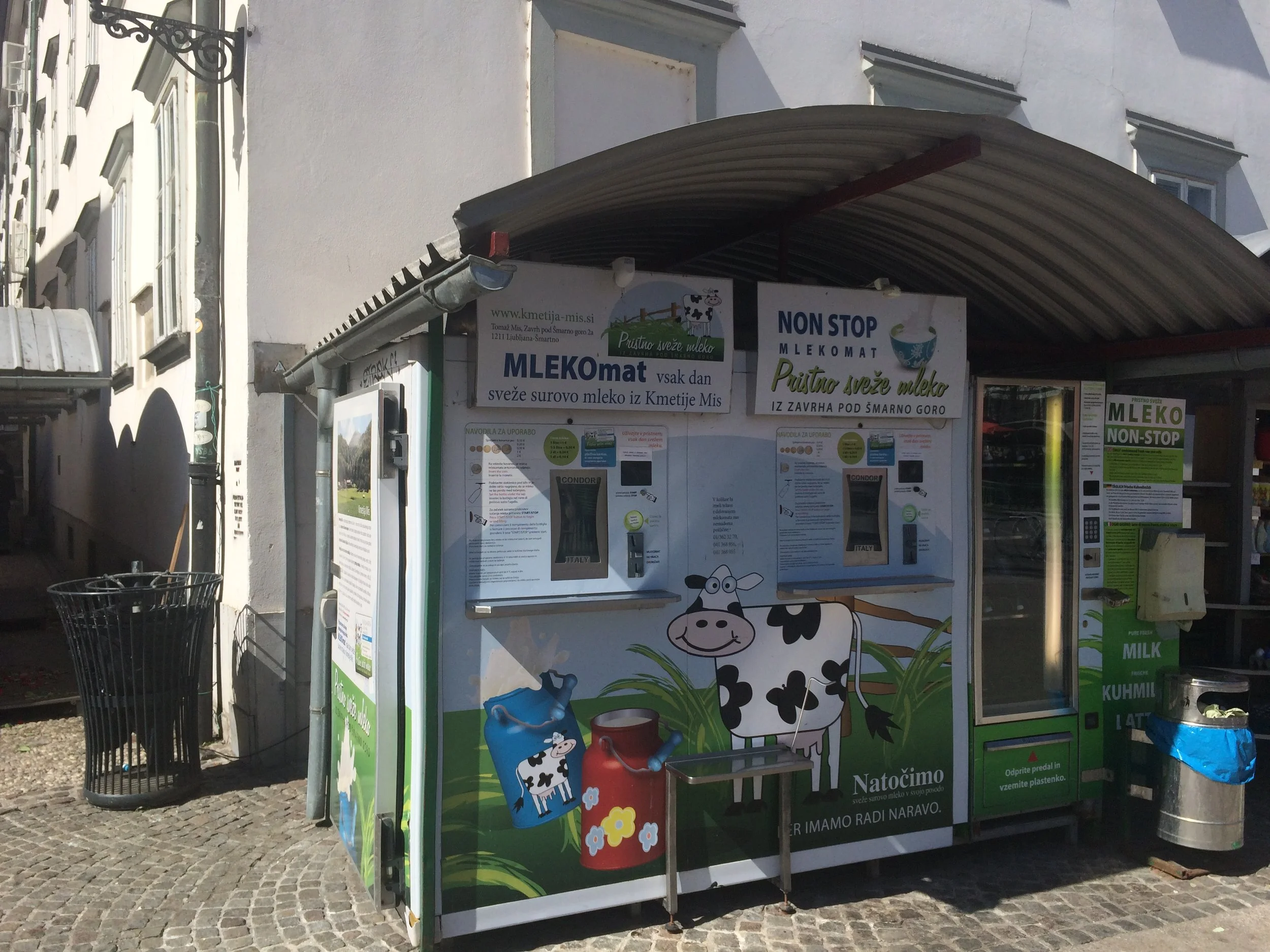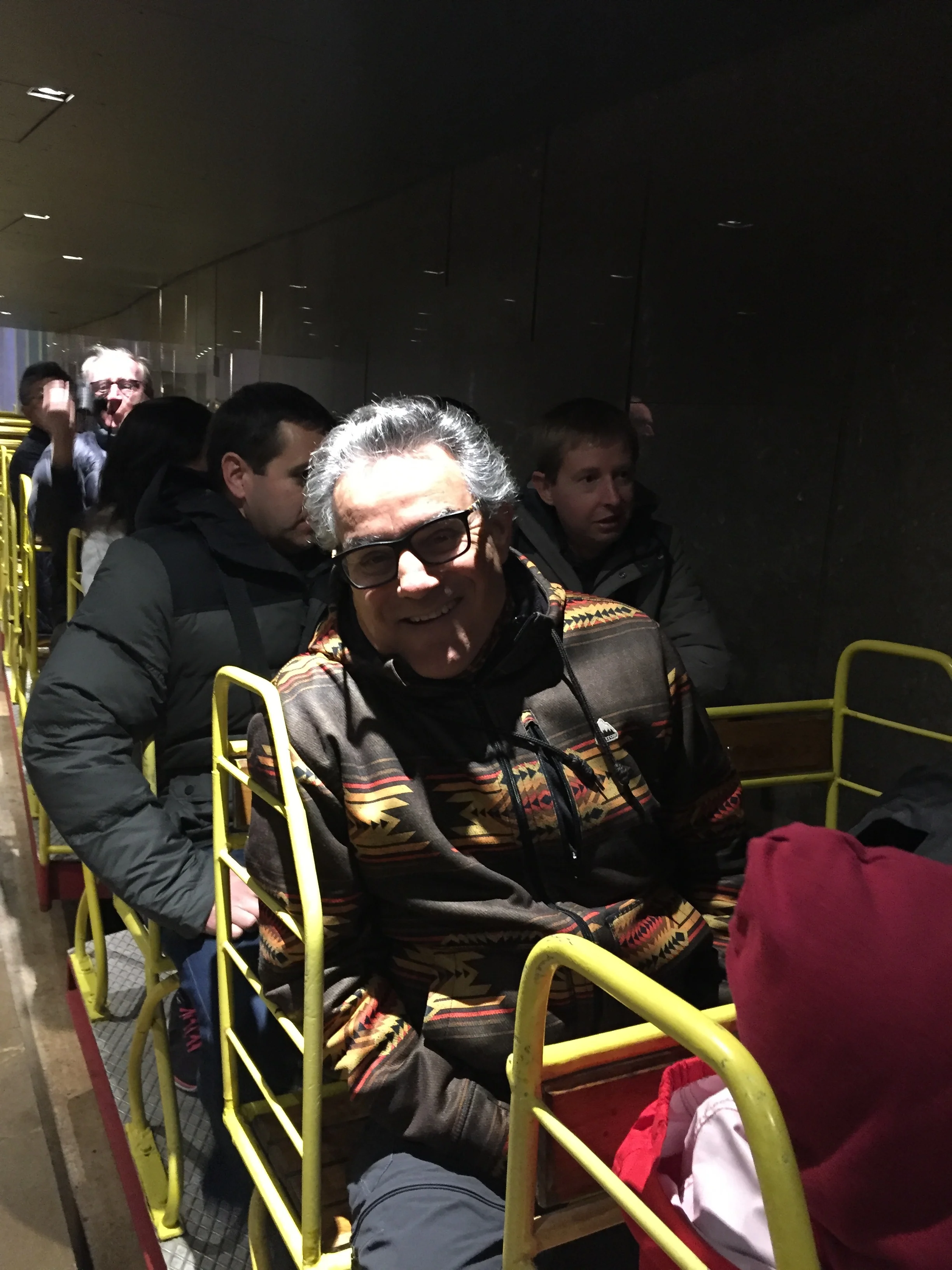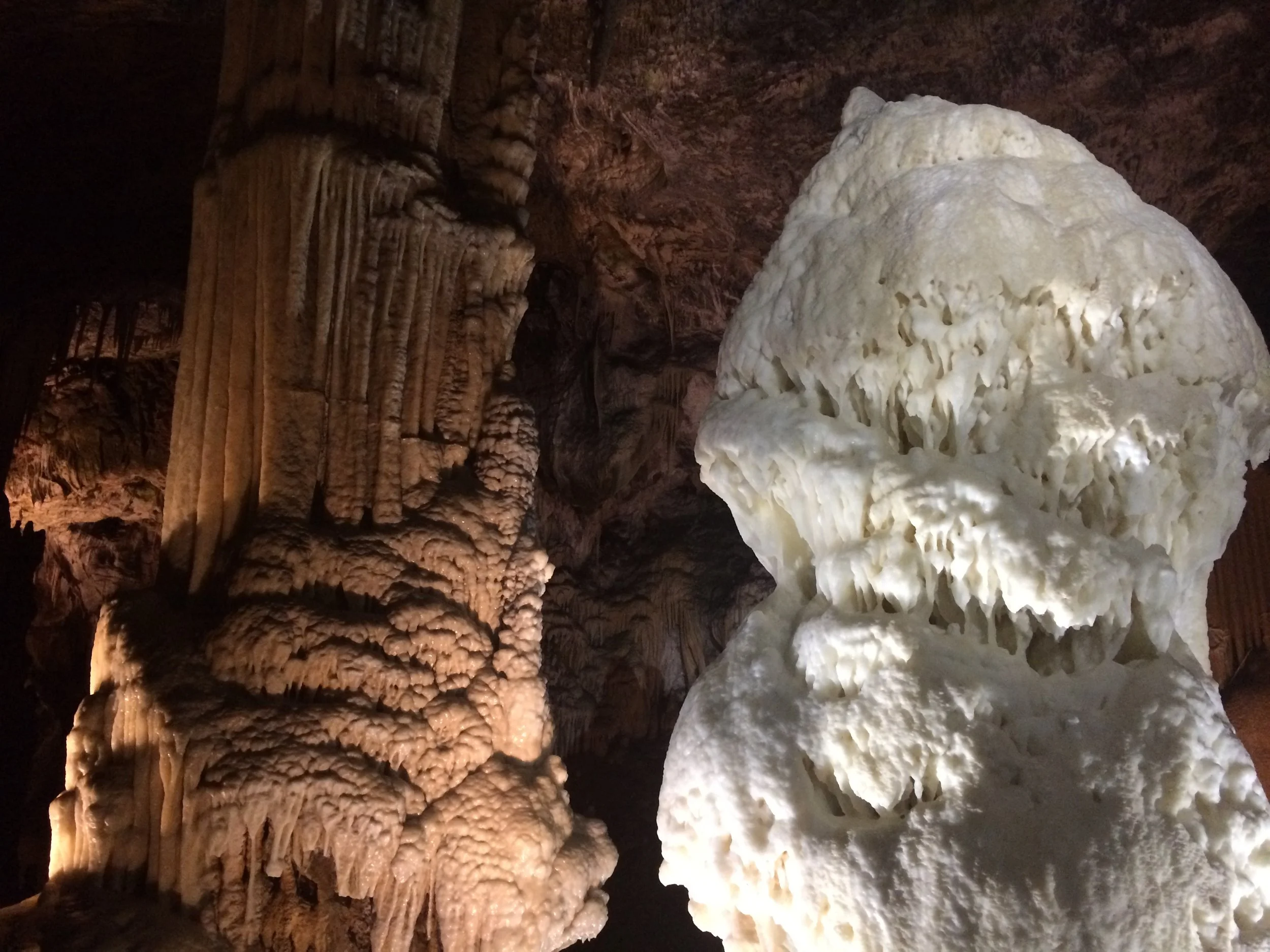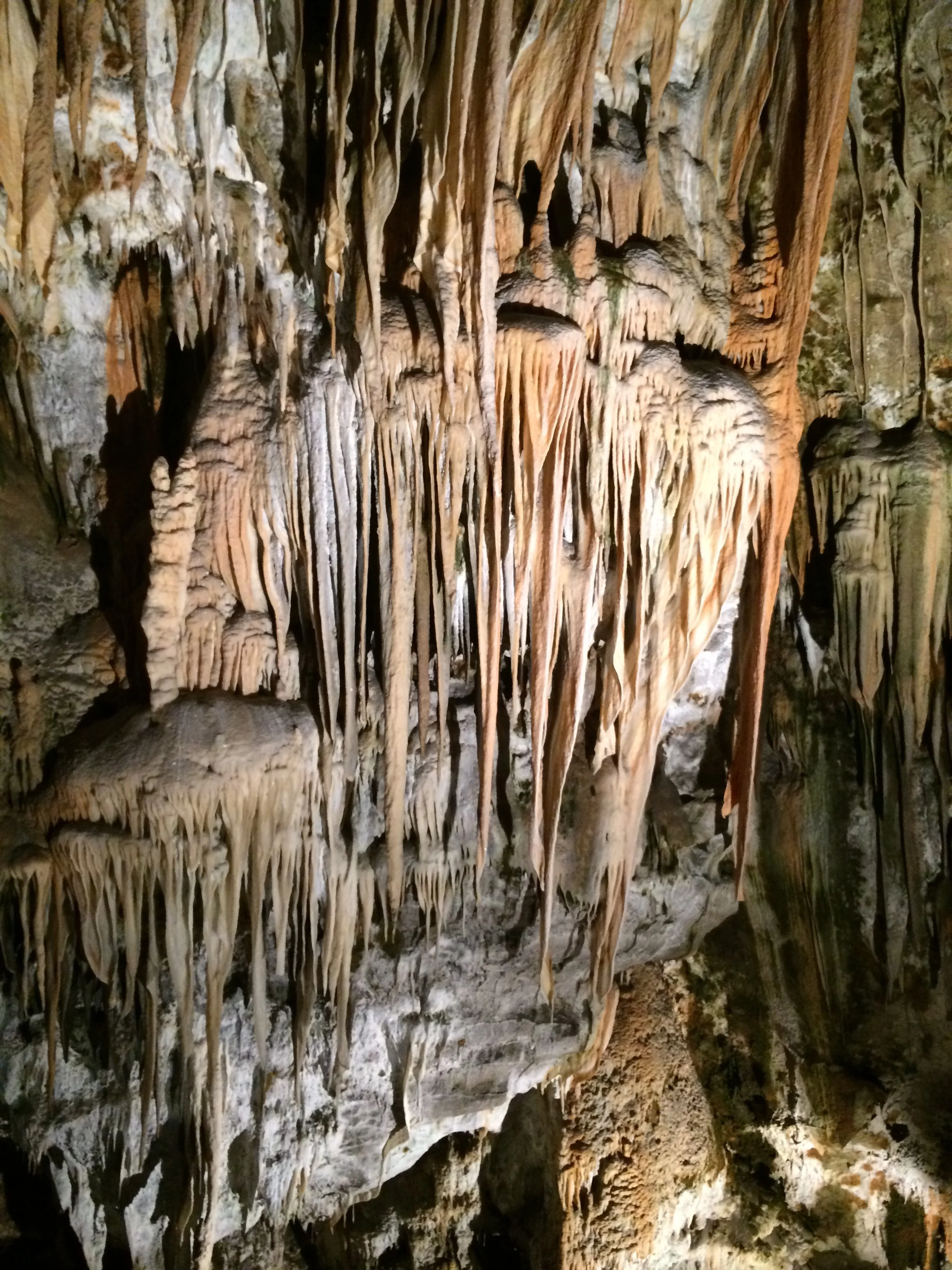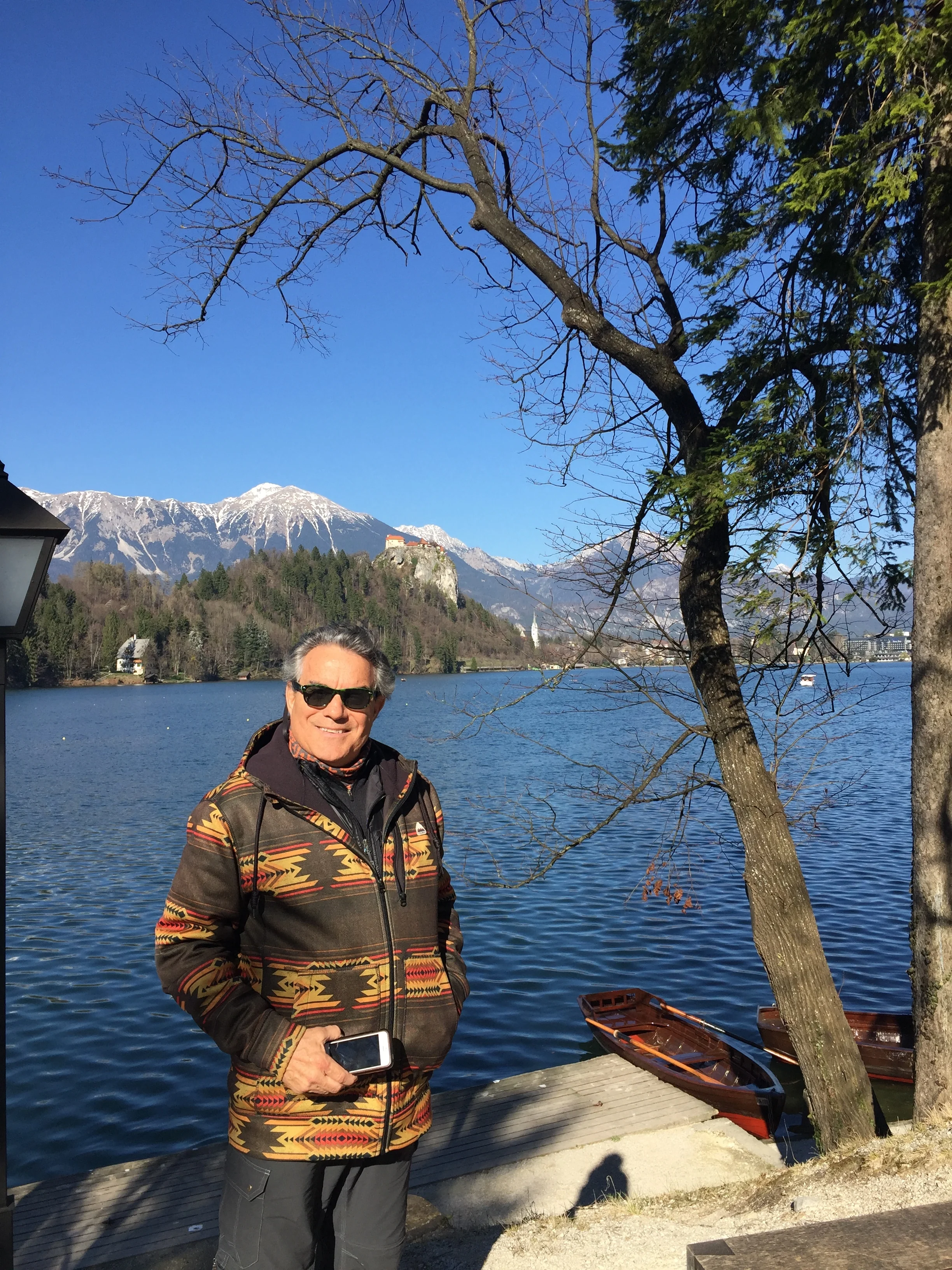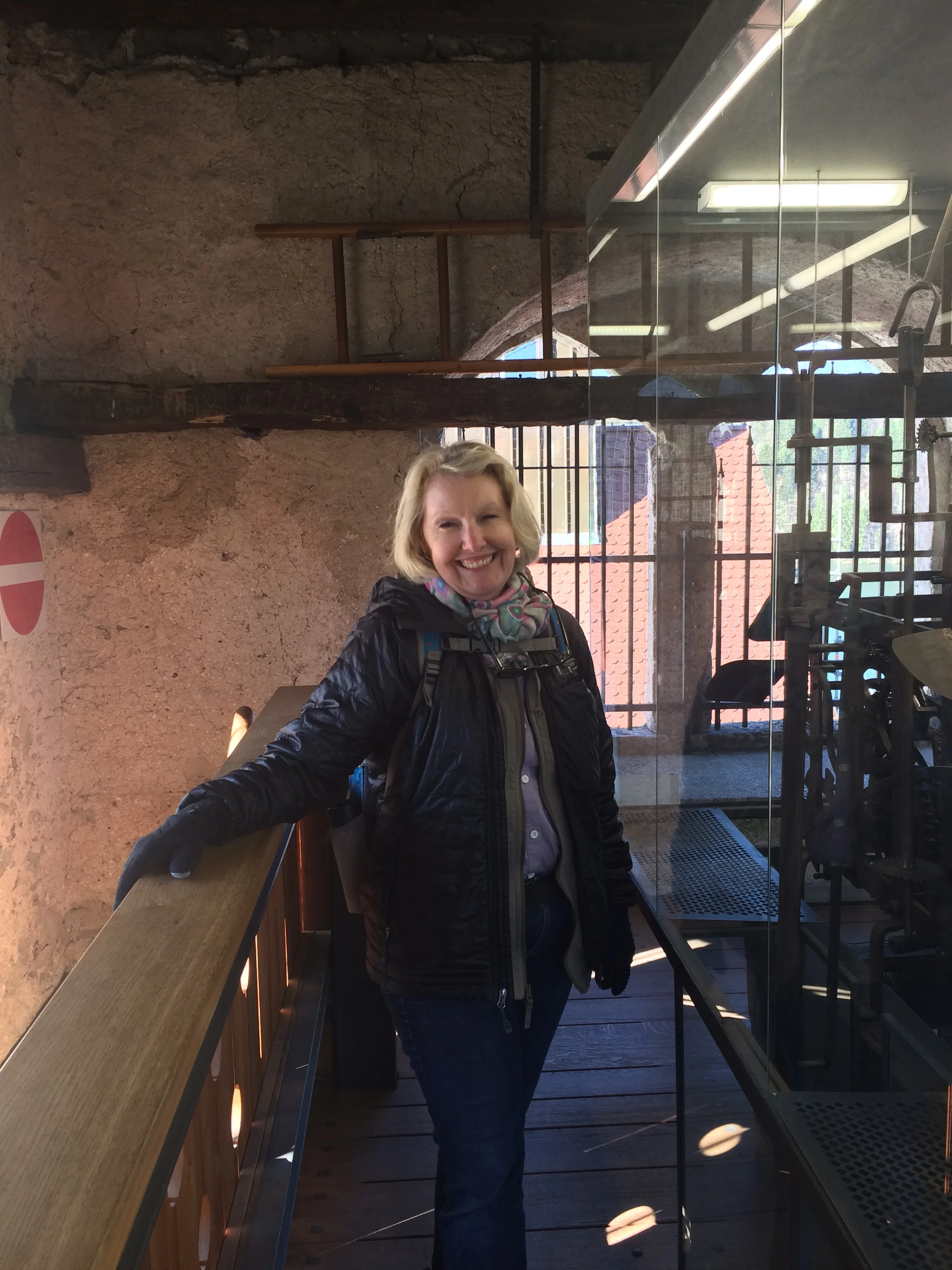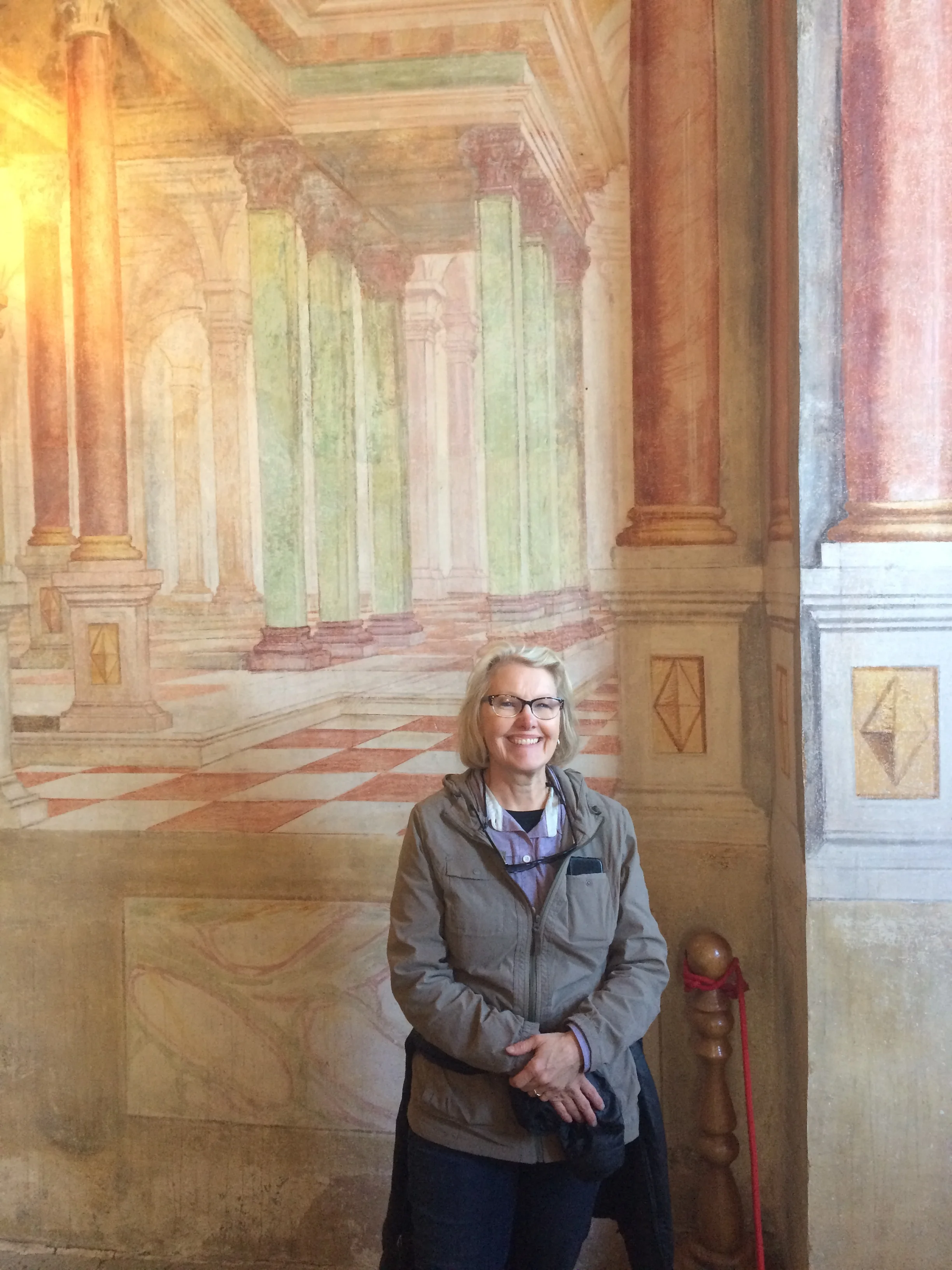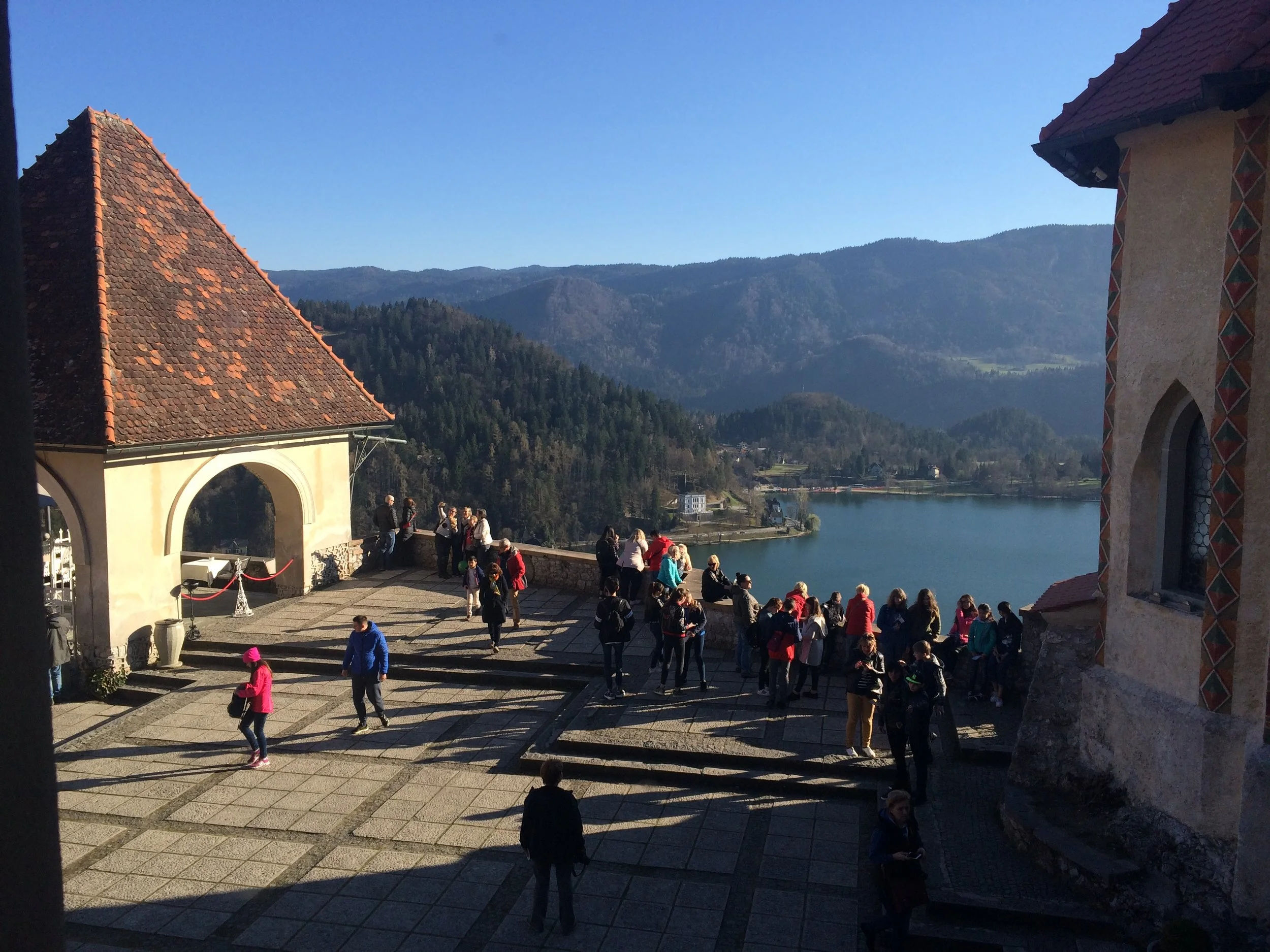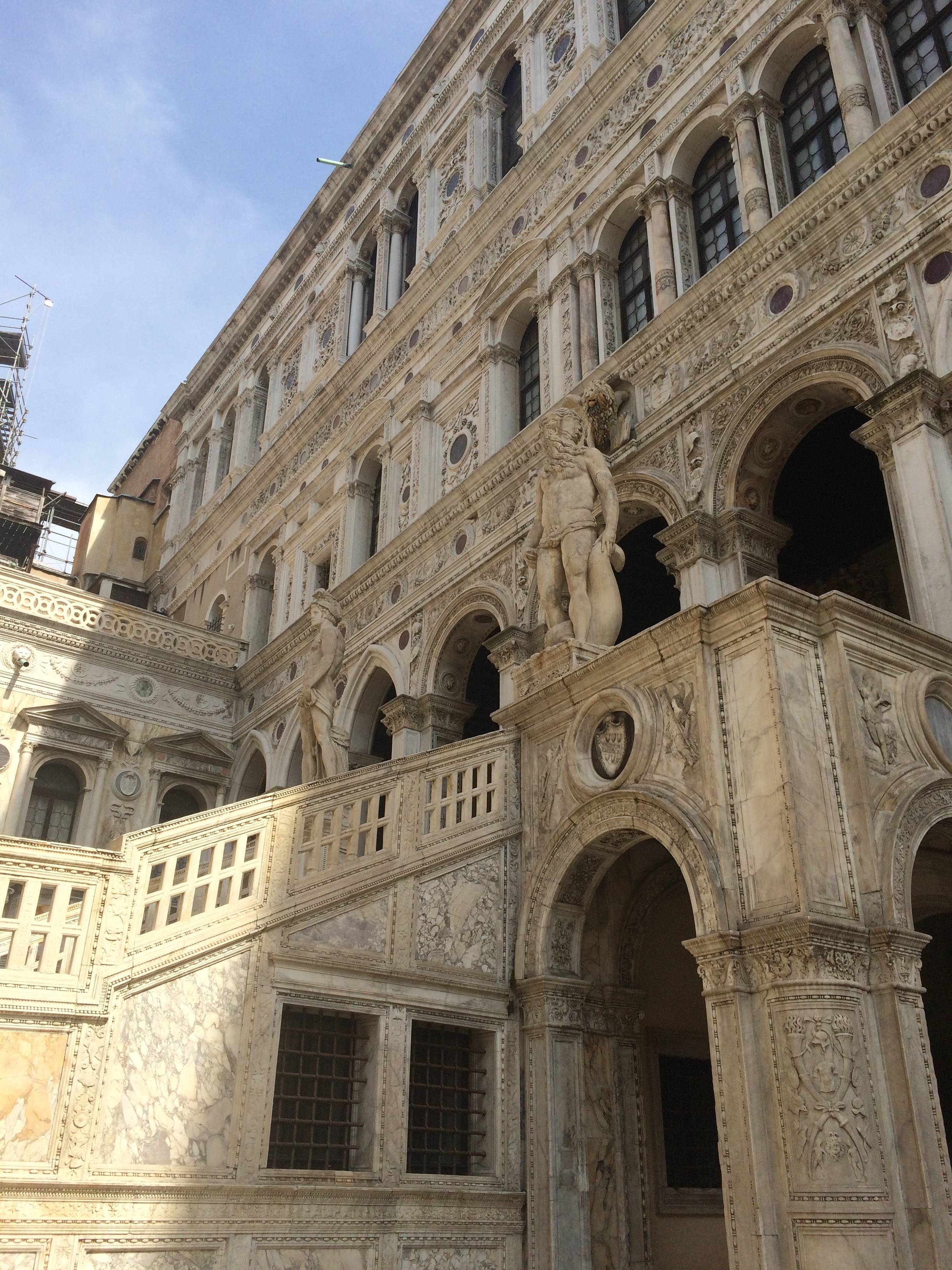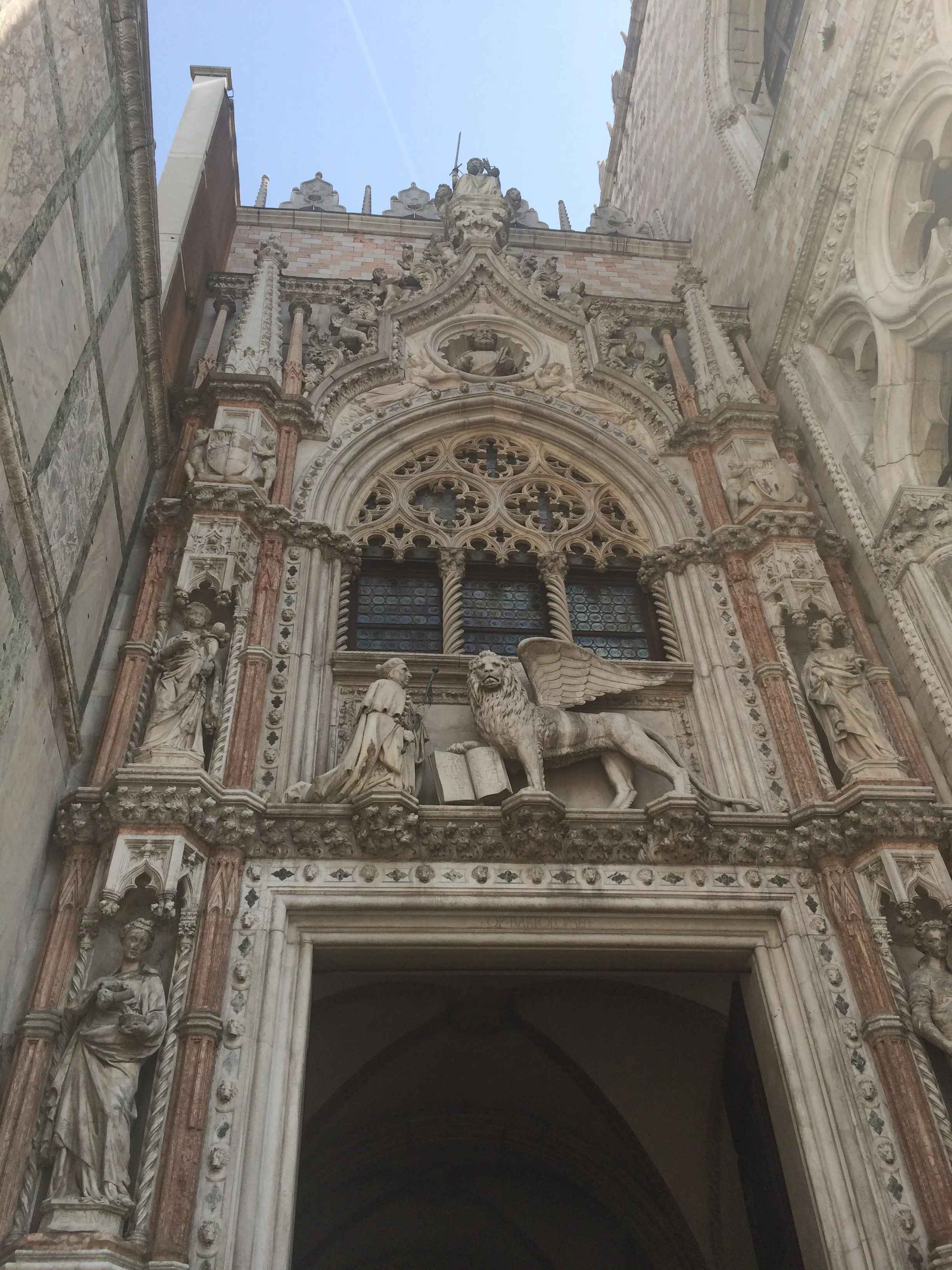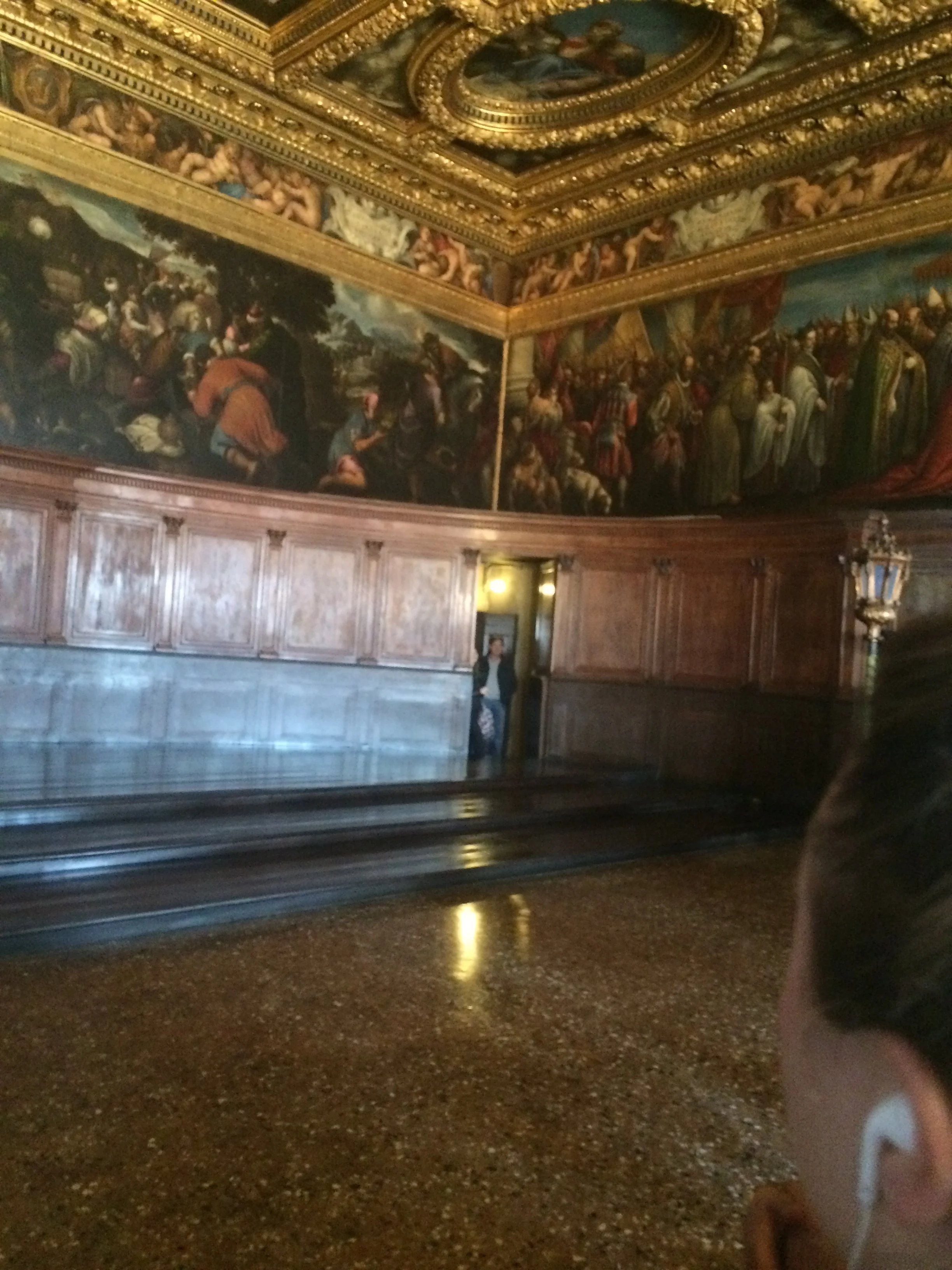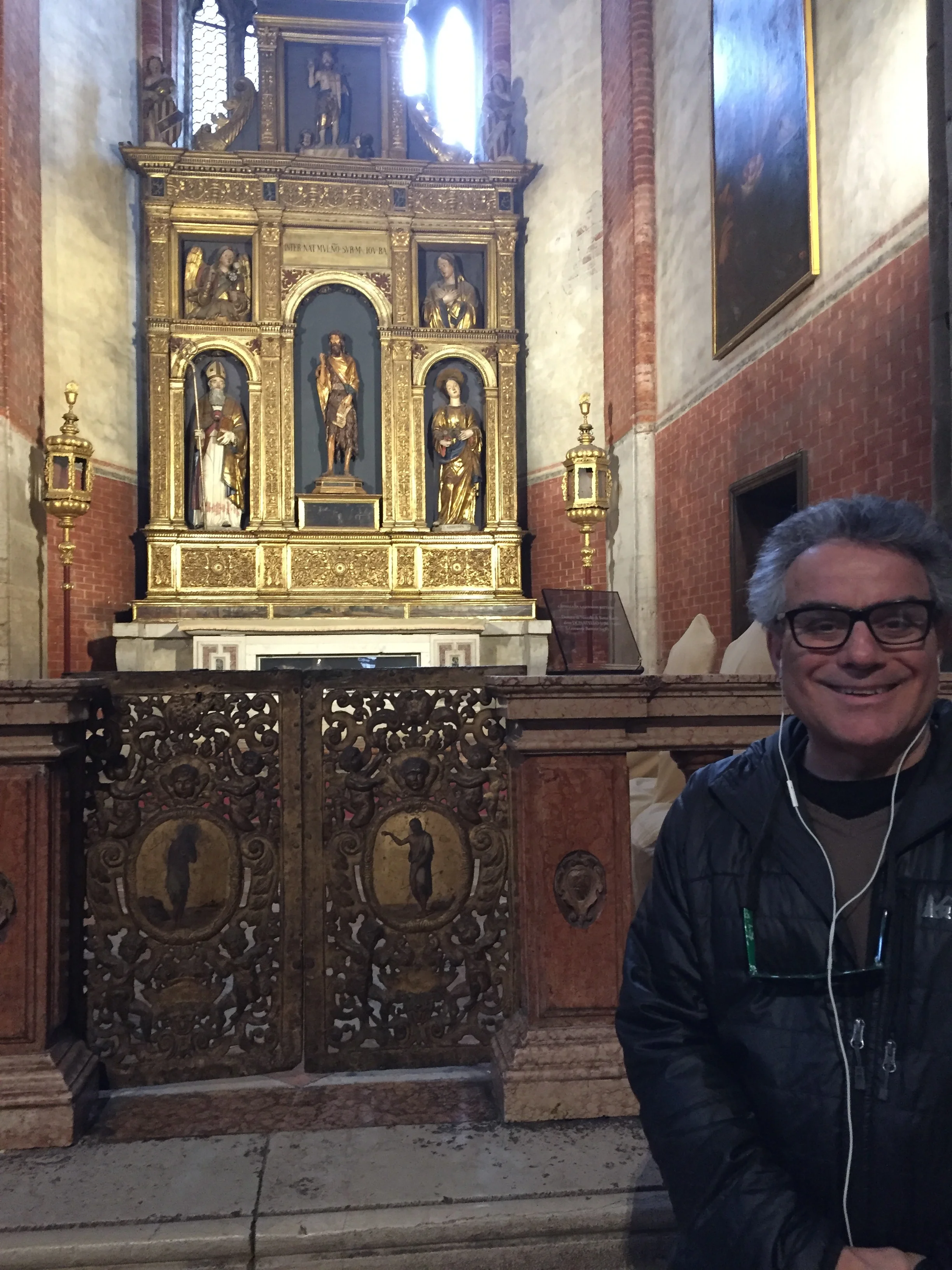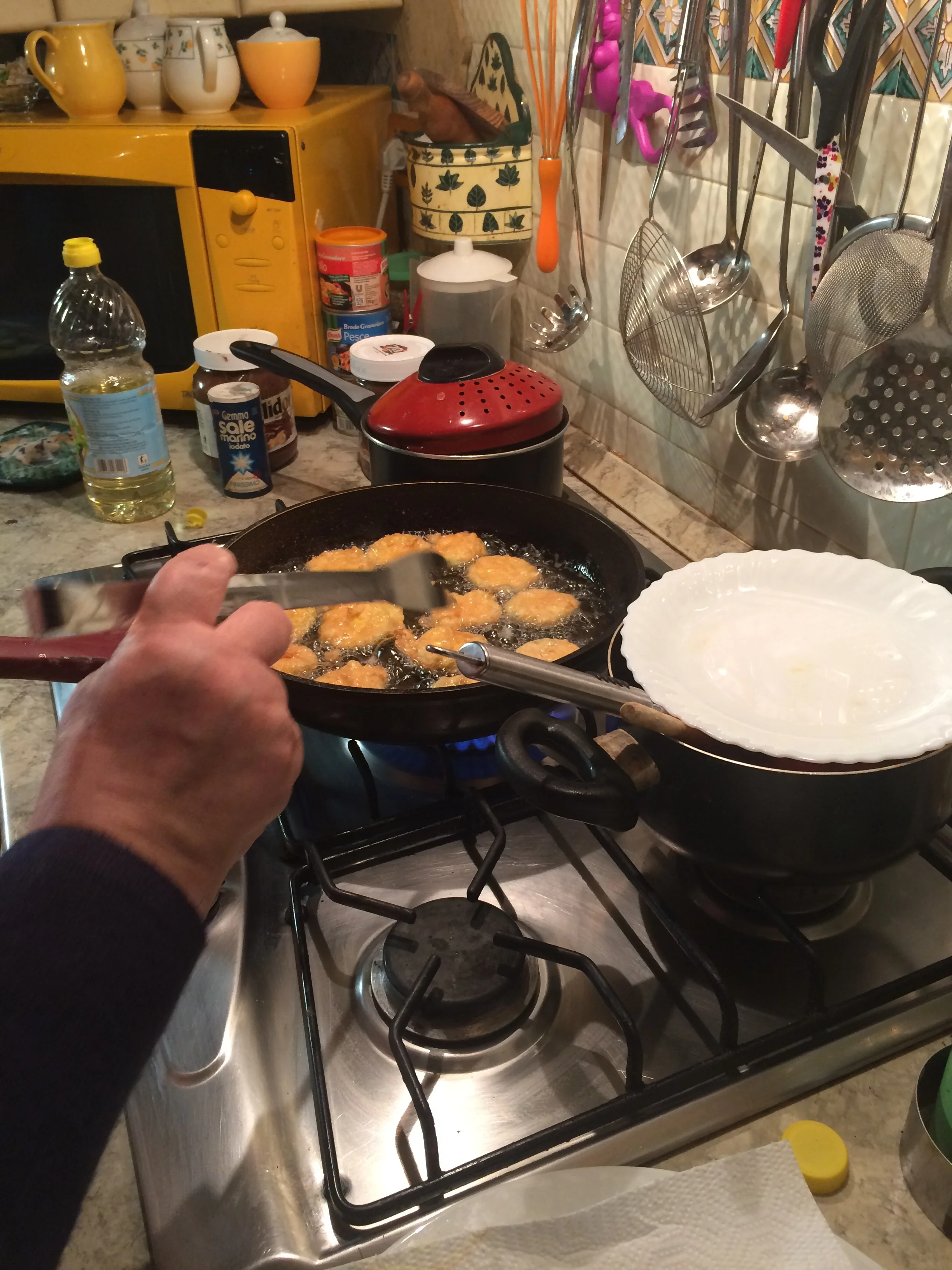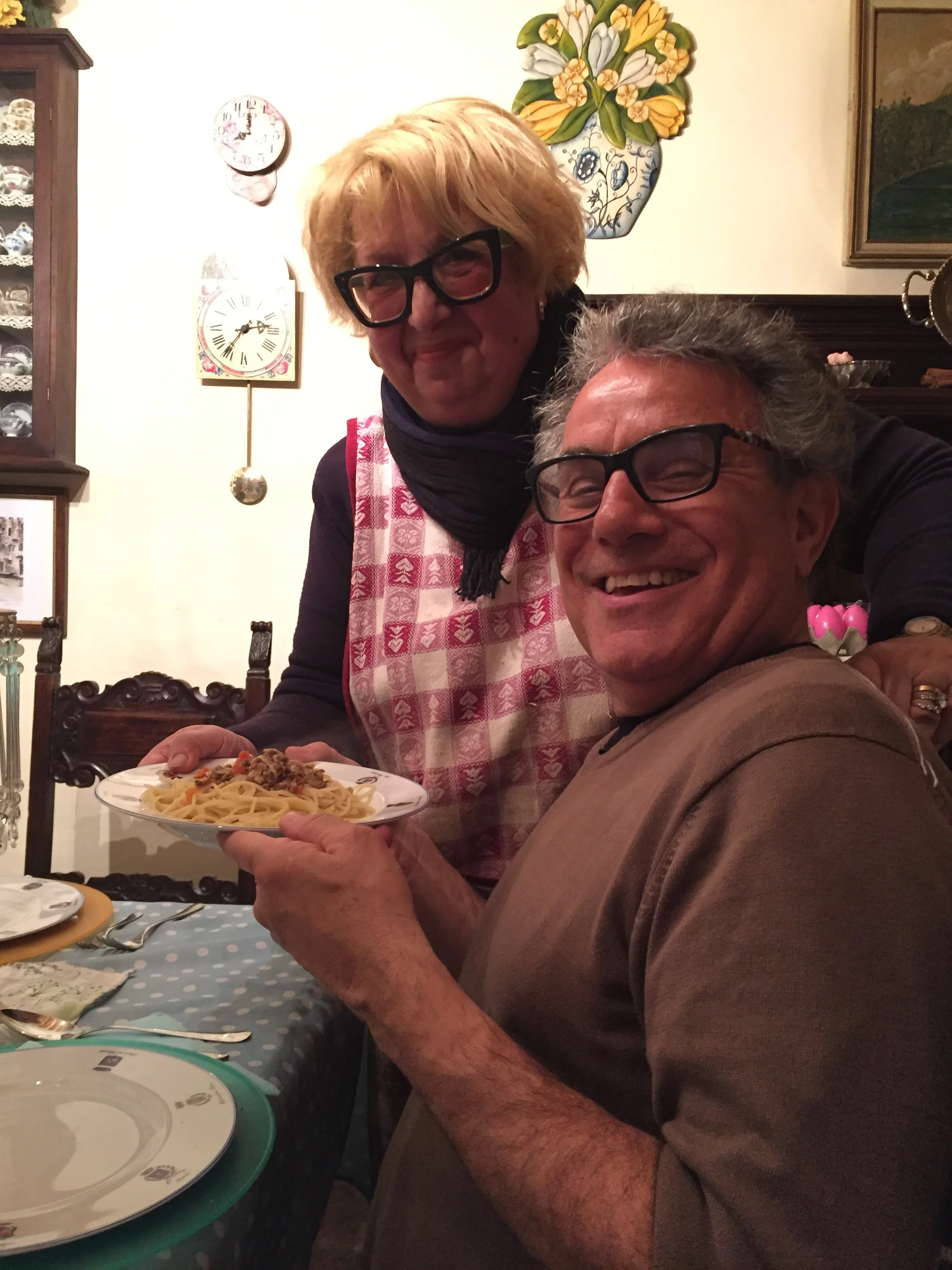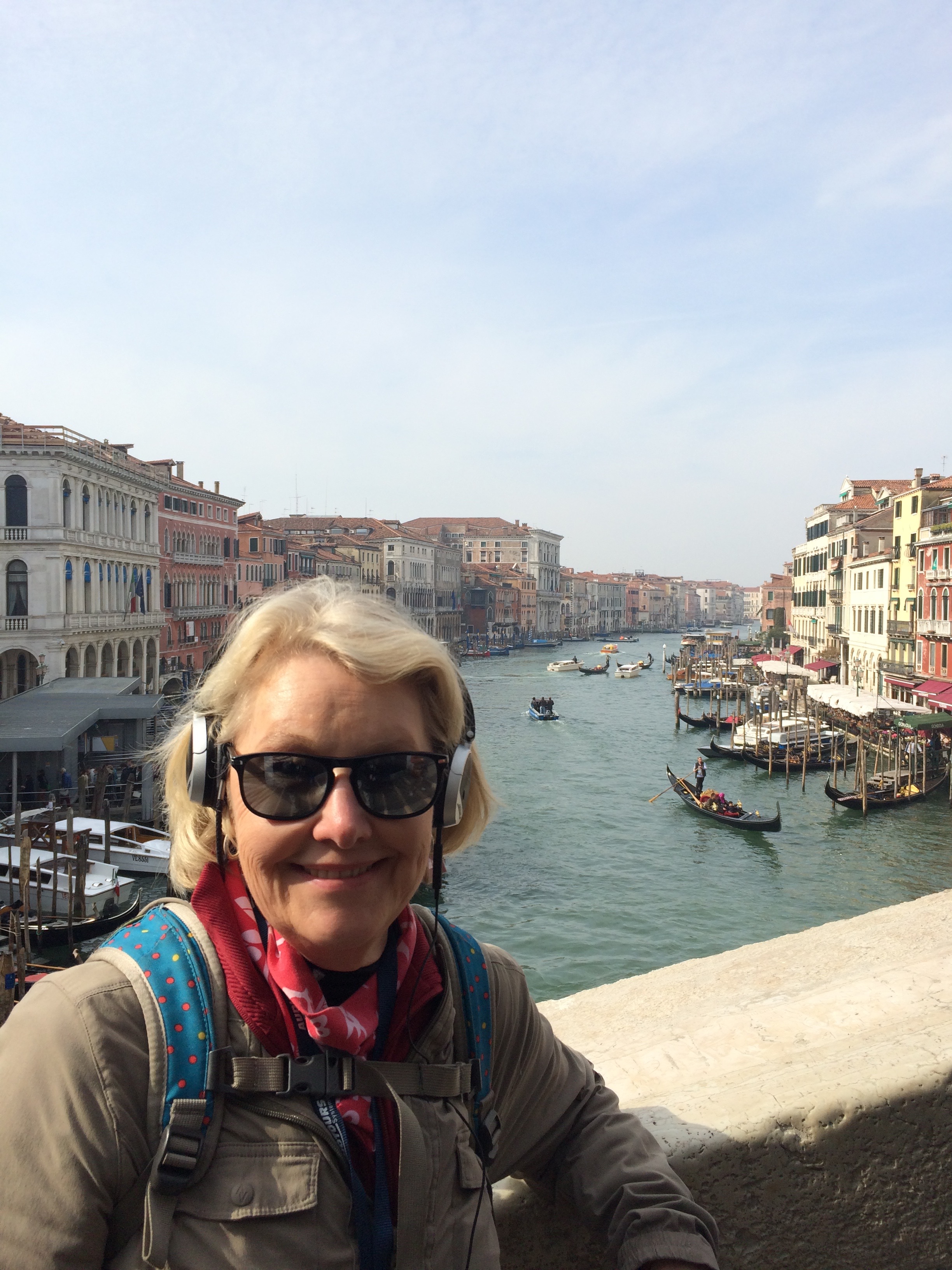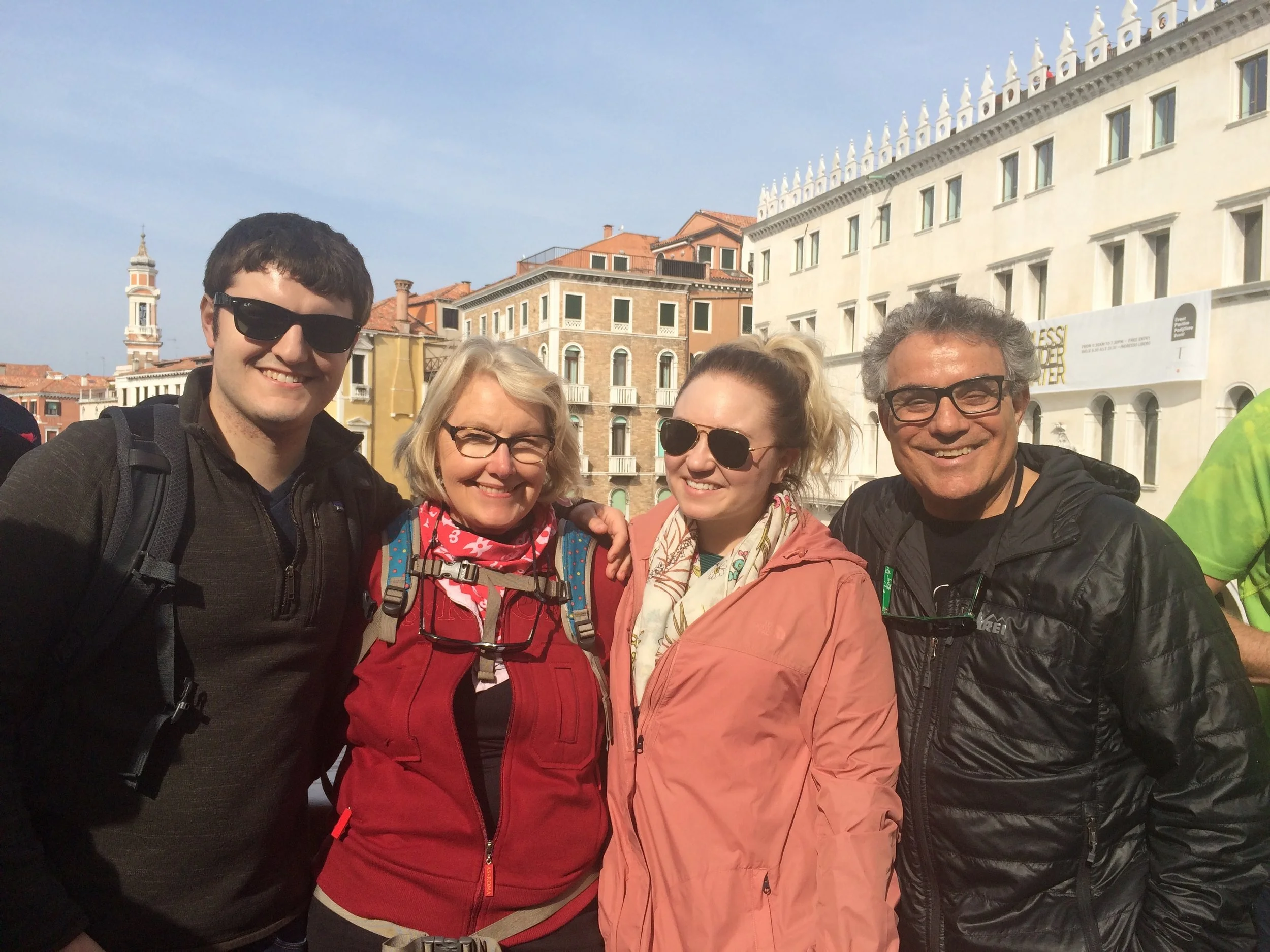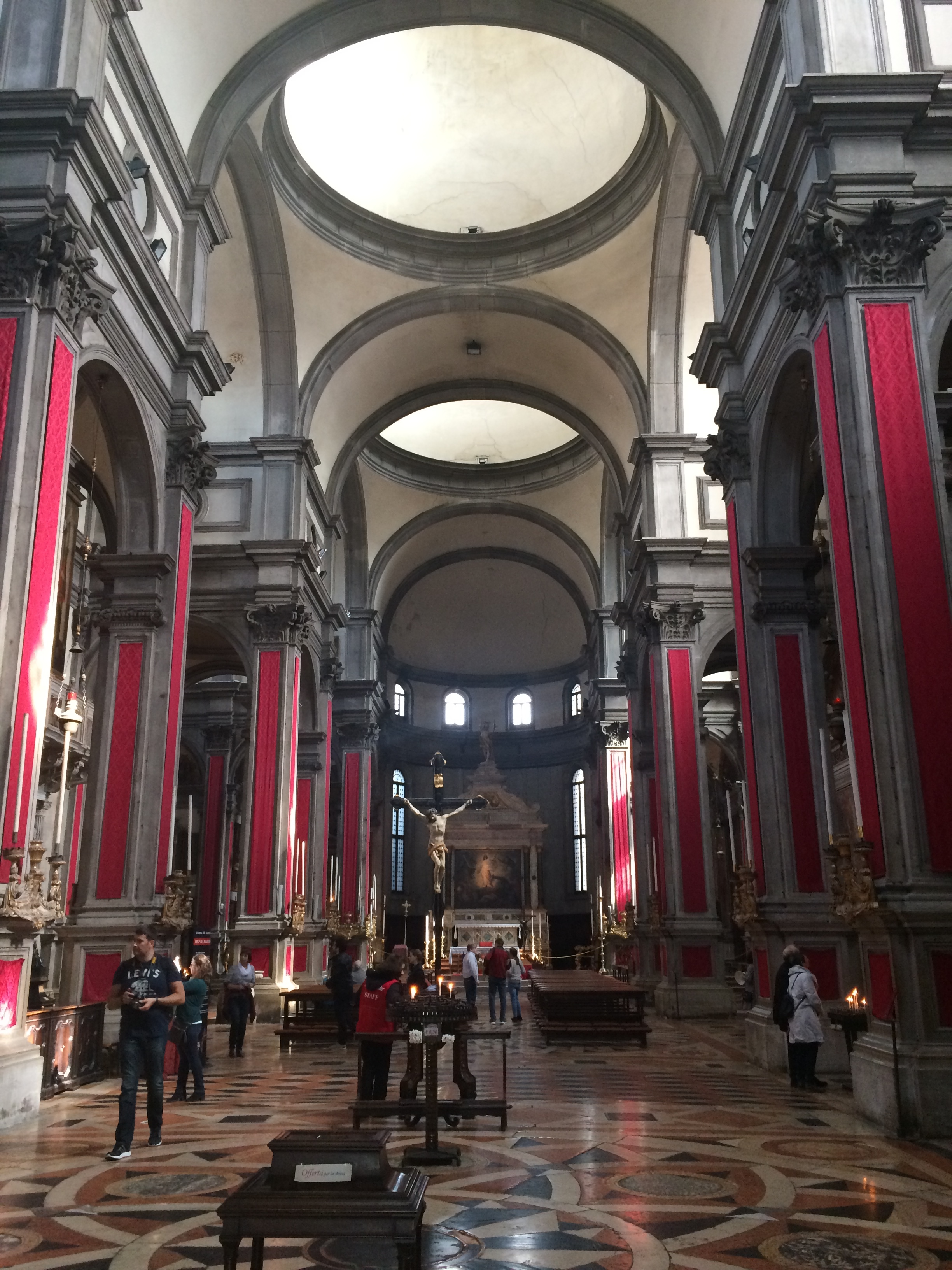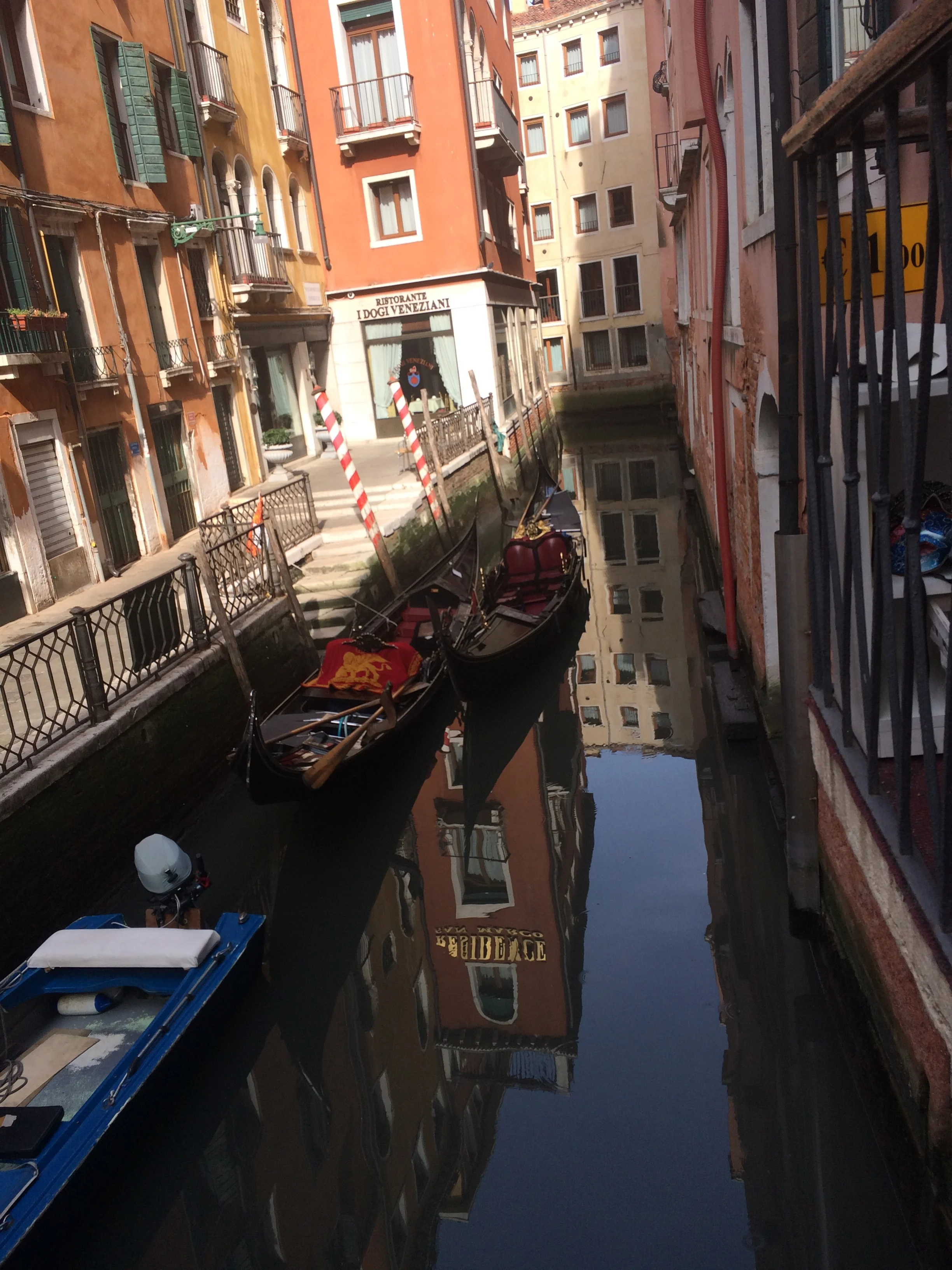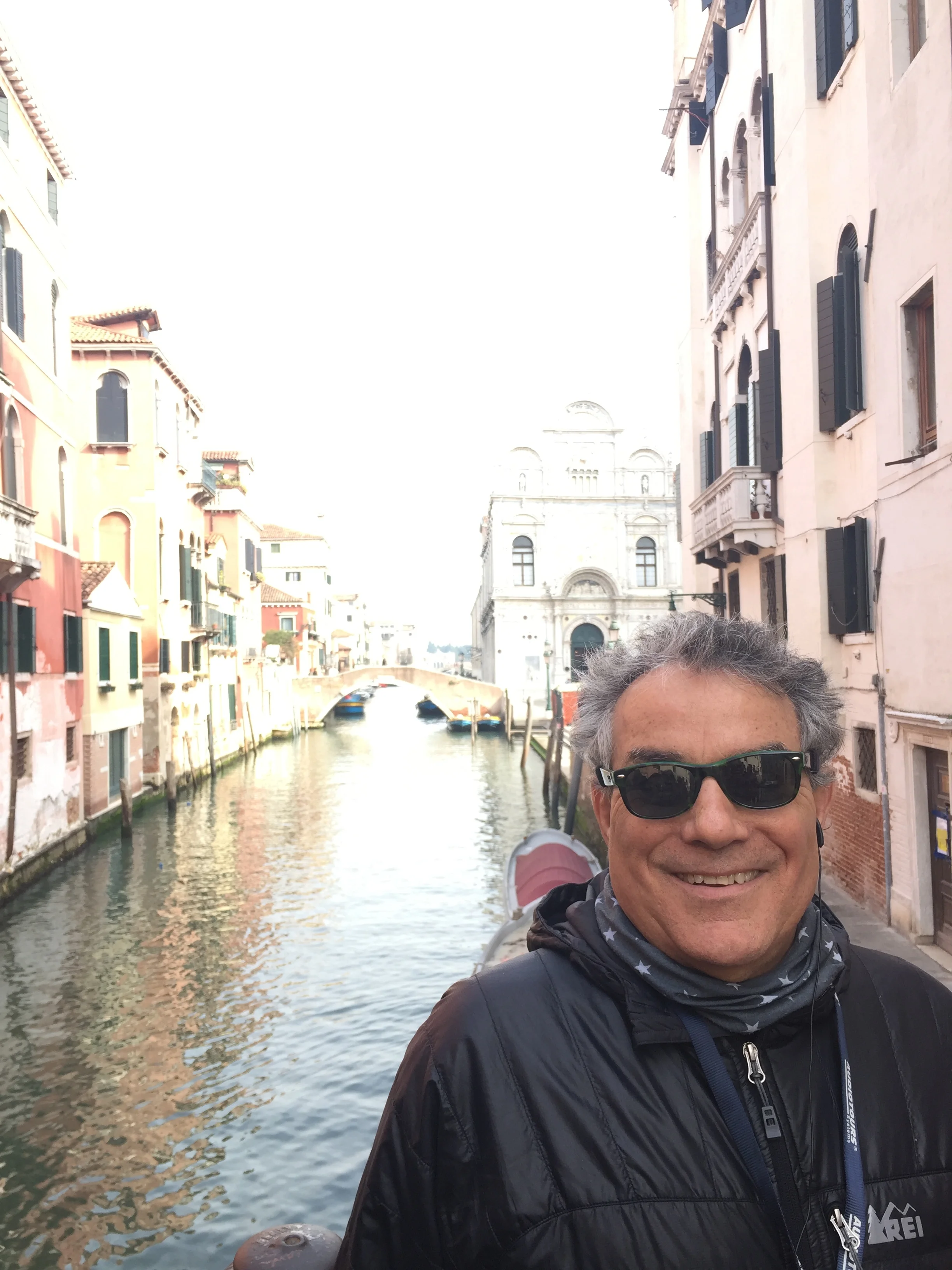Hi to all of the Frank and Janet Around the Planet readers! I am Staci, and my husband Teddy is Frank and Janet’s nephew. We recently joined Uncle Frank and Aunt Janet on their big adventure. We were asked to be a guest on the site and fill you all in on a couple of our travel destinations on our recent journey! We had so much fun with Frank and Janet and can’t wait to see where the rest of their adventure takes them!
Bratislava
On the boat
We decided to take the one-hour transfer by boat from Vienna, Austria to Bratislava, Slovakia. After a little research we came to the conclusion that the train station in Bratislava was a little too far out of the way for our short day trip to Bratislava. The Danube boat transfer was very comfortable and would drop us off in old town, where we wanted to be. It was our first time on the Danube, and even though it was a short trip, it was really enjoyable and relaxing.
Arriving in Bratislava felt different than our other Central European destinations. Bratislava felt more like Eastern Europe to all of us, perhaps a little less traveled. Bratislava is a smaller town, especially for a nations capital. The city was clean, however the buildings were not at tall or as grandiose as the prestigious Vienna we had just come from.
The old town was charming with cobblestone streets and well maintained architecture. We found a wonderful small cafe to have breakfast at while we waited for our free walking tour to start. This modern and artistic cafe had the best freshly made pastries and fresh squeezed juices.
Jana, a very energetic and outgoing young woman, led our walking tour. She was a Slovakian native and studied at a local university. If you’re like us you probably don't recognize the city of Bratislava for anything, maybe you have never even heard of it. Here are a few facts we learned on the tour about Slovakia and it's capital city, Bratislava. Slovakia was combined with Czech Republic until 1993, named Czechoslovakia. Jana was particularly proud to point out how peaceful the separation was in forming the now two countries, and the good relationship between the two countries, commenting that they get along great and only have a sports rivalry in which the Czech Republic usually has better teams. Czechoslovakia was under Nazi party influence in the 1940's and later the communist party until the late 1980's. We were able to see some of the communist influence in a few of the buildings and a large bridge over the Danube. Bratislava is the only national capital that borders two other countries (Austria and Hungary).
There might be one thing you recognize about Bratislava; the movie Hostel was set in Bratislava, although actually filmed in the Czech Republic. If you aren't familiar with the horror movie, the basic concept is American tourists travel to Bratislava, stay in a hostel and get chopped up into little pieces by the locals. Obviously just a movie but there was some serious damage that the movie caused. The year after the movie was released, tourism in Bratislava dropped by 70%. Locals were rightfully upset with how the movie depicted their country to be underdeveloped and have high crime. We found the city to be very charming and nothing like how it was depicted in the film. The positive note is now tourism in Bratislava continues to rise.
We had a wonderful traditional Slovakian lunch, the highlight was a dish called Bryndzove Halusky, which is a type of potato pasta with cheese. The dish was very rich and filling similar to macaroni and cheese. A must try if you ever go to Slovakia! After a day of walking around we had a relaxing boat ride back on the Danube to Vienna.
We had a wonderful traditional Slovakian lunch, the highlight was a dish called Bryndzove Halusky, which is a type of potato pasta with cheese. The dish was very rich and filling similar to macaroni and cheese. A must try if you ever go to Slovakia! After a day of walking around we had a relaxing boat ride back on the Danube to Vienna.
Salzburg
Salzburg, Austria is usually known for two things; the birthplace of Mozart and the setting for the movie The Sound of Music. Aunt Janet suggested we watch The Sound of Music before heading to Salzburg, so the prior two nights we watched the movie. We split the film viewing over two nights, as it is a nearly 3 hour-long movie. It was Teddy and my first time seeing the movie. We were glad to have watched it because for the next several days we sang and hummed the songs obnoxiously. Getting the songs stuck in Aunt Janet's head became sort of a fun game.
The day trip to Salzburg was a full day. We took a round-trip bus from Vienna. Including rest stops it was about 4 hours each way. Salzburg is across the country from Vienna and only 5 miles from the boarder of Germany. The Mountains and snow flurries created a beautiful backdrop for this enchanting city.
During our walking tour of the city, we really enjoyed spotting the filming locations of The Sound of Music. We went into the Salzburg Cathedral, the church where Mozart was baptized. It was very beautiful. We even managed to grab the largest soft pretzel we had ever seen about half way through the walk, it did not disappoint. The highlight of the day was the view on top of Hohensalzburg Fortress. We rode the funicular up the mountain to the fortress and then climbed several flights of stairs, but it was worth it to see the city below.
We must say that throughout the trip we were impressed with Uncle Frank and Aunt Janet's minimalist ways, their commitment to grocery shopping (which can be the last thing you want to do after a long day of relocating), delicious cooking in the Airbnb's we stayed in, research of the places they visit, and that they hardly ever seem to tire. Day after day of traveling and moving from one place to the next and they are still ready for more. They are really inspiring and we are so glad to have spent the time with them! Four countries in ten days with them and we were totally exhausted but our memories of the fun we had will be something we will always remember.



